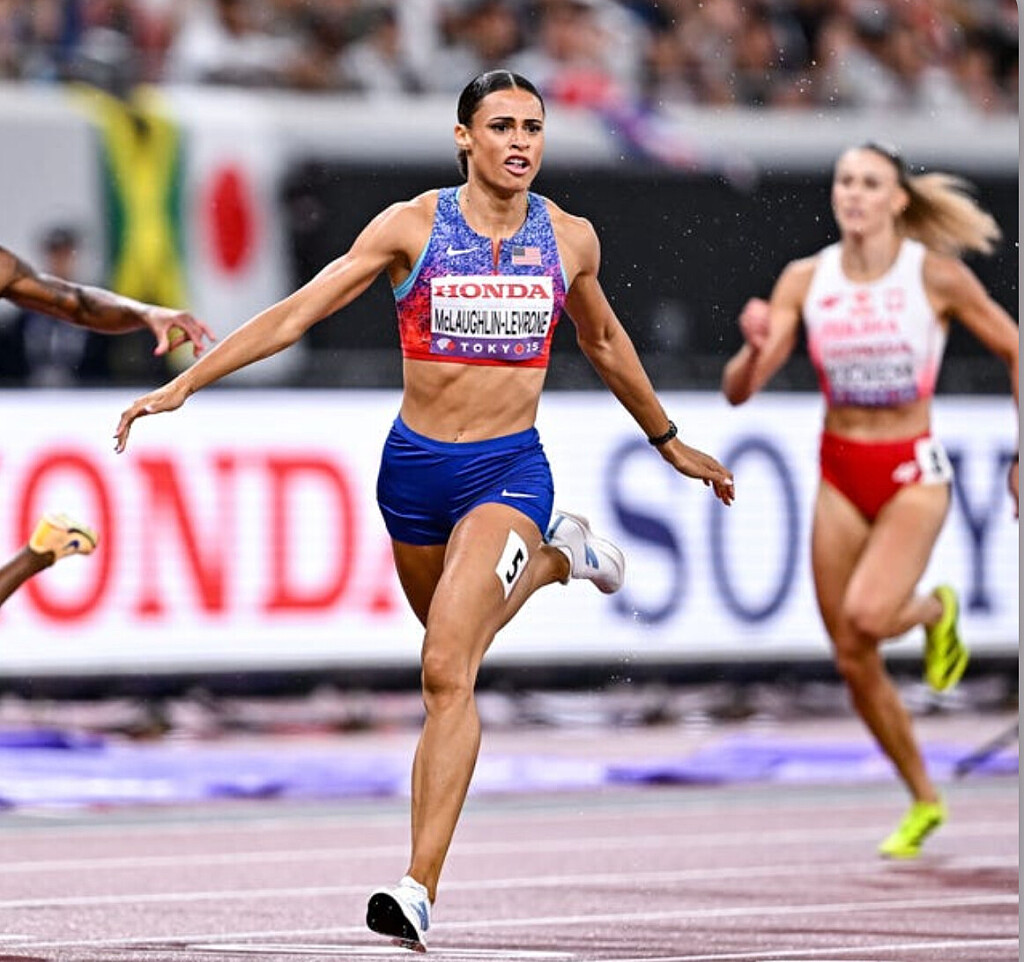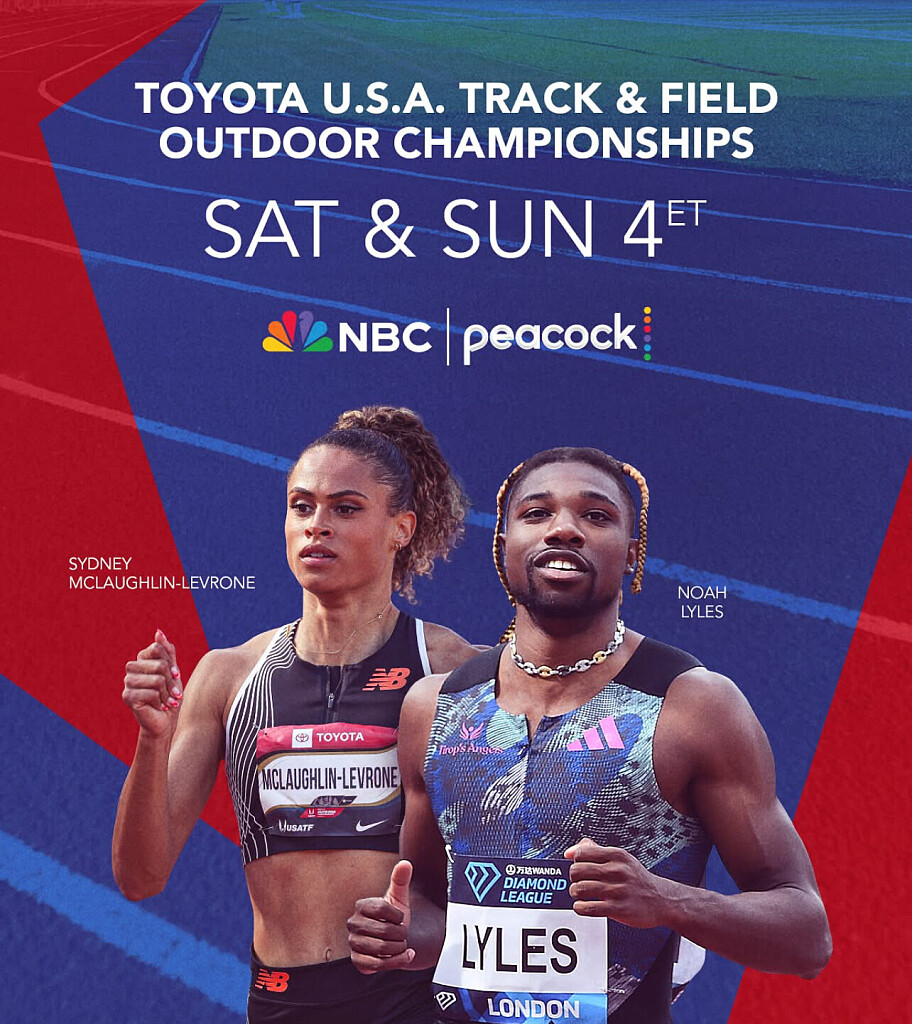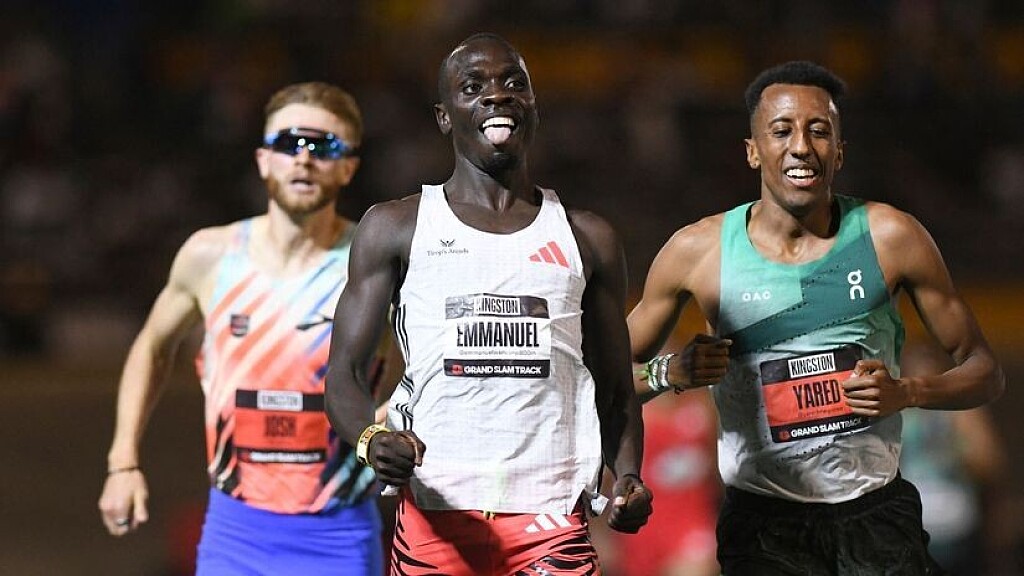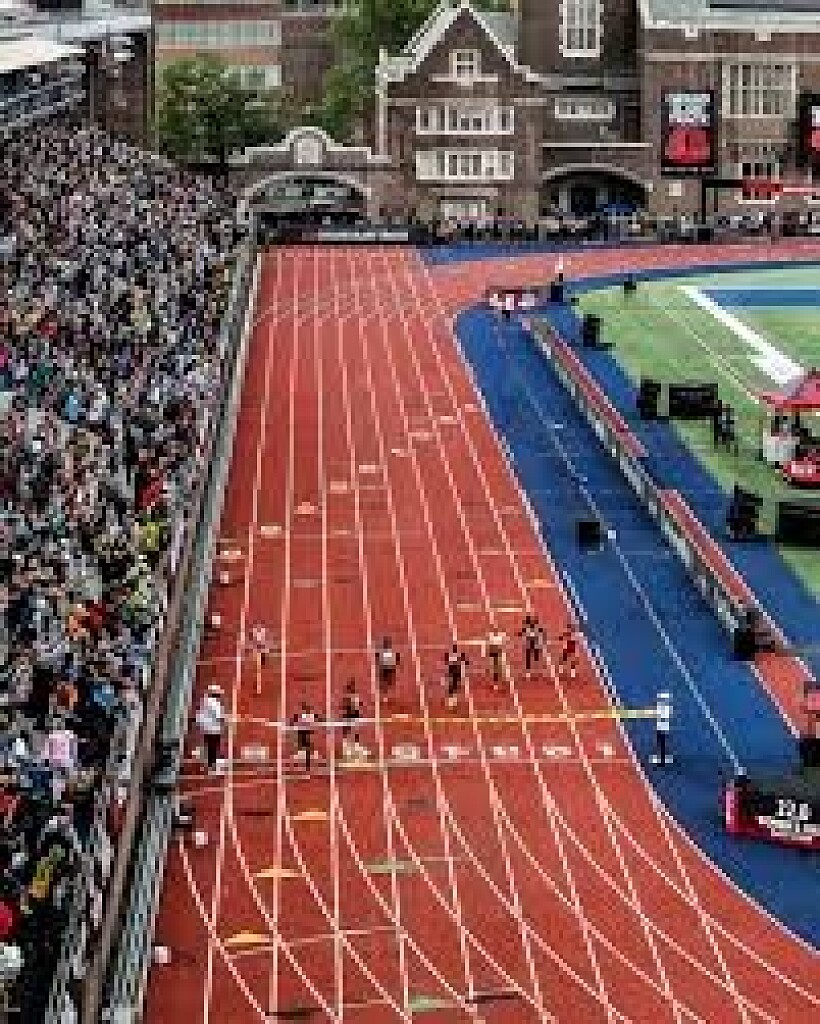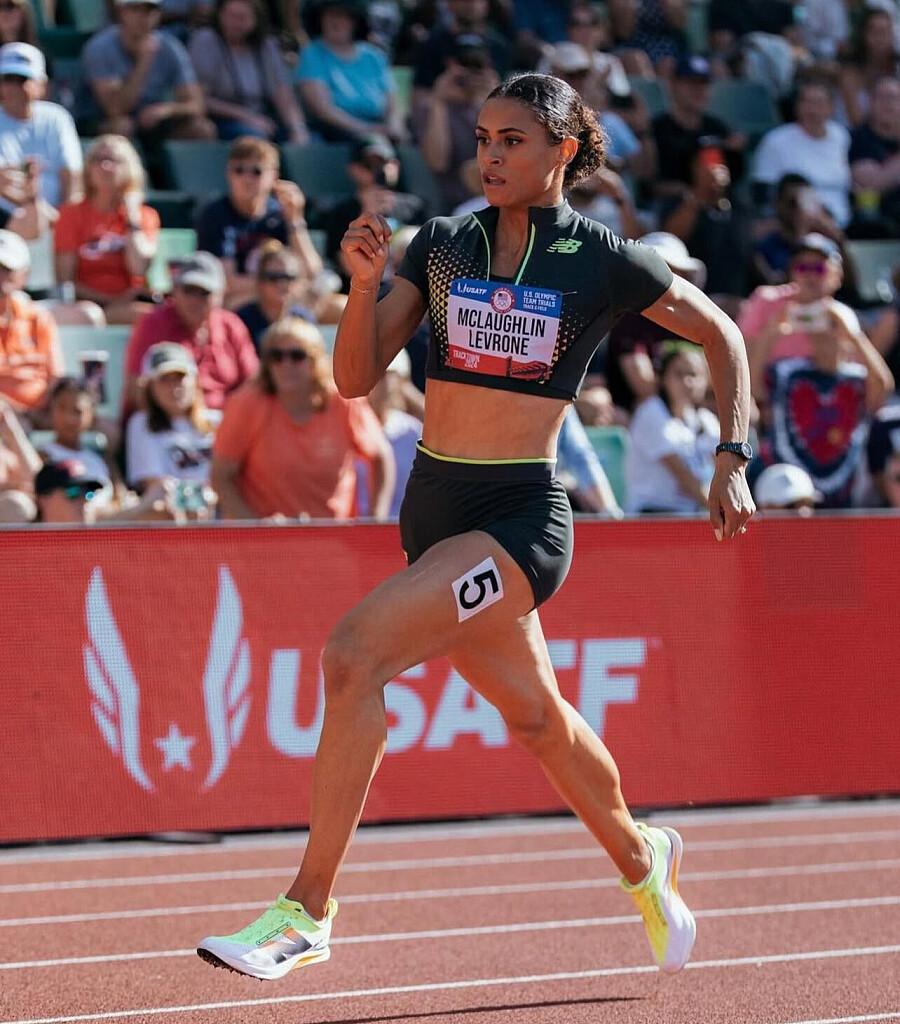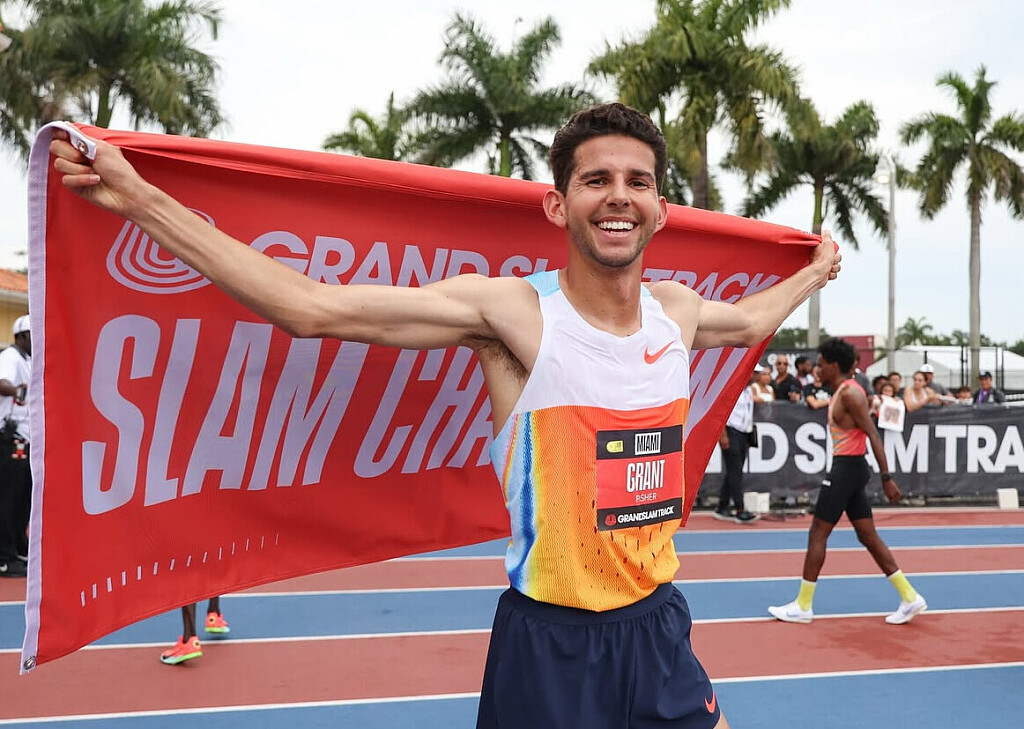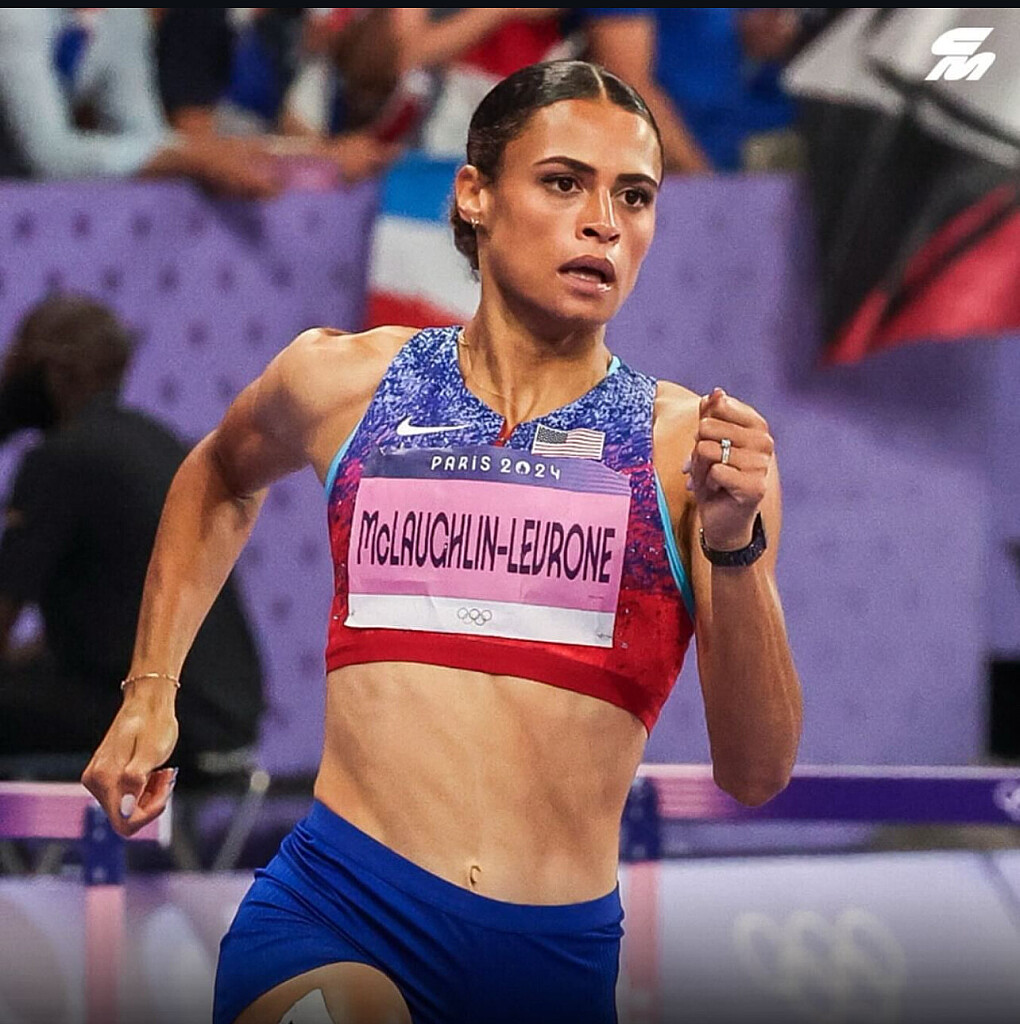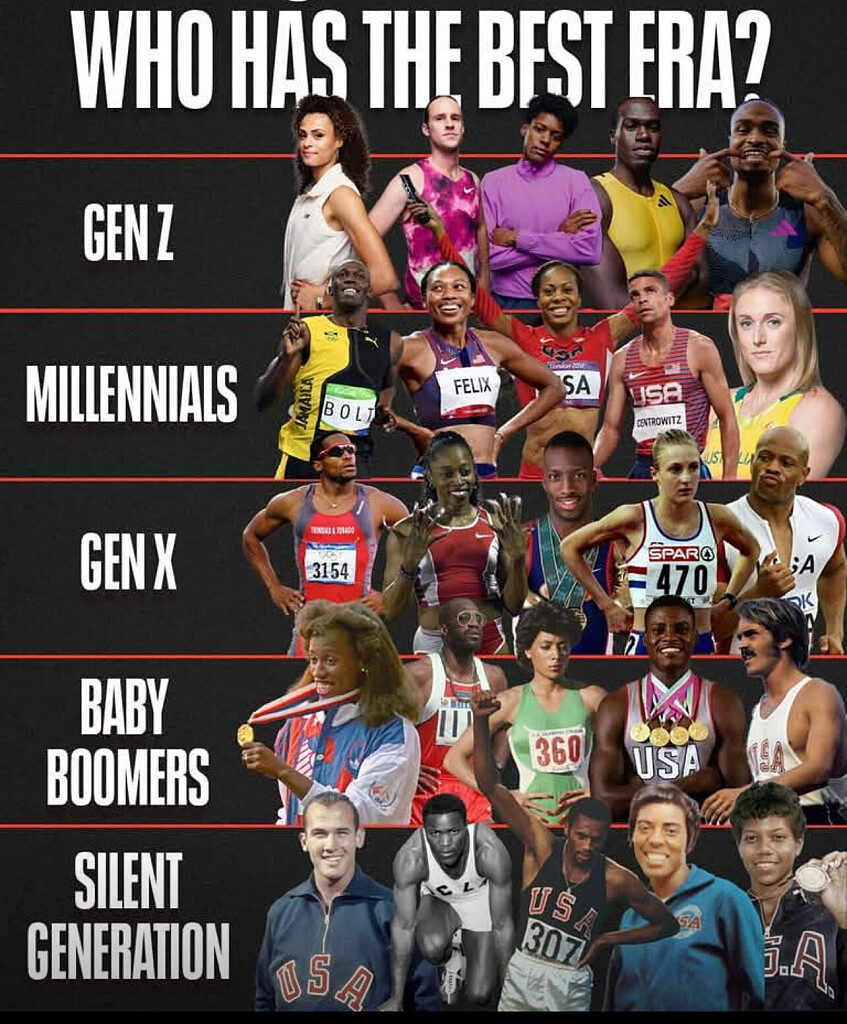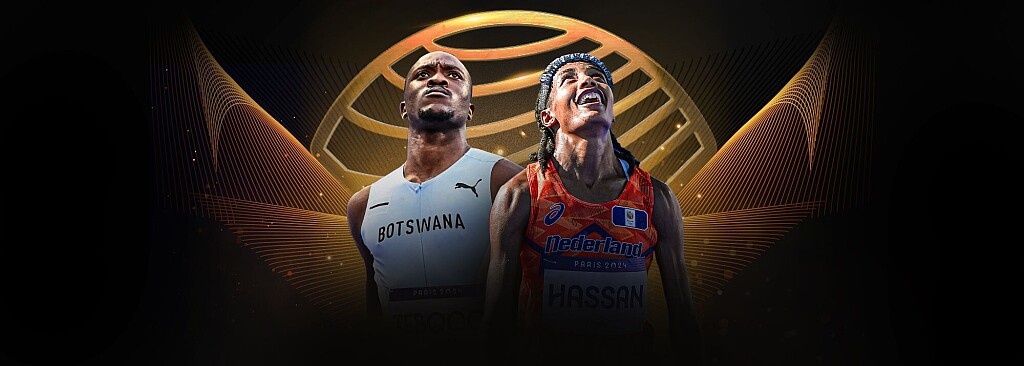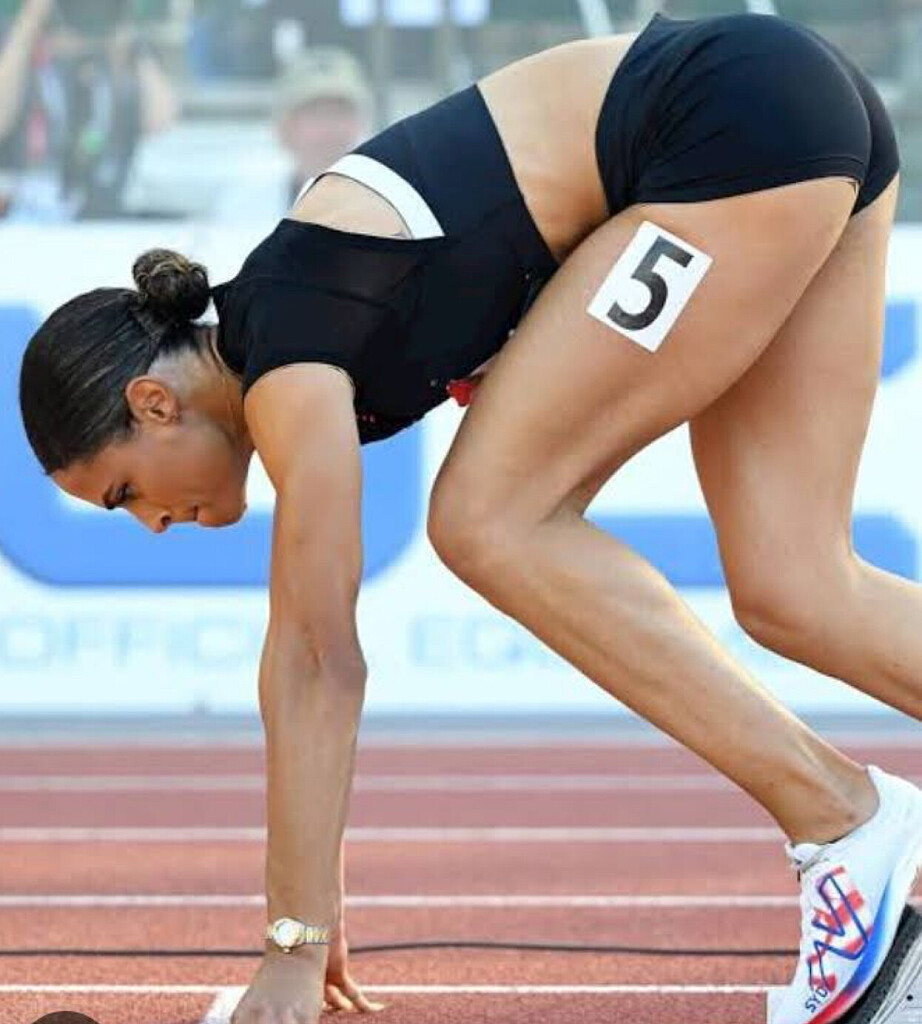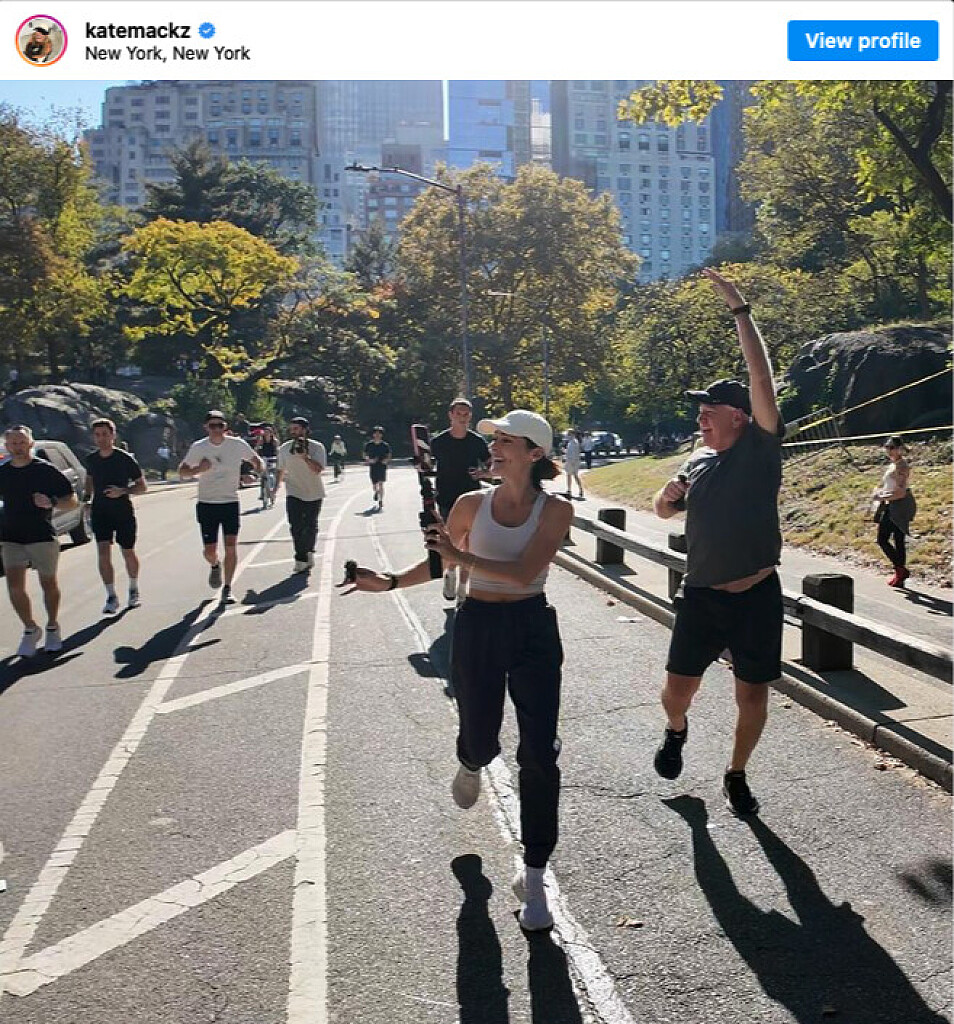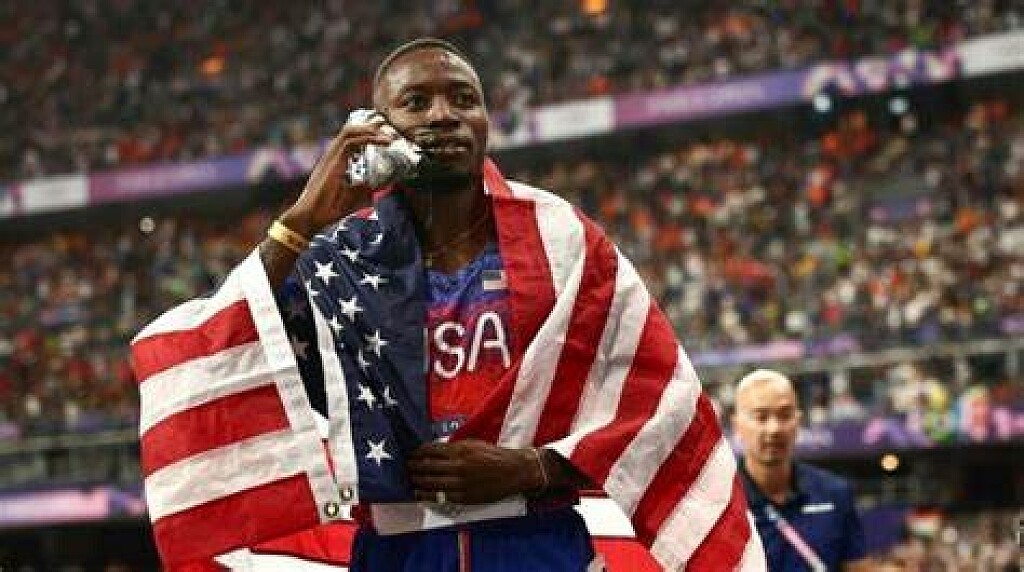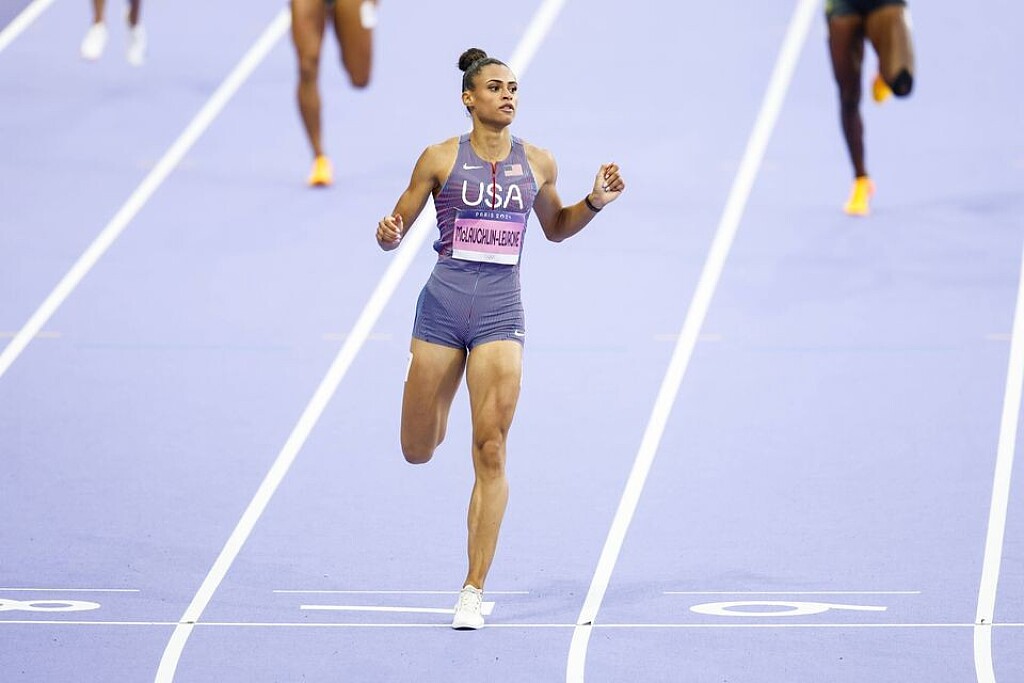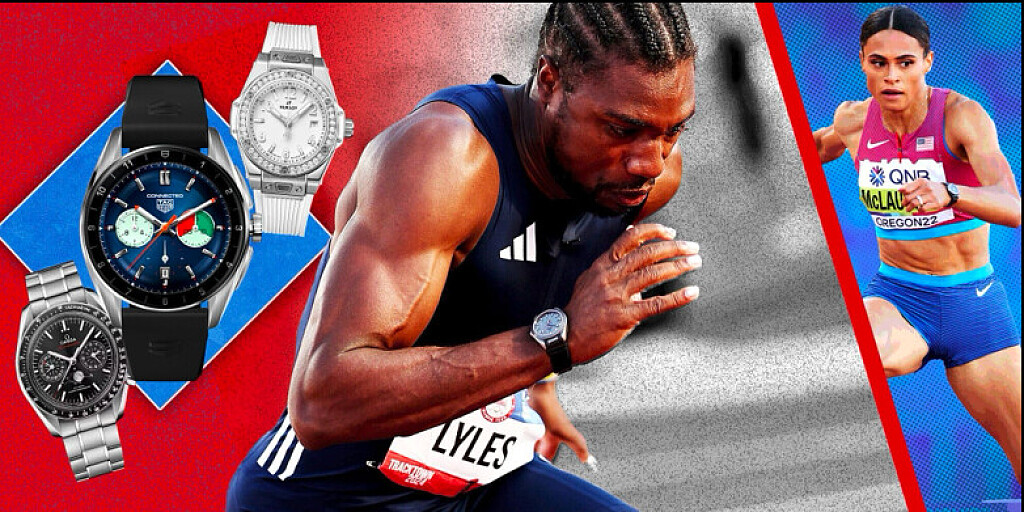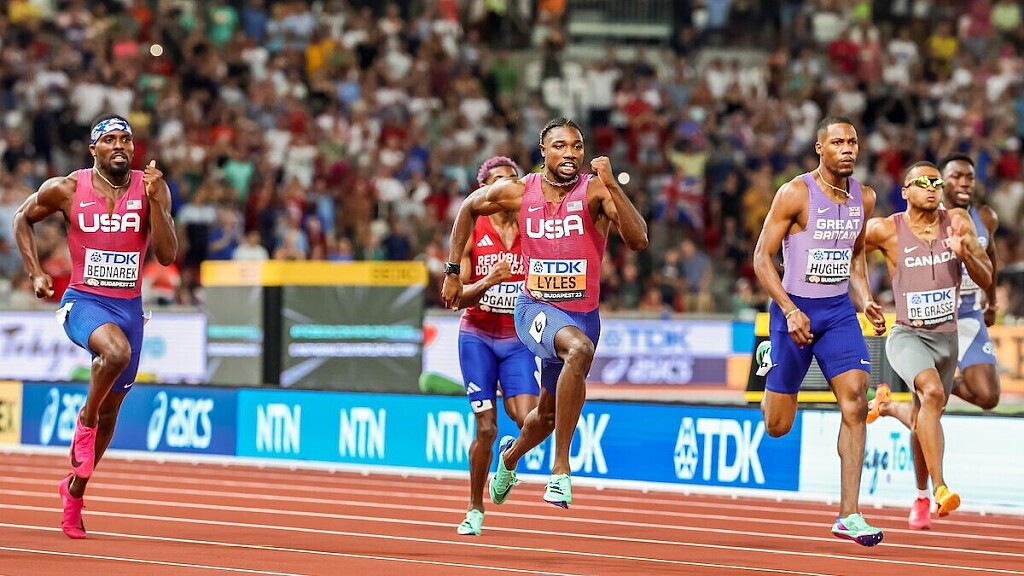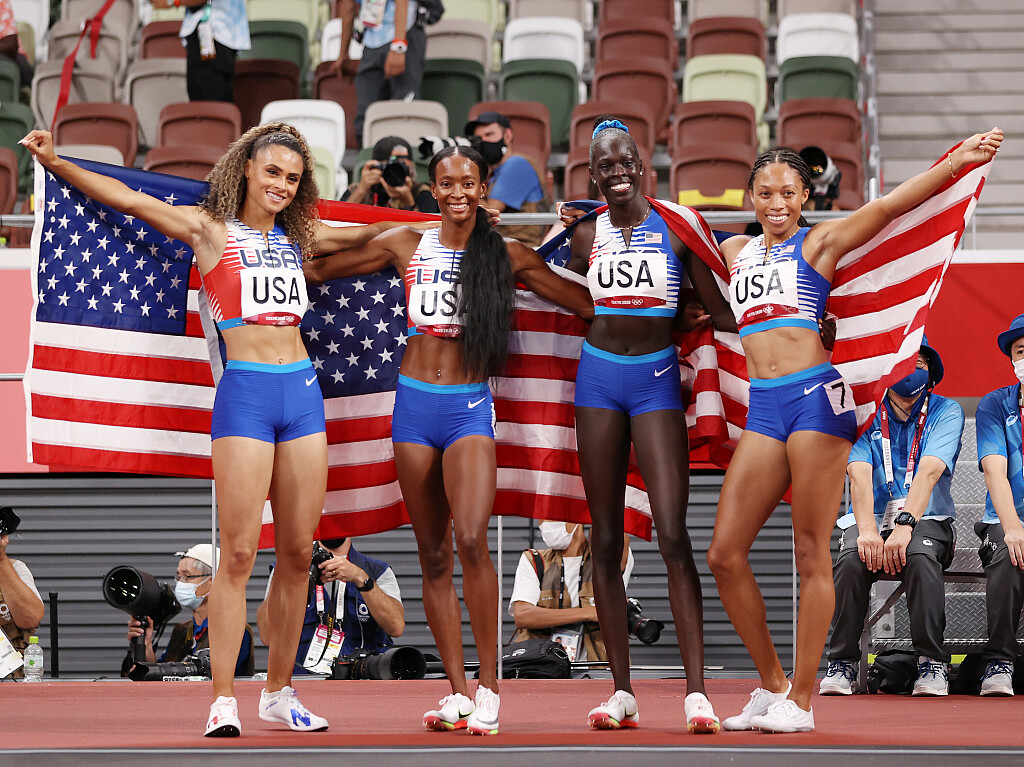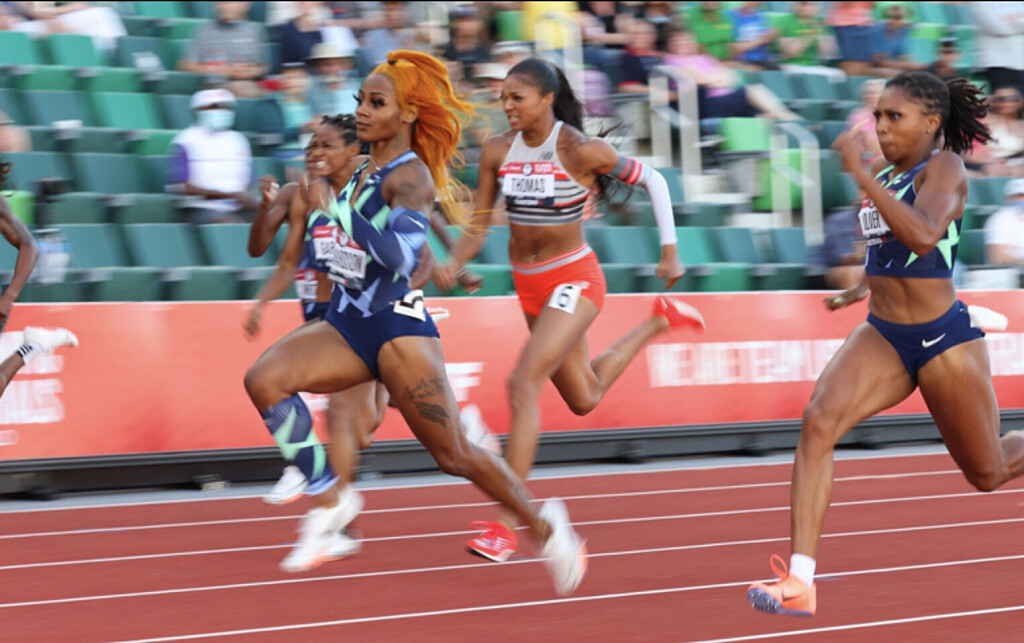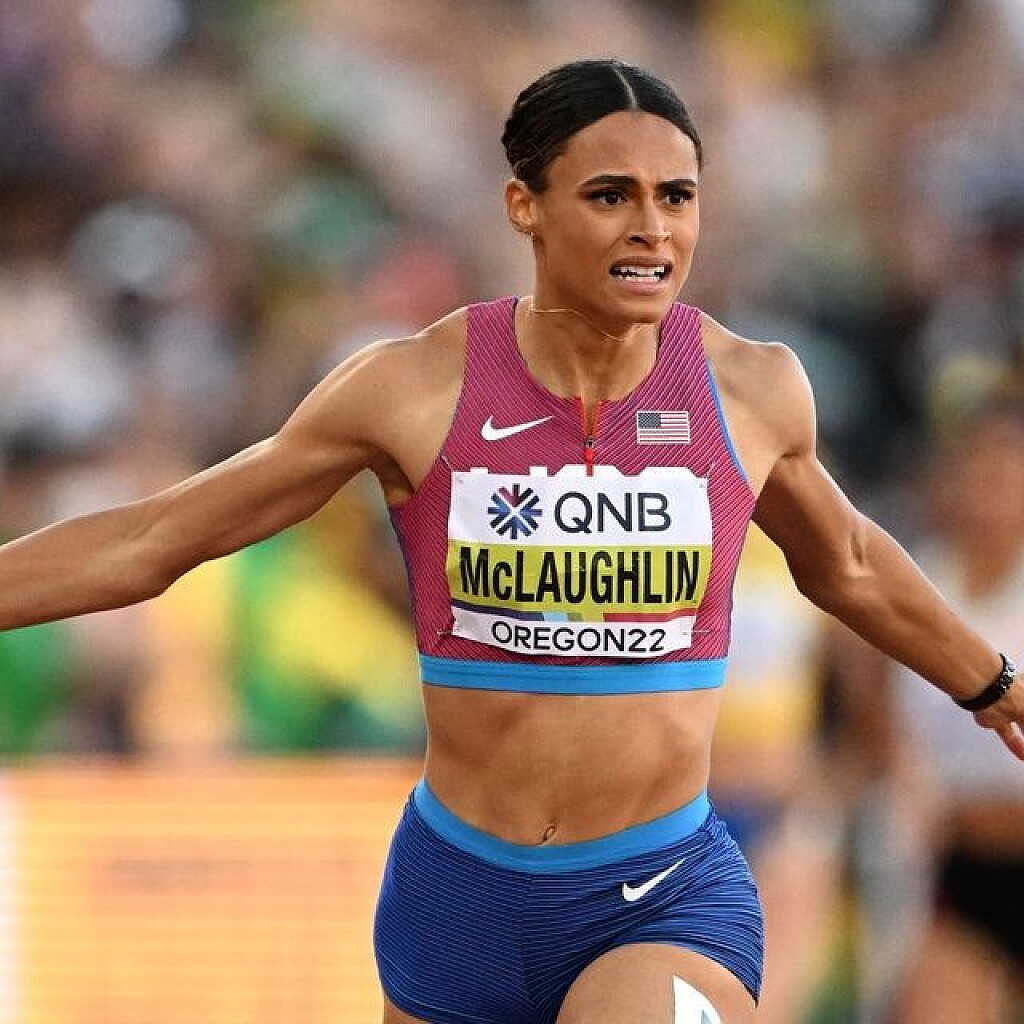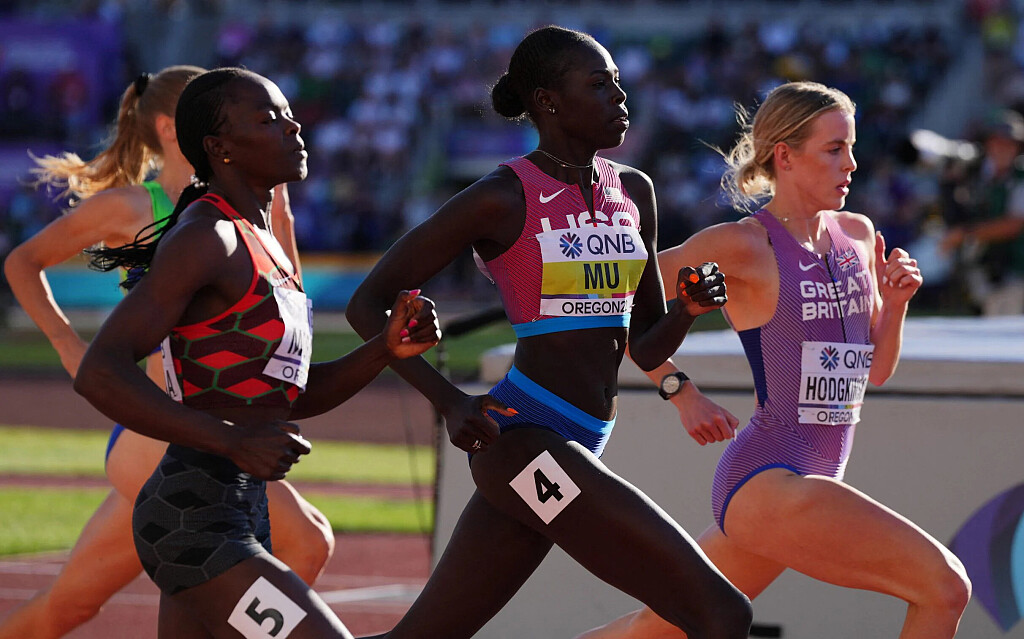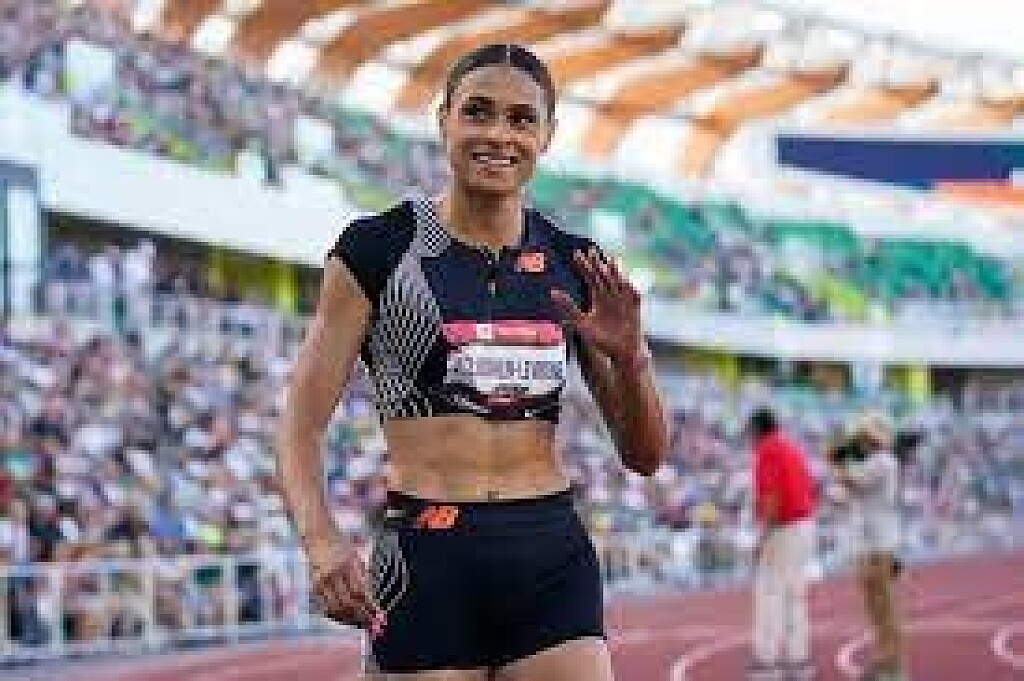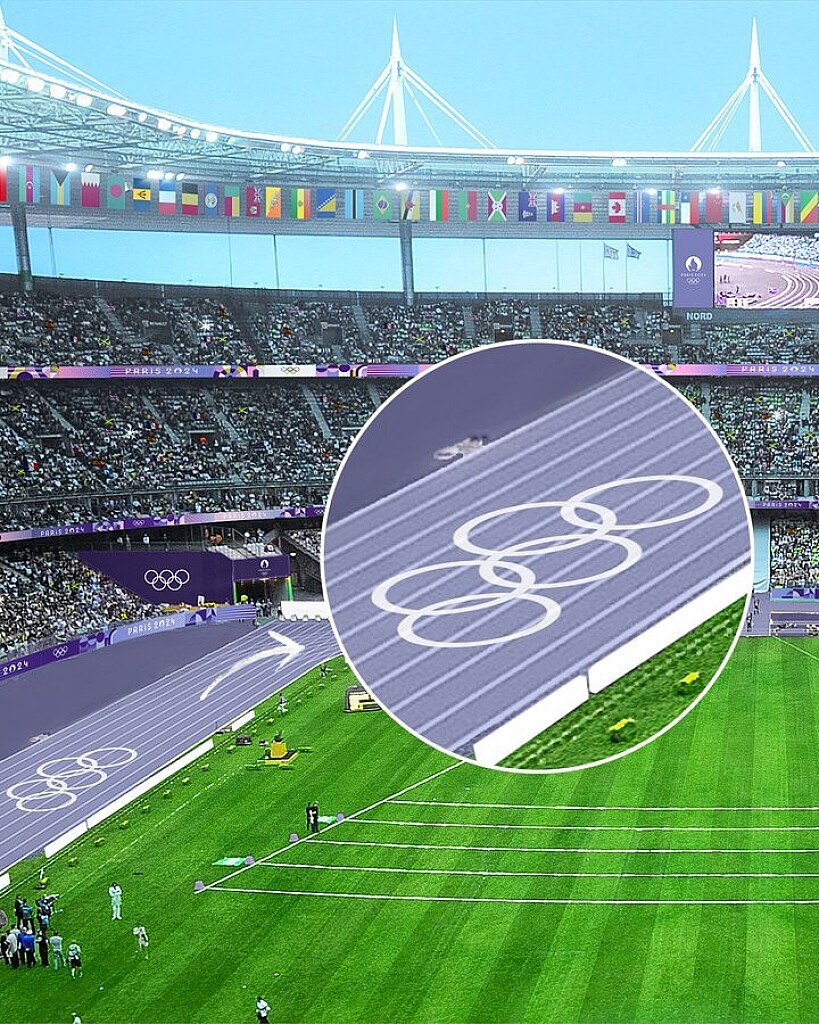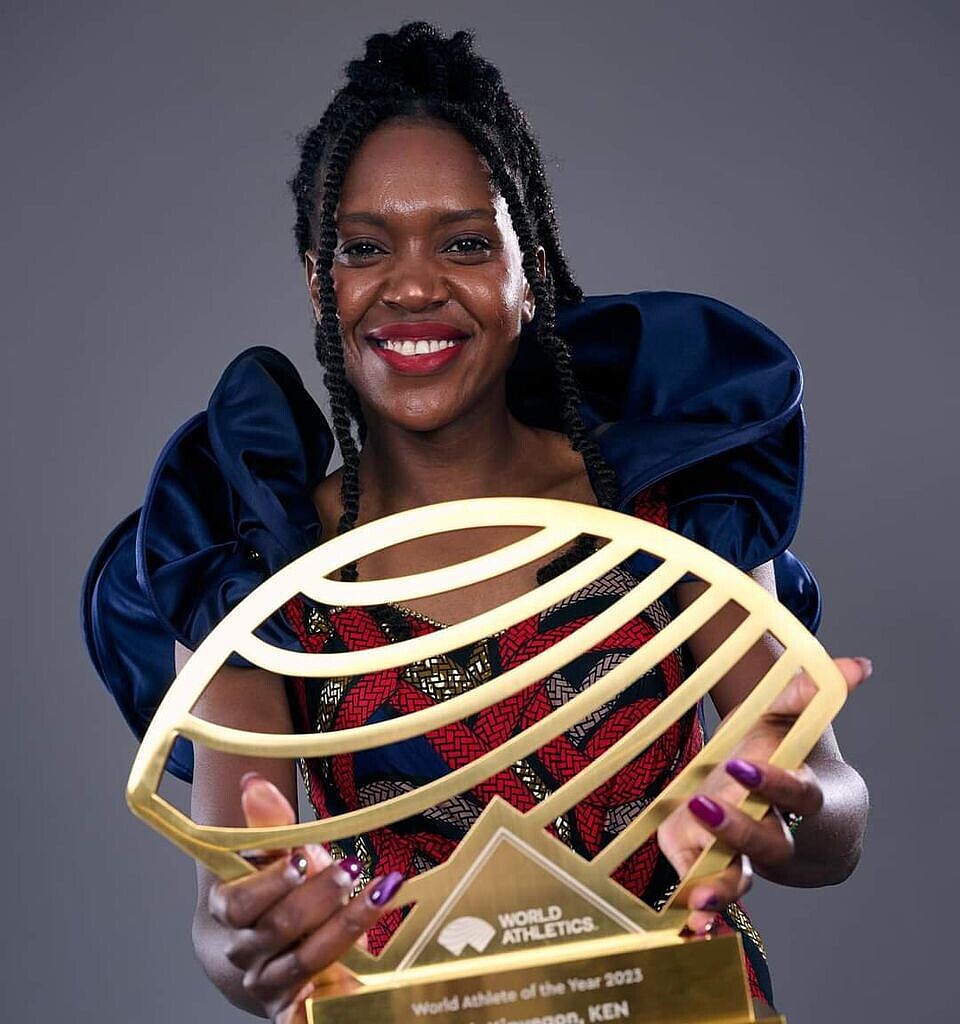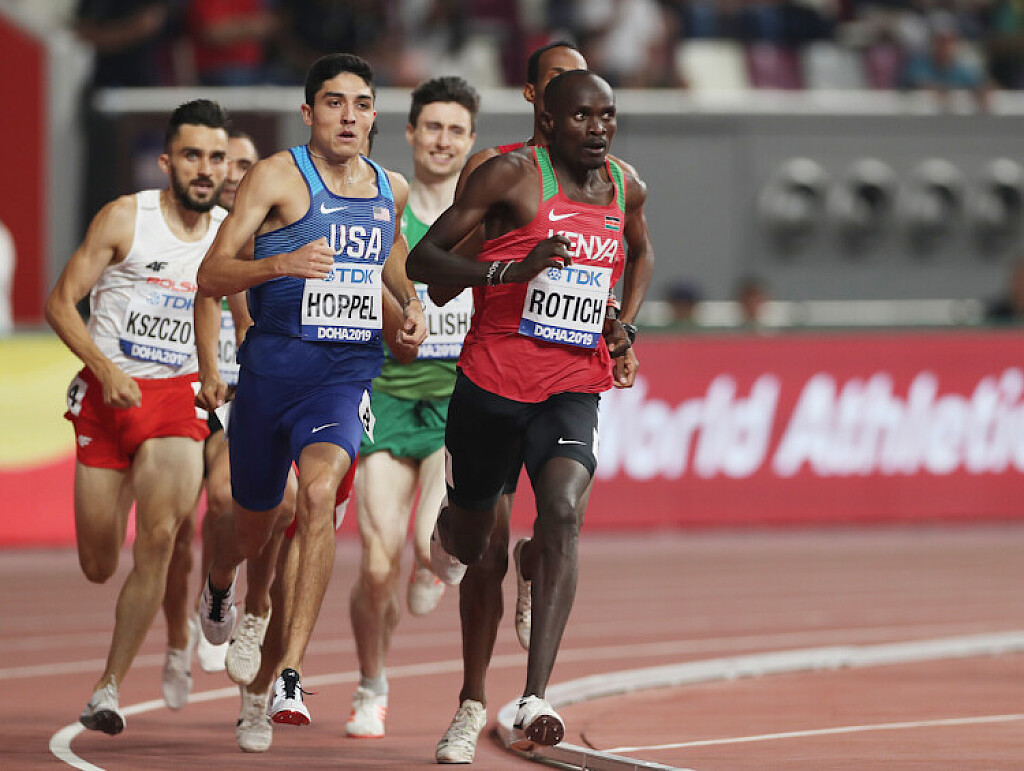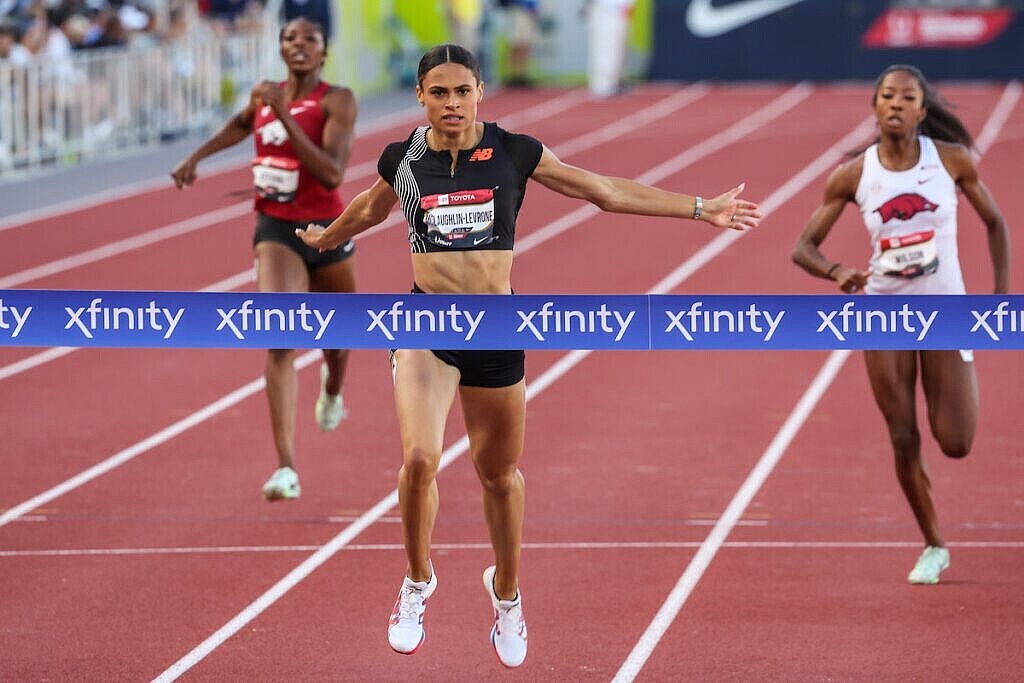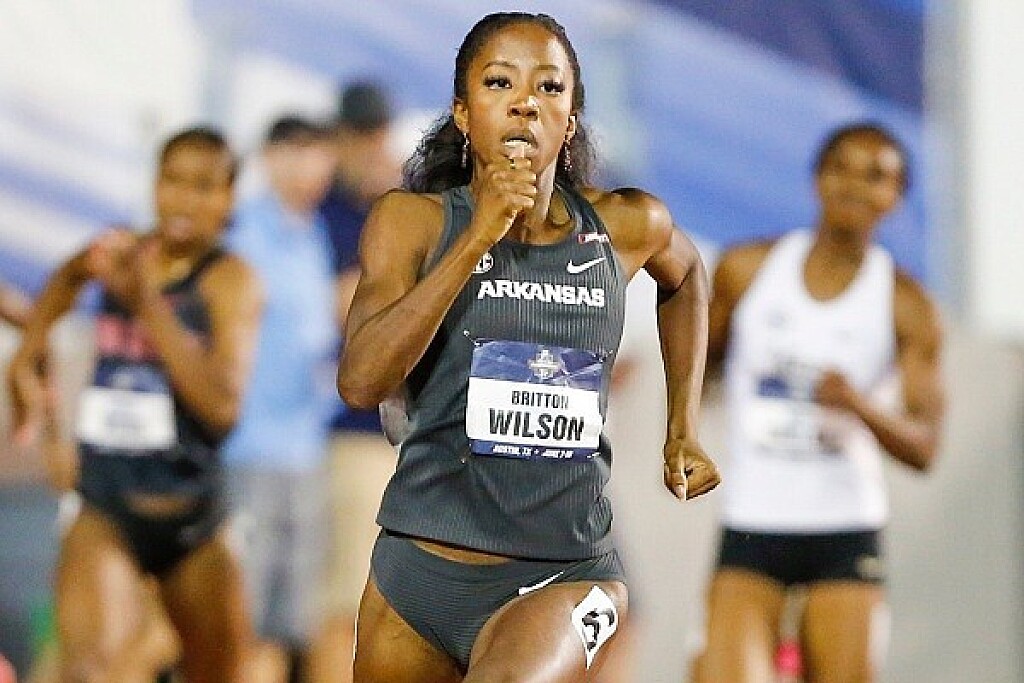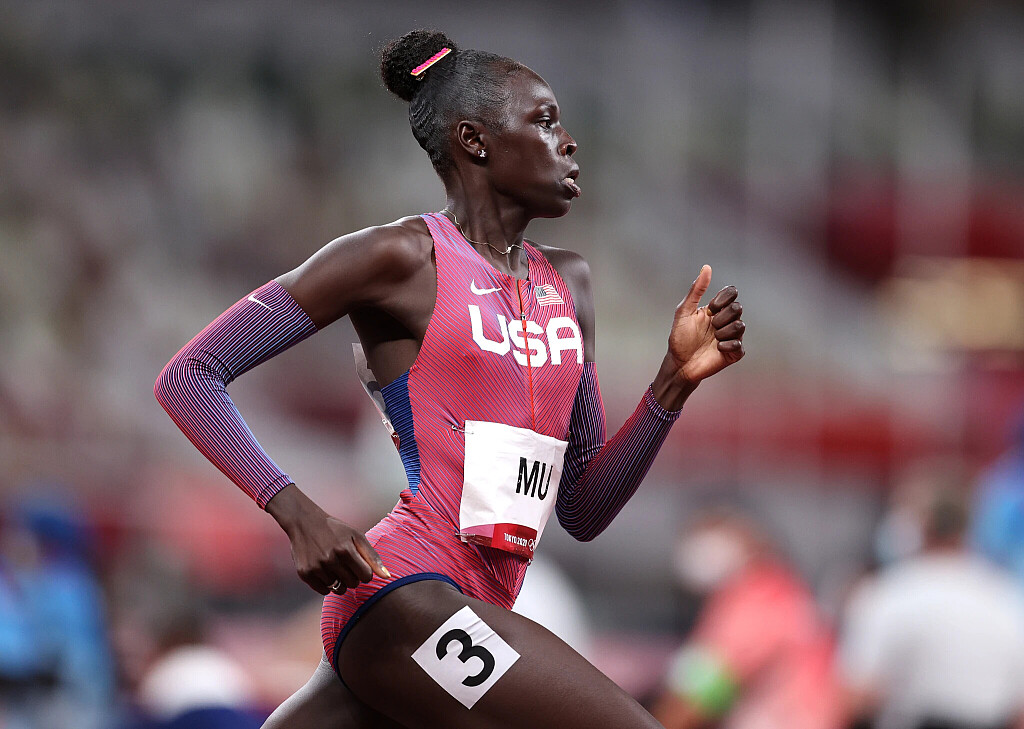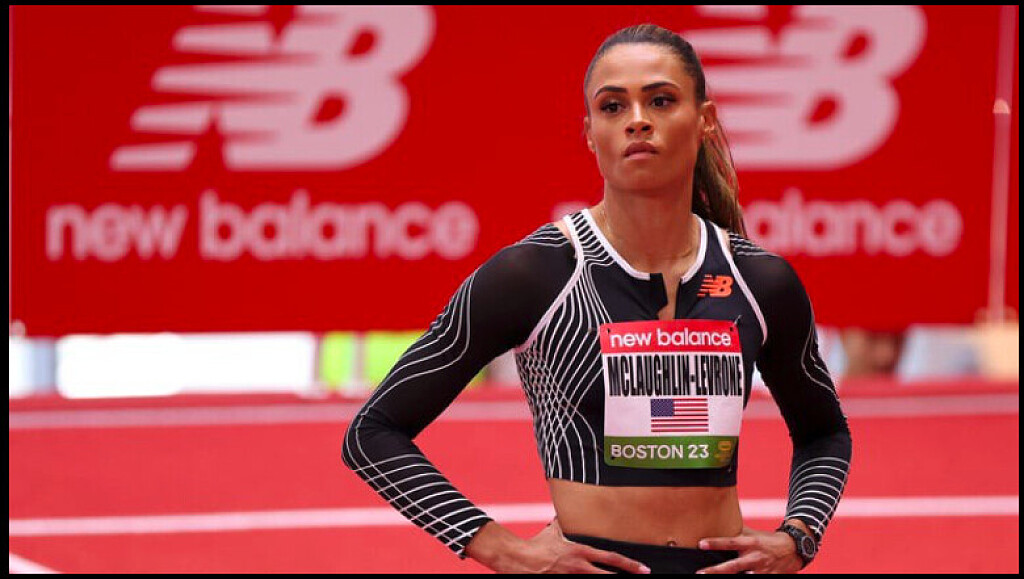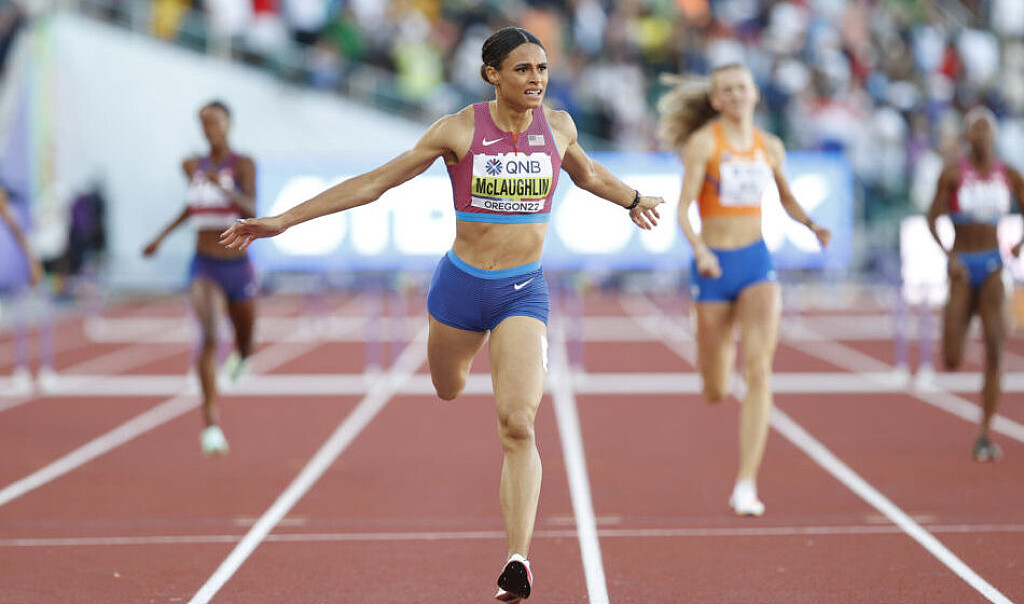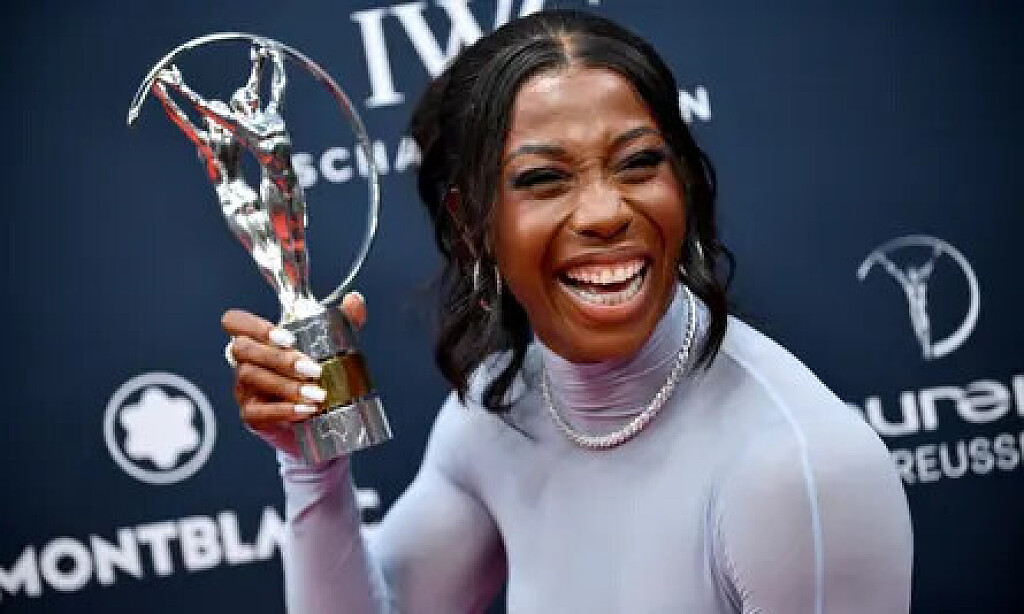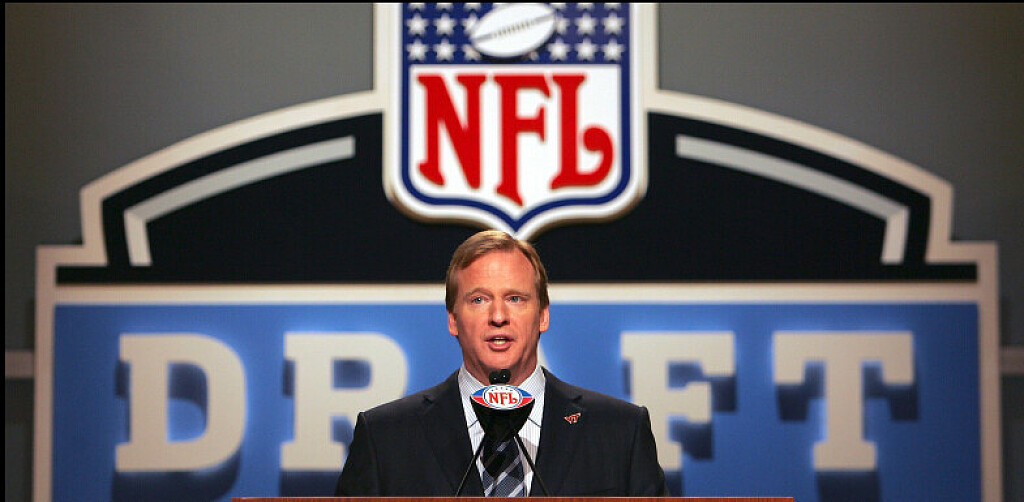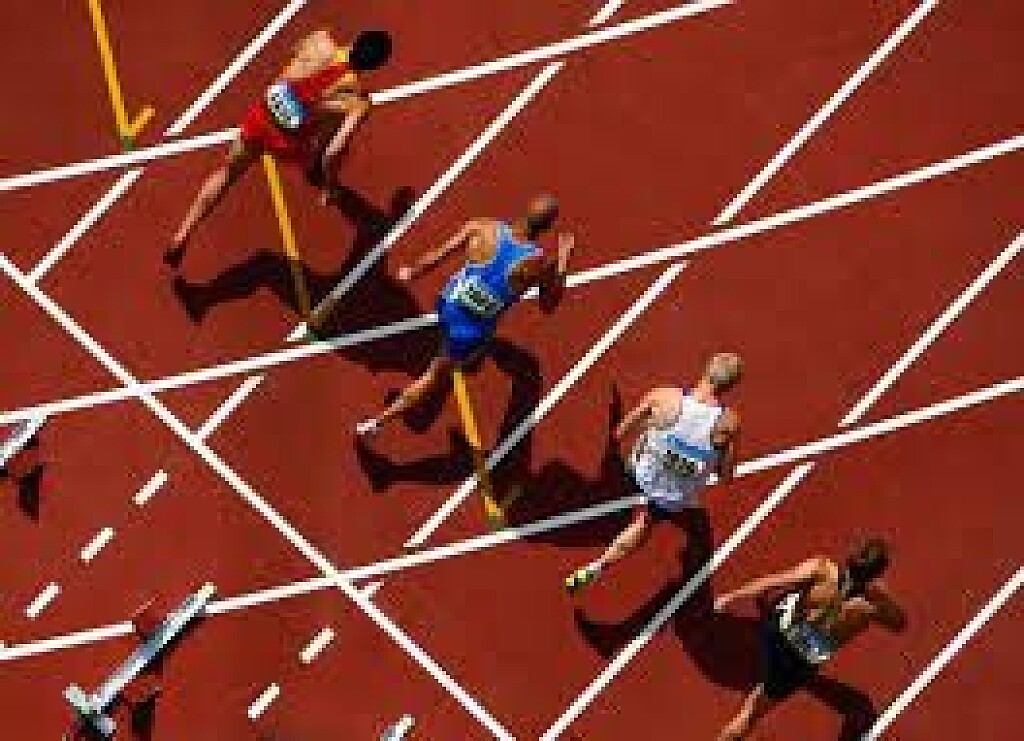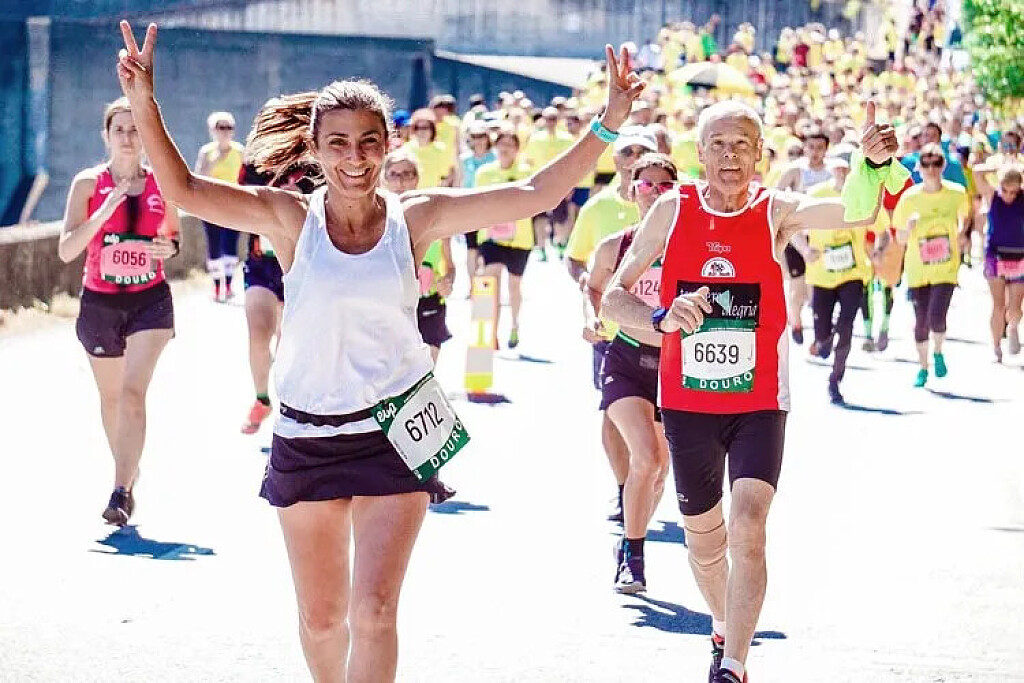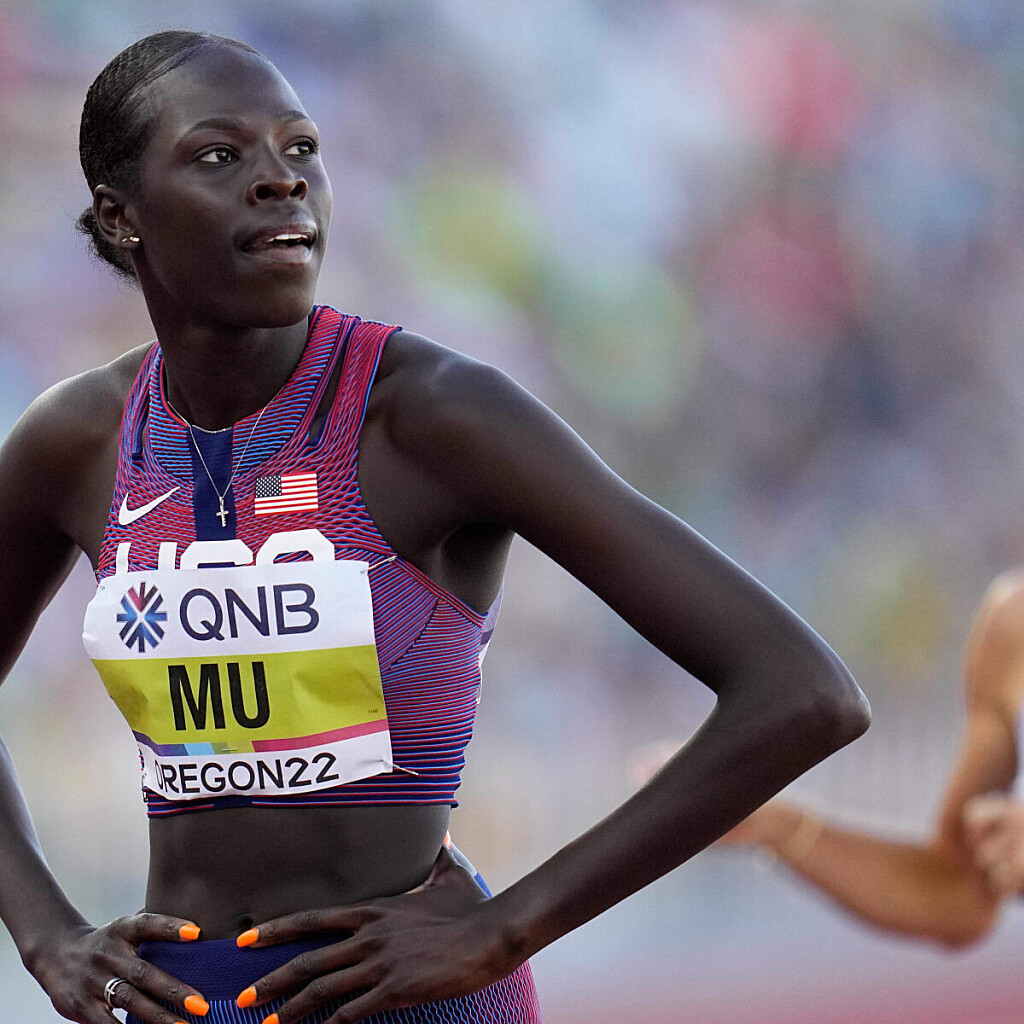Running News Daily
Running News Daily is edited by Bob Anderson. Send your news items to bob@mybestruns.com Advertising opportunities available. Train the Kenyan Way at KATA Kenya and Portugal owned and operated by Bob Anderson. Be sure to catch our movie A Long Run the movie KATA Running Camps and KATA Potato Farms - 31 now open in Kenya! https://kata.ke/
Index to Daily Posts · Sign Up For Updates · Run The World Feed
Articles tagged #Sydney McLaughlin-Levrone
Today's Running News
Sydney McLaughlin-Levrone Named Women’s Track Athlete of the Year
Sydney McLaughlin-Levrone has been named the Women’s Track Athlete of the Year for 2025 by World Athletics, capping off a season where she once again redefined what excellence looks like in the 400 meters.
Already one of the most gifted athletes in the sport, McLaughlin-Levrone delivered a dominant year highlighted by her 400m world title and a world-leading performance in the flat 400m—a rare double few athletes have even attempted. Her speed, form, and command over both the hurdles and the flat event continue to elevate her into all-time territory.
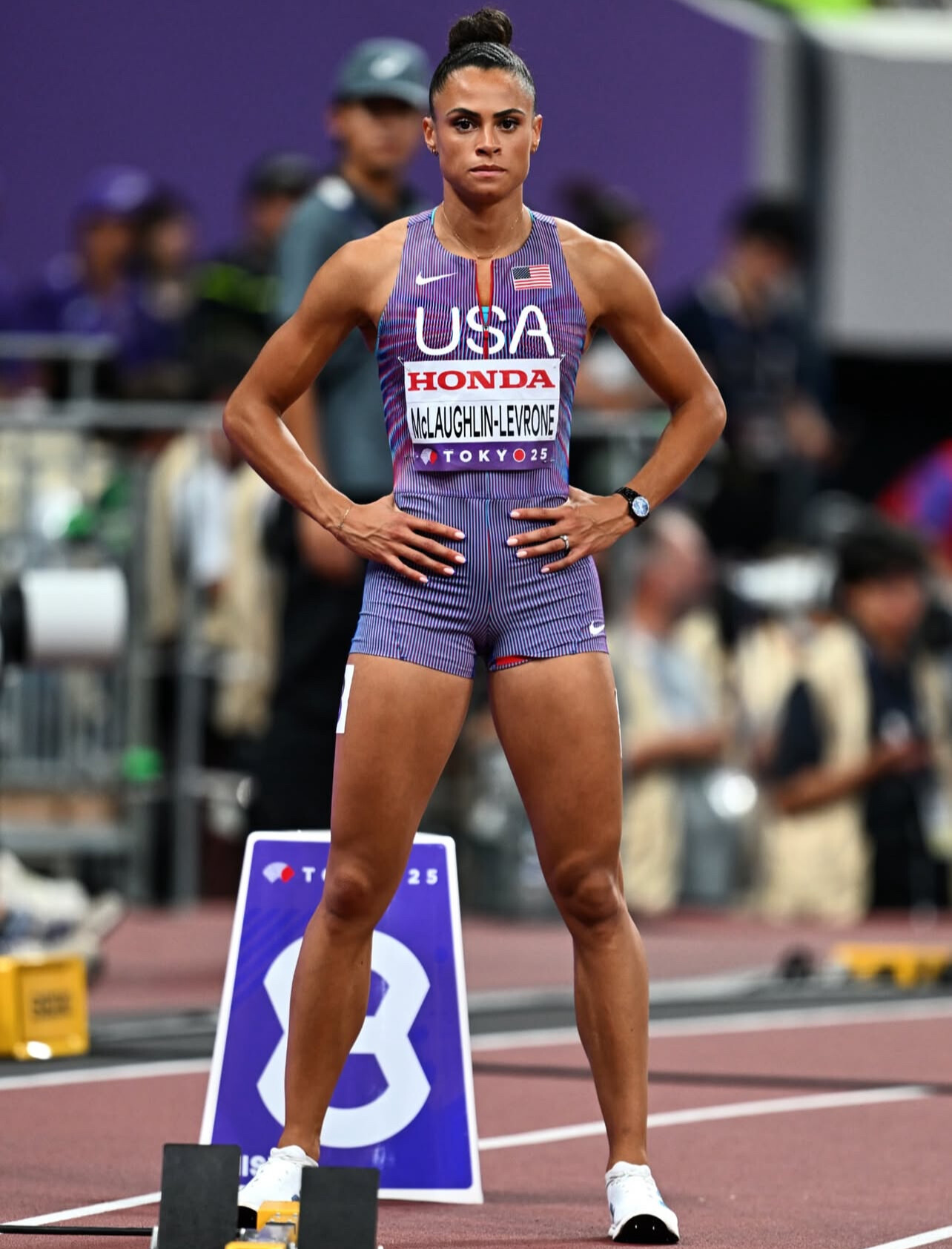
McLaughlin-Levrone’s season was not simply about winning races. It was about how she won them—control from the opening strides, unmatched top-end speed, and the kind of precision that has become her signature. Every time she stepped on the track, she looked untouchable.
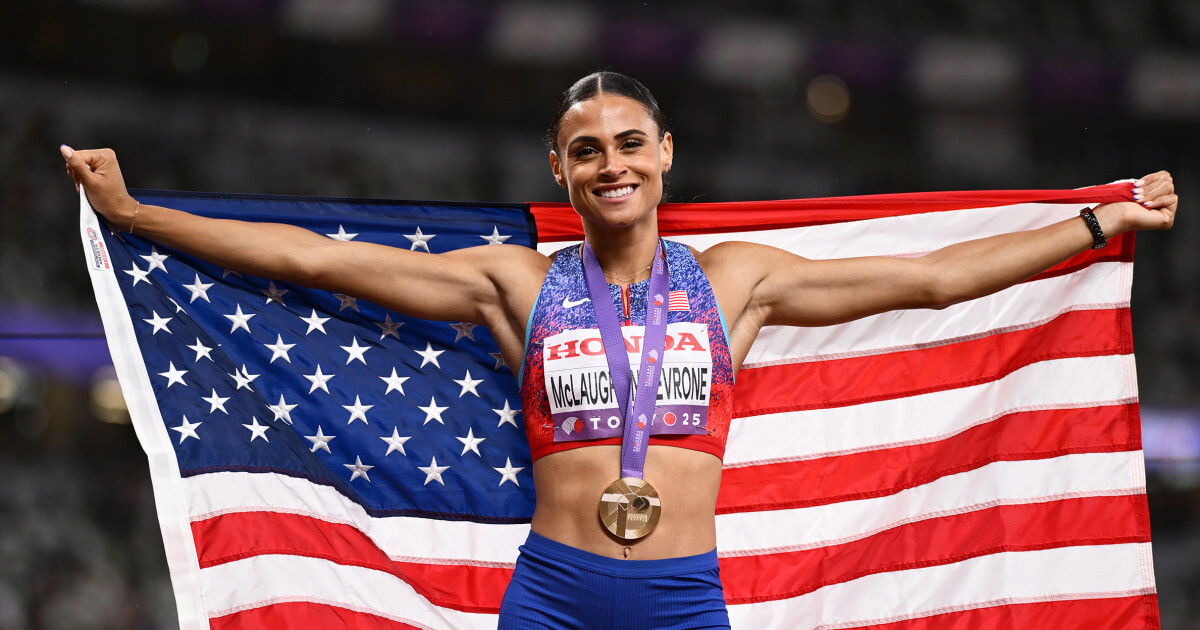
Her rivalry with Dutch star Femke Bol fueled global attention throughout the year, but when it came to the biggest stage, McLaughlin-Levrone delivered once again.
With this award, she solidifies her place as one of the defining athletes of her generation—and one of the most complete 400m runners the sport has ever seen.
by Boris Baron
Login to leave a comment
Track’s Biggest Stars Return to Hayward Field for U.S. Championships
Eugene, Oregon – The stage is set for another electrifying weekend at iconic Hayward Field, as the Toyota U.S.A. Track & Field Outdoor Championships take place this Saturday and Sunday at 4 p.m. ET, airing live on NBC and Peacock.
Some of the sport’s biggest stars will be headlining the meet, including Sydney McLaughlin-Levrone and Noah Lyles, two of America’s premier track and field athletes.
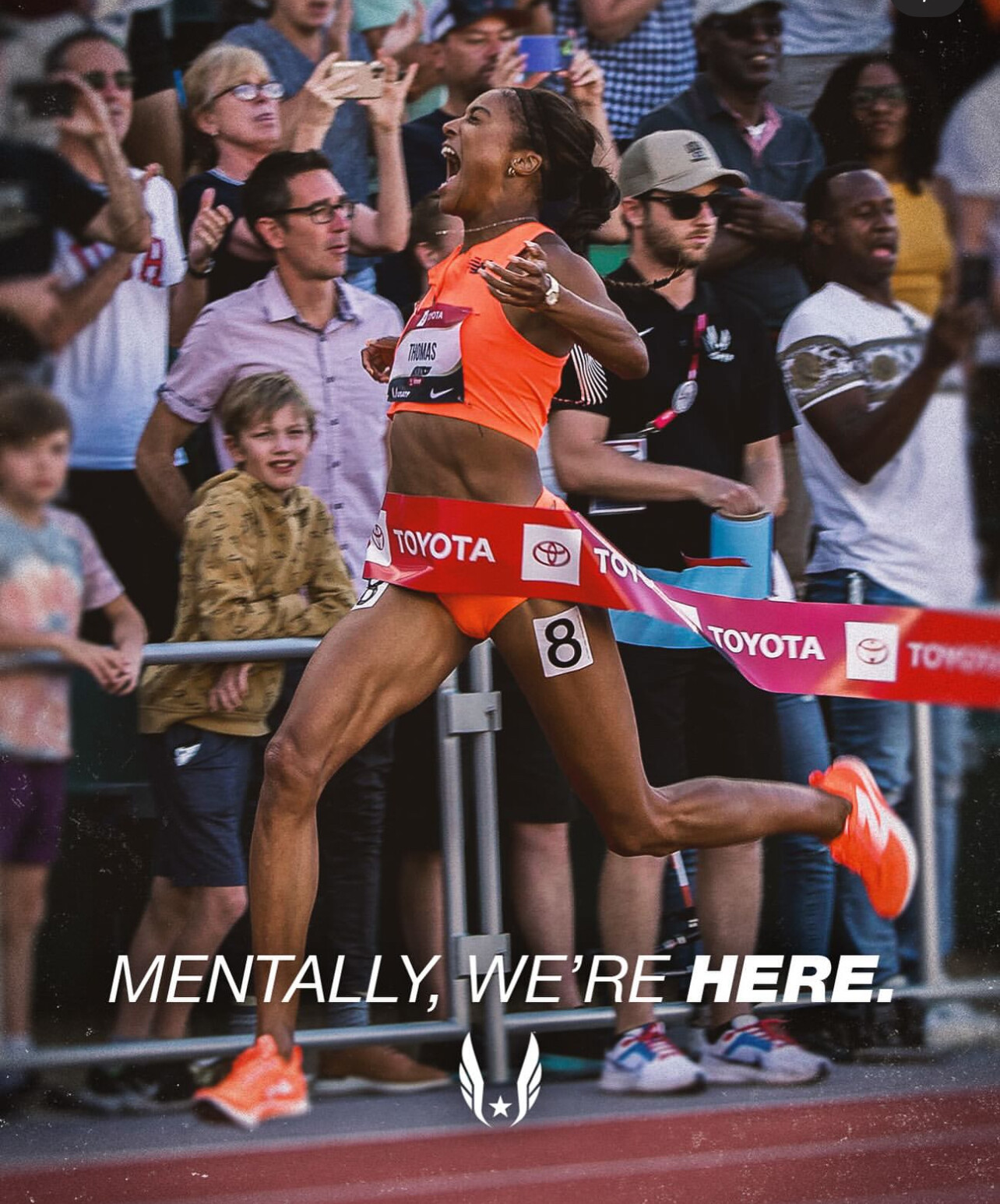
McLaughlin-Levrone, the reigning Olympic and World Champion in the 400m hurdles, is returning to the national spotlight after a strategic training and race schedule this season. Known for her graceful power and impeccable technique, Sydney has already redefined what’s possible in her event—shattering the world record multiple times. Fans are eager to see whether she’ll contest the 400m flat or return to the hurdles in Eugene.
On the men’s side, all eyes are on Noah Lyles, the reigning World Champion in the 100m and 200m. Lyles has made it clear he’s aiming for greatness this year, with both Olympic gold and world records on his radar. His recent performances on the Diamond League circuit suggest he’s peaking at the right time.
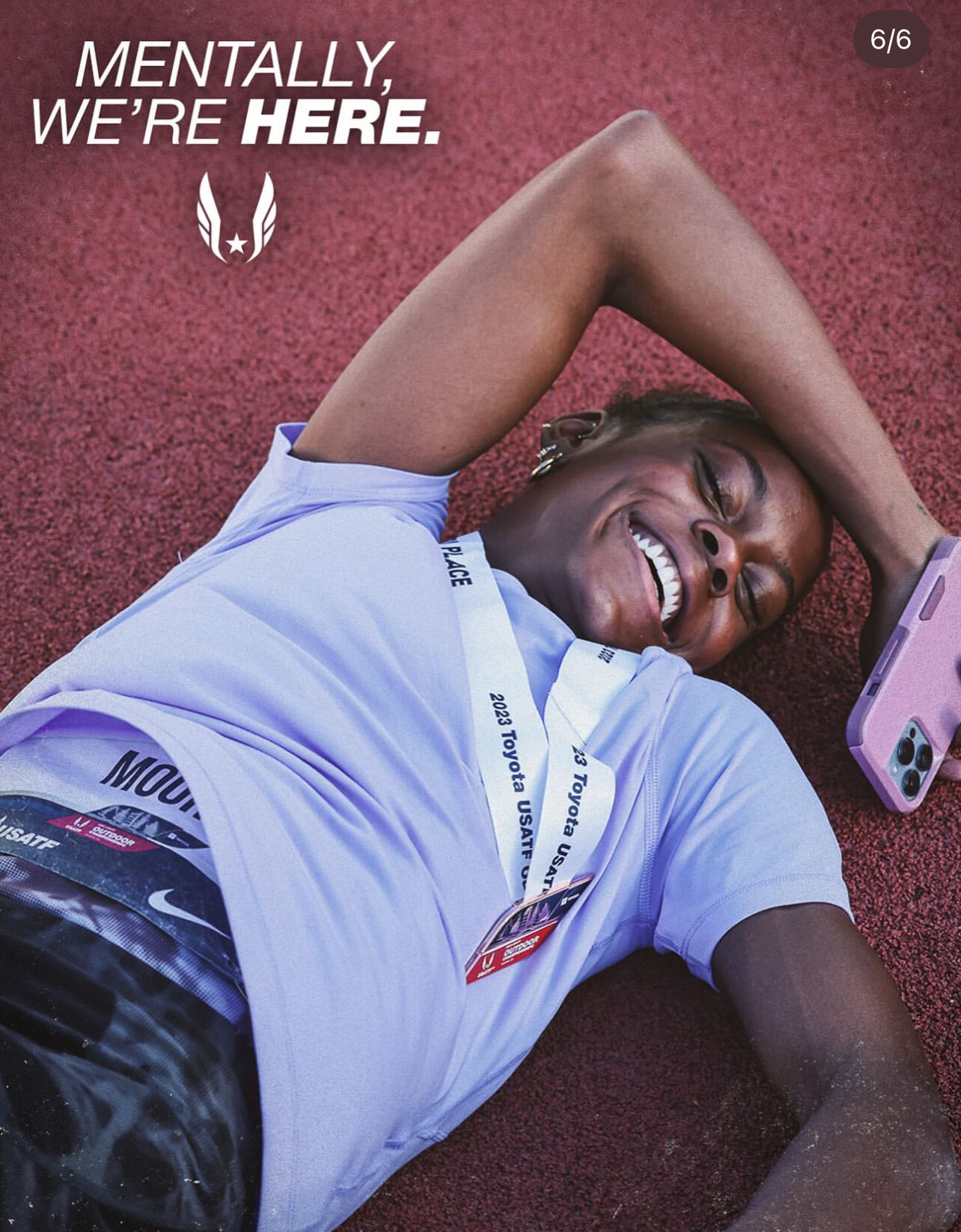
Distance Running Update: Eyes on the 1500m, 5000m, and 10,000m
The distance events promise fierce battles and major implications for Team USA selection.
In the men’s 1500m, all eyes will be on Yared Nuguse, who owns one of the fastest times in American history. He’ll be challenged by Cole Hocker, who famously stormed to an Olympic team spot in 2021, and NCAA standout Hobbs Kessler, who continues to climb the ranks.
The women’s 1500m will feature Nikki Hiltz, Emily Mackay, and Sinclaire Johnson, with Hiltz in standout form after their impressive road mile performances this season.
In the 5000m, American record holder Woody Kincaid will take on Grant Fisher, who’s back after injury and hungry to reclaim his place at the top. The women’s 5000m will include Elise Cranny, Karissa Schweizer, and Parker Valby, in what could be one of the most tactical races of the meet.
The 10,000m has already been contested earlier in the season, but the championship weekend will set the tone for the athletes’ final preparations ahead of international competition.
As always, Hayward Field brings the best out of American distance runners—expect fireworks as the fields chase not only titles, but Olympic dreams.
Catch the action live on NBC and Peacock.
Event: Toyota U.S.A. Track & Field Outdoor Championships
Location: Hayward Field, Eugene, Oregon
Broadcast: Saturday & Sunday at 4 p.m. ET on NBC & Peacock
by Boris Baron
Login to leave a comment
Grand Slam Track Series Faces Scrutiny Over Delayed Athlete Payments
The inaugural Grand Slam Track (GST) series launched with high hopes and bold promises—top-tier venues, world-class athletes, and massive prize money. But just months after its first leg in Kingston, Jamaica, the glitter is beginning to tarnish as frustration mounts over unpaid prize money and appearance fees.
From Olympic gold medallists to world record holders, dozens of elite athletes are still waiting to be compensated for their performances. Middle-distance star Emmanuel Wanyonyi is owed $100,000 (approximately Ksh12.9 million) after topping the men’s short-distance leaderboard. American sprint sensation Gabby Thomas and 400m hurdles world record holder Sydney McLaughlin-Levrone are among others reportedly awaiting their payouts.
The issue extends beyond prize money. Appearance fees—typically paid prior to or shortly after competition—have also not been delivered. In contrast, athletes competing on the Diamond League circuit often receive payments within two to three weeks. The GST delay now stretches months, leaving agents, athletes, and federations scrambling for answers.
Organizers claim the delay is due to “economic challenges,” the same reason cited by GST founder Michael Johnson when he abruptly canceled the final series meet scheduled for Los Angeles. That announcement, made during an emergency Zoom call with athletes, raised immediate red flags about the financial health of the operation.
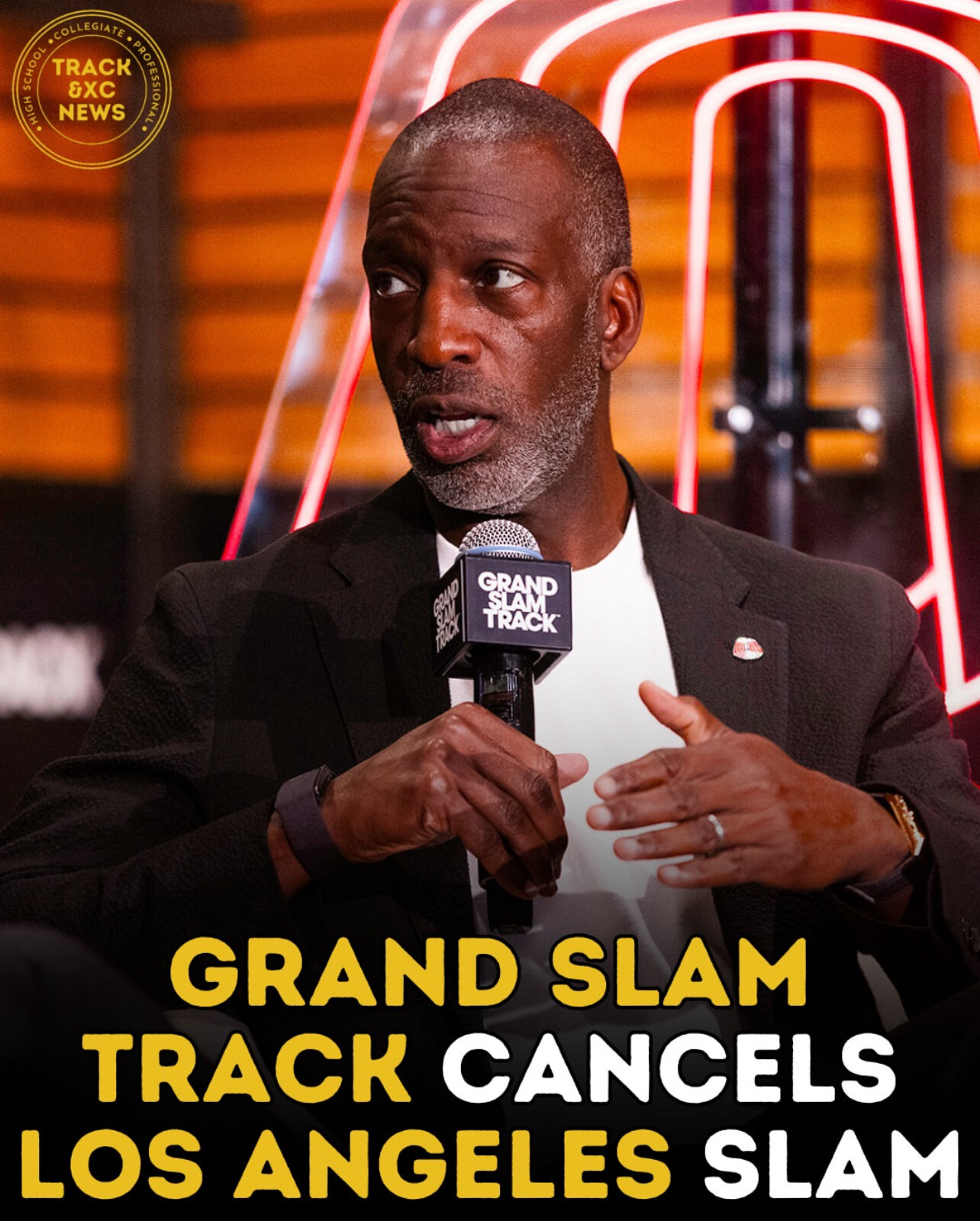
GST executive Kyle Merber recently attempted to ease concerns by emailing athlete representatives with a tentative payment plan. According to the message, prize money from Kingston will be paid by the end of July, with all other outstanding payments—including those for the canceled Los Angeles leg—expected by the end of September.
But skepticism remains. “It is still a bit vague,” one top agent told The Times. “If they have the money, why can’t they pay it now? For some of these athletes, we are talking hundreds of thousands of dollars.”
Reports of internal staff layoffs at GST have only added to the uncertainty.
Athlete managers and associations are now getting involved, demanding transparency and accountability. The Association of Athletics Managers recently held a meeting with Johnson to seek clarification, but sources say no firm dates or guarantees were given.
As the dust settles from what was supposed to be a revolutionary series for the sport, key questions remain unanswered:
• How much money was actually collected by GST?
• Have any athletes received their payments in full?
• What safeguards will be put in place to protect athletes moving forward?
"Big promises but I don't think GST set out to scam anyone," says Bob Anderson, " but those of us that have been around athletics for decades know that track and field is a hard sell. I hope the athletes involved will be paid but they should not count on it."
With millions promised and reputations on the line, the success—or collapse—of GST could set a precedent for future independent track series. For now, the running world waits.
by Boris Baron
Login to leave a comment
Grand Slam Track in Philadelphia: A Weekend of Records, Stars, and a Hurdles Debut
This weekend, the historic Franklin Field in Philadelphia transformed into the heart of global athletics as the Grand Slam Track (GST) continued its groundbreaking season. With packed stands, a star-studded lineup, and record-breaking performances, the meet was nothing short of electrifying.
At the center of the action was Olympic champion Sydney McLaughlin-Levrone, who turned heads by stepping away from her signature 400m hurdles to focus on the 100m hurdles. “It’s definitely been a shift these past few weeks, but it’s been great to work on sprint mechanics, block start, and hurdle technique,” Sydney said via The Athletic. While her mastery in longer races is legendary, she’s embracing this shorter sprint with confidence. Fans eagerly anticipate her performance as she lines up for the 100m hurdles on Sunday.

Saturday’s action delivered drama and brilliance across all distances:
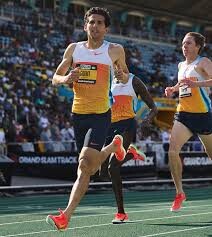
Marco Arop’s Command in the Men’s 800m
Canada’s Marco Arop dominated the men’s 800m, clocking an impressive 1:43.38 to claim his third consecutive GST victory. He surged ahead of American Josh Hoey (1:44.41), thrilling the Philadelphia crowd. “It’s easy to run fast in a stadium like this, so I had to put on a show for them,” Arop said with a smile.
Diribe Welteji’s Record-Breaking 1500m
In the women’s 1500m, Ethiopia’s Diribe Welteji stunned the field with a championship record of 3:58.04. Hot on her heels were Australia’s Jessica Hull (3:58.36) and American Nikki Hiltz (4:00.54), making it one of the most thrilling races of the day.
Tactical Wins in the 3000m
Kenya’s Agnes Jebet Ngetich showcased her tactical brilliance in the women’s 3000m, edging out Ethiopia’s Ejgayehu Taye by just 0.09 seconds with a winning time of 8:43.61. In the men’s 3000m, American Grant Fisher delivered a commanding performance, leading from start to finish.
What’s Next?
Sunday promises even more excitement as athletes return to the track. Sydney McLaughlin-Levrone’s 100m hurdles debut is a highlight, alongside fierce battles in the sprints, middle distance, and field events.
The Philadelphia meet is part of GST’s mission to reshape professional track and field with a streamlined format, significant prize money, and a focus on athlete-driven competition. With a total prize pool of $12.6 million and top winners earning $100,000, the stakes are high.
Fans can tune in live on Peacock and The CW in the U.S. or follow highlights through international broadcasters.
As the athletes gear up for the final day in Philadelphia, one thing is clear: the Grand Slam Track is redefining what it means to race.
by Boris Baron
Login to leave a comment
Sydney McLaughlin-Levrone Shakes Up Sprint World with 100m Hurdles Debut
Sydney McLaughlin-Levrone to Debut in 100m Hurdles at Philly Grand Slam Meet—A New Chapter Begins June 9
One of track and field’s most celebrated athletes is stepping into a new lane—literally.
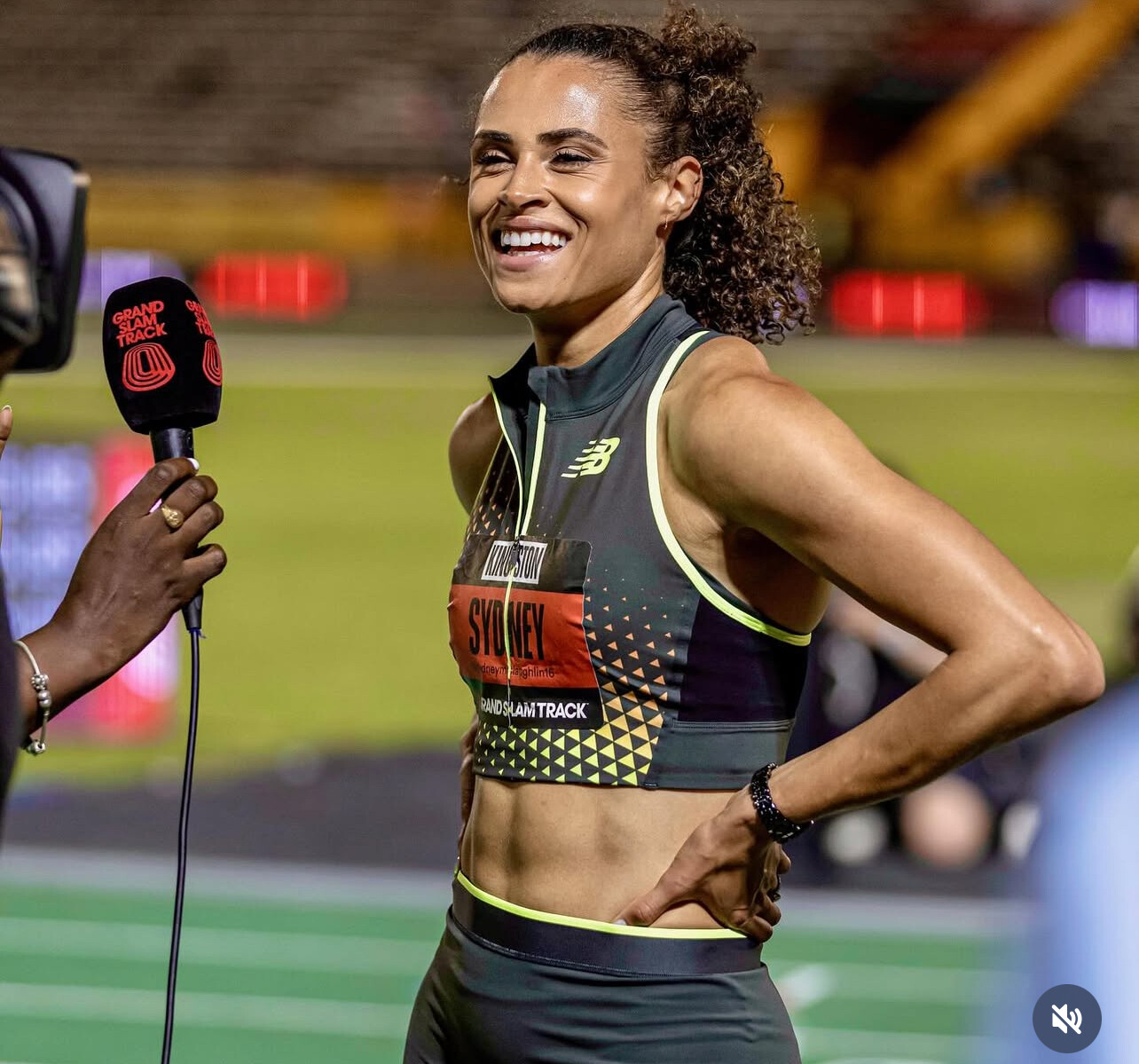
Sydney McLaughlin-Levrone, the Olympic and world champion in the 400m hurdles, will compete in the 100m hurdles for the first time as a professional at the Grand Slam Track Meet in Philadelphiaon June 9, 2025. The event marks a bold move for a star known for redefining her own limits.
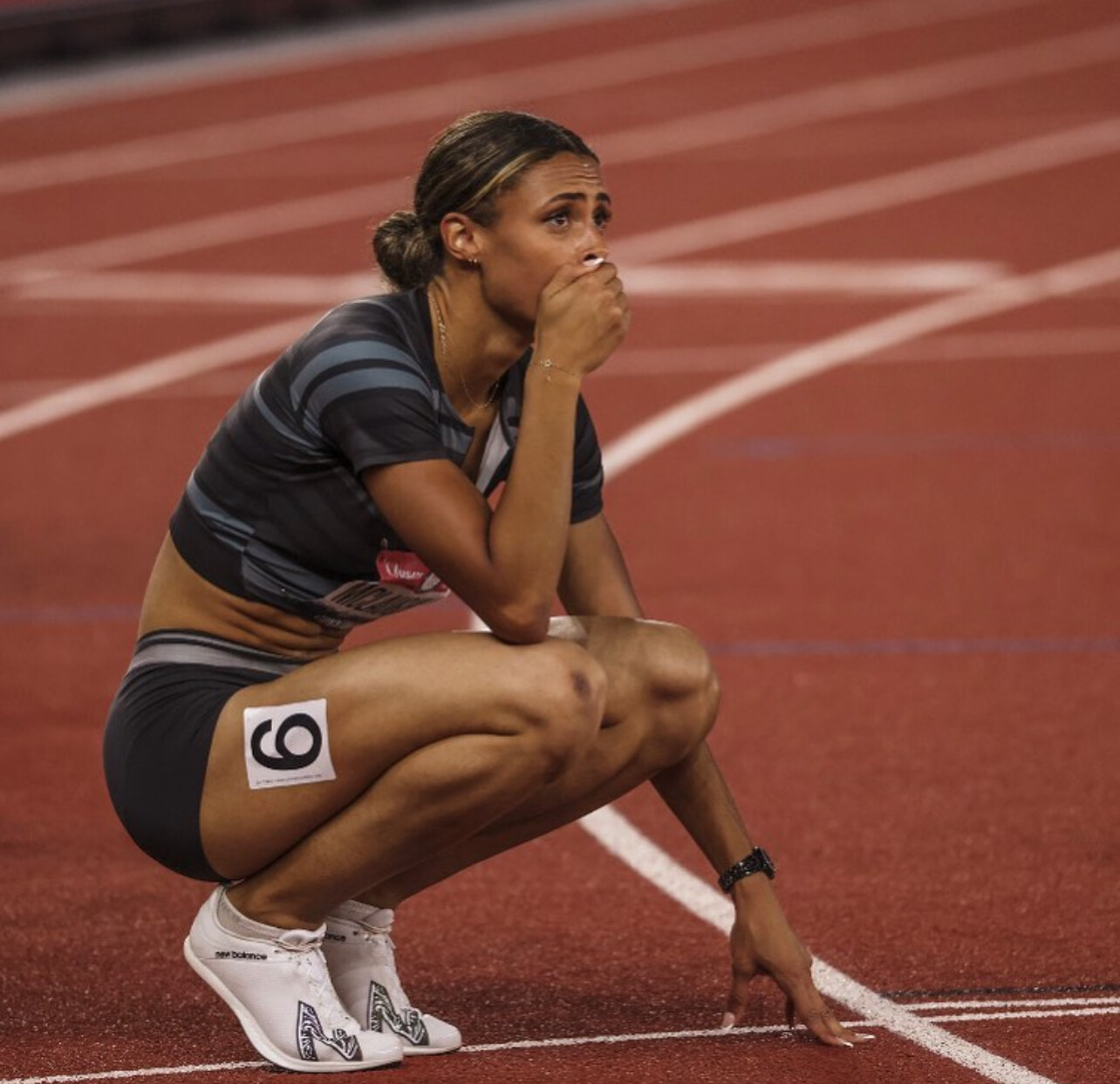
The meet is part of the Grand Slam Track series, an ambitious new project that launched in Kingston, Jamaica in May 2025. The series aims to bring excitement and elite matchups to iconic track venues with high-energy formats and streamlined scheduling. Unlike traditional leagues, Grand Slam Track events are standalone competitions that prioritize fan experience and top-tier competition without the bureaucracy of point-based rankings.
The Philly Grand Slam will be held at historic Franklin Field, home of the Penn Relays, and is expected to draw a packed crowd and worldwide attention—especially with McLaughlin-Levrone on the start list.
Why 100m hurdles, and why now?
Sydney was a dominant sprint hurdler in high school and has hinted in recent years that she still has unfinished business with the shorter hurdles. Her transition comes as no surprise to insiders:
• It’s a return to her roots: Before becoming a 400m hurdles world-beater, she posted elite-level times in the 100m hurdles as a teen.
• A lighter load physically: The 100m hurdles is demanding but significantly less punishing than the 400m hurdles, especially post-Olympics.
• A new challenge: With multiple Olympic and World titles already secured, Sydney may be seeking fresh goals—and this could open the door to a hurdles double in future major championships.
“I’ve always loved the hurdles,” she said in a statement ahead of the meet. “This is about stepping outside my comfort zone and having fun.”
With the 100m hurdles field likely to include top U.S. and international talent, fans will see how Sydney stacks up—technically, tactically, and mentally—against the best over 10 barriers and 100 meters.
Whether it’s a one-off experiment or the start of a new direction, June 9 in Philly is must-watch track.
by Boris Baron
Login to leave a comment
Day 3 Recap: Grand Slam Track Miami Delivers High Drama and Big Payouts
The final day of the Grand Slam Track meet in Miami concluded with thrilling performances and significant prize money awarded to top athletes. Held at the Ansin Sports Complex from May 2–4, this event marked the second stop in the inaugural Grand Slam Track series, founded by Olympic legend Michael Johnson.
Top Performers and Prize Money Winners
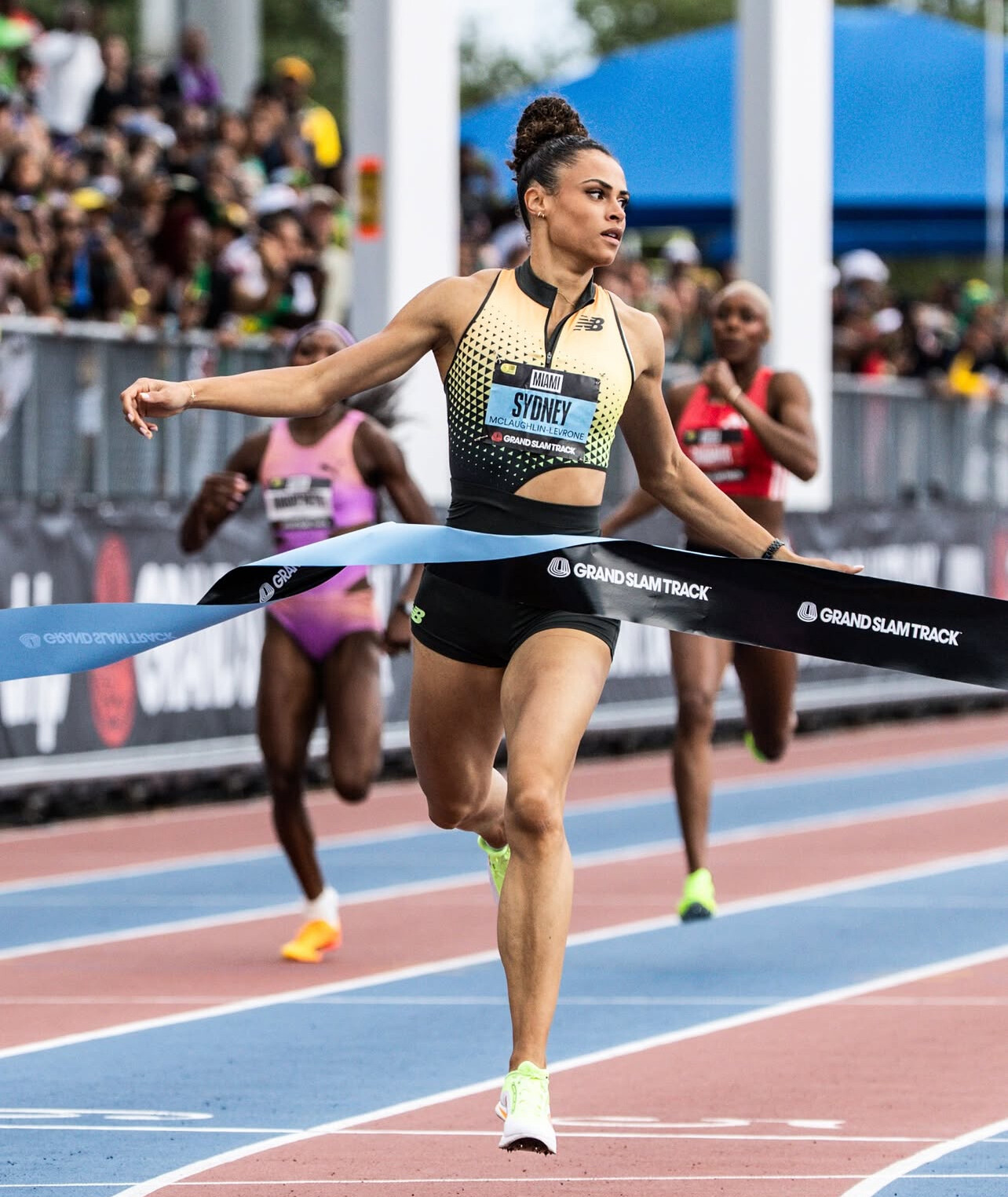
The Grand Slam Track series features six event groups, each comprising two disciplines. Athletes accumulate points across both events, with the highest total determining the group champion. Winners receive $100,000, with payouts extending to the eighth place at $10,000.
Men’s Short Sprints (100m & 200m):
Kenny Bednarek secured victories in both the 100m (9.79 seconds, wind-aided) and 200m (19.84 seconds), earning the maximum 24 points and the $100,000 prize.

Women’s Long Hurdles (400m Hurdles & 400m):
Sydney McLaughlin-Levrone dominated her events, including a 400m win in 49.69 seconds, clinching her second consecutive Grand Slam title and $100,000.
Men’s Short Distance (800m & 1500m):
Josh Kerr won the 1500m in 3:34.51 and placed fifth in the 800m with a personal best of 1:45.01, accumulating 16 points to secure the group title and $100,000.
Women’s Short Sprints (100m & 200m):
Melissa Jefferson-Wooden became the first athlete to win back-to-back Grand Slam titles, winning the 100m in 10.75 seconds and placing third in the 200m, totaling 18 points and earning $100,000.
Men’s Long Distance (3000m & 5000m):
Grant Fisher won the 5000m, securing enough points to top the long-distance group and take home $100,000.
“I need to be ready to win in a lot of different scenarios,” said Grant Fisher after his dominant performance in the men’s 5000m at the Grand Slam Track meet in Miami. The U.S. star closed with a blistering 3:57.58 over the final 1600 meters, showcasing both tactical patience and lethal finishing speed en route to his 13:40.32 victory over 12.5 laps.
Women’s Long Distance (3000m & 5000m):
Agnes Jebet Ngetich won the 5000m with a time of 14:25.80, setting a course record and claiming the group title and $100,000.
Prize Money Structure
The Grand Slam Track series offers substantial financial incentives:
First-place finishers in each event group receive $100,000. Second place earns $50,000, third place takes home $30,000, and fourth place is awarded $25,000. Fifth through eighth places receive $20,000, $15,000, $12,500, and $10,000 respectively. This structure ensures that all finalists receive compensation, promoting competitive participation across the board.
Emerging Stars and Notable Performances
Several athletes delivered standout performances:
• Andrew Coscoran: The Irish runner won the 3000m in 8:17.56, marking the biggest victory of his career.
• Masai Russell: Set a new American record in the 100m hurdles with a time of 12.17 seconds, the second-fastest in history.
• Peter Bol: The Australian middle-distance runner earned $30,000 in his Grand Slam Track debut, showcasing his potential in the league.
Looking Ahead
With two events completed, the Grand Slam Track series moves to Philadelphia and Los Angeles. Athletes will continue to compete for significant prize money and the coveted “Racer of the Year” title, awarded to the top male and female athletes based on cumulative points across all four Slams.
by Boris Baron
Login to leave a comment
Grand Slam Track League Aims to Revolutionize Track and Field
In an ambitious move to elevate professional track and field, sprinting legend Michael Johnson has launched the Grand Slam Track league. This innovative series promises athletes regular, high-stakes competitions against top-tier rivals, coupled with unprecedented financial incentives.
Unprecedented Financial Incentives
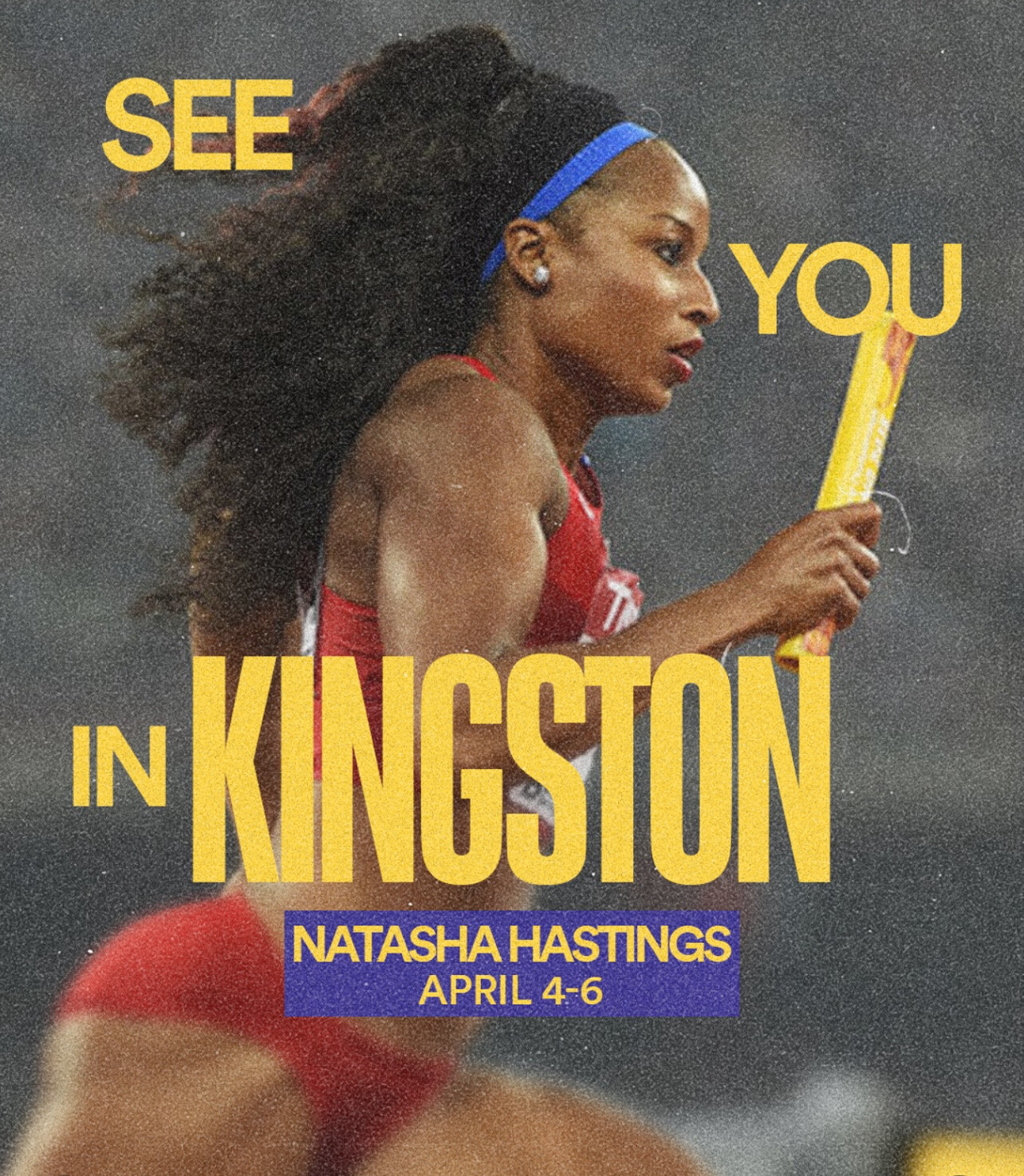
Grand Slam Track offers a substantial $12.6 million in prize money for its inaugural season. Athletes will compete in four major meets, with prize distributions as follows:
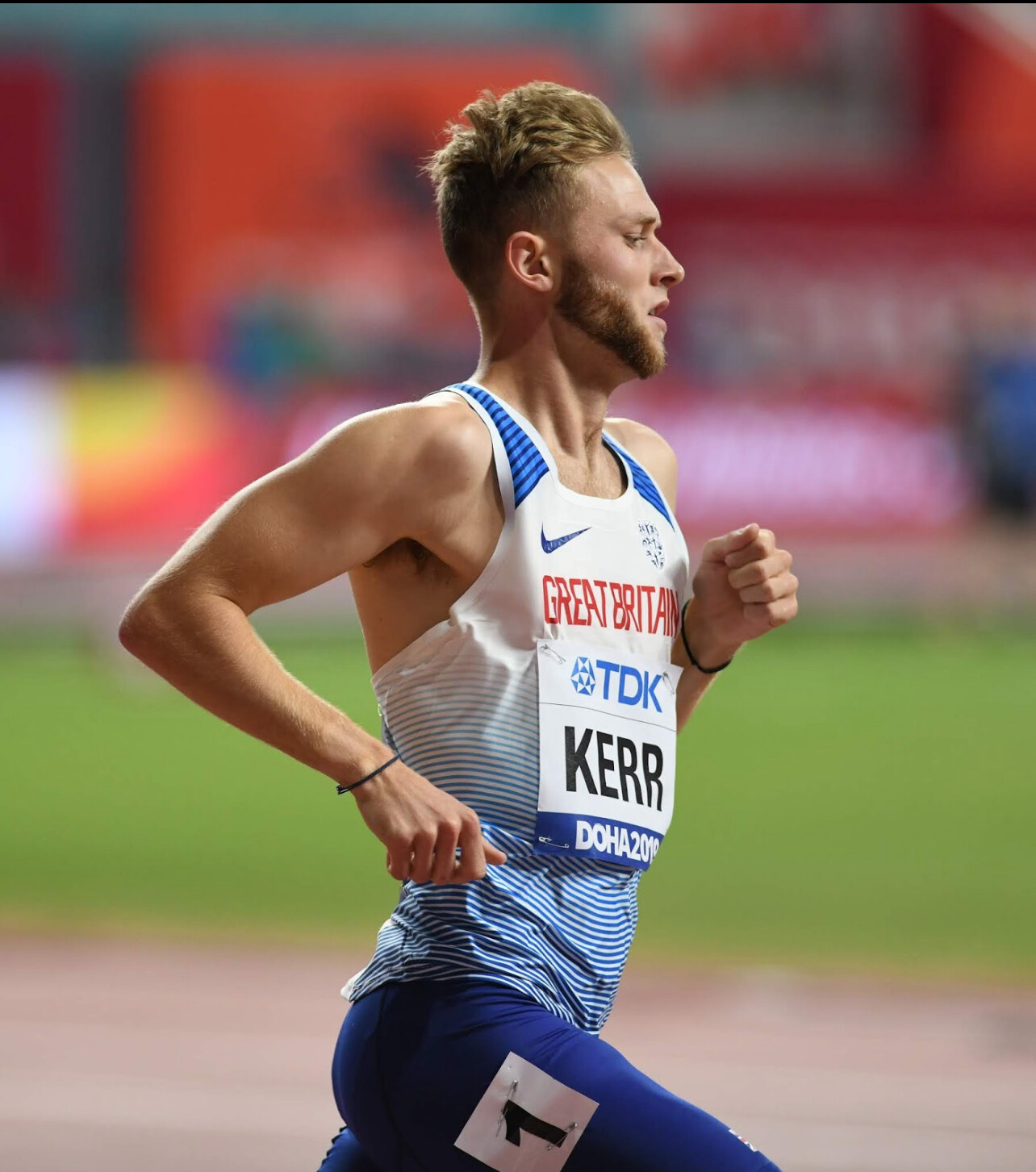
• 1st Place: $100,000
• 2nd Place: $50,000
• 3rd Place: $30,000
• 4th Place: $25,000
• 5th Place: $20,000
• 6th Place: $15,000
• 7th Place: $12,500
• 8th Place: $10,000
In contrast, the established Diamond League offers $10,000 for event winners and $1,000 for eighth place, highlighting Grand Slam Track’s commitment to elevating athlete compensation.
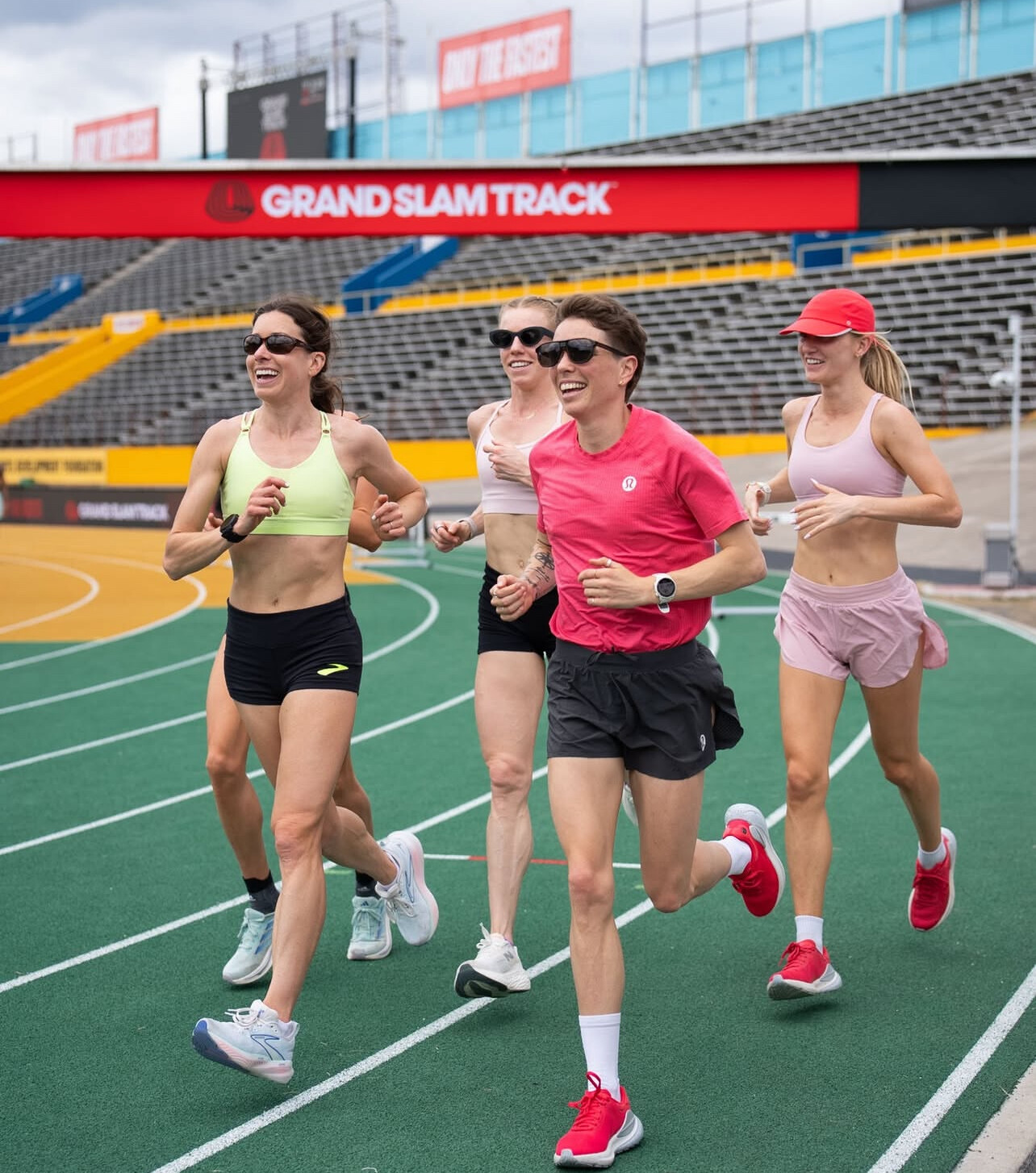
Season Schedule and Venues
The 2025 season features four high-profile meets:
1. Kingston, Jamaica – Independence Park: April 4–6
2. Miami, USA – Ansin Sports Complex: May 2–4
3. Philadelphia, USA – Franklin Field: May 30–June 1
4. Los Angeles, USA – Drake Stadium: June 27–29

These venues have been strategically selected to maximize global engagement and showcase the sport’s premier talents.
Elite Athlete Participation
The league has successfully attracted 48 elite athletes, known as “Grand Slam Racers,” who are contracted to compete in all four events. Notable participants include:
• Sydney McLaughlin-Levrone: Double Olympic champion in the 400m hurdles.
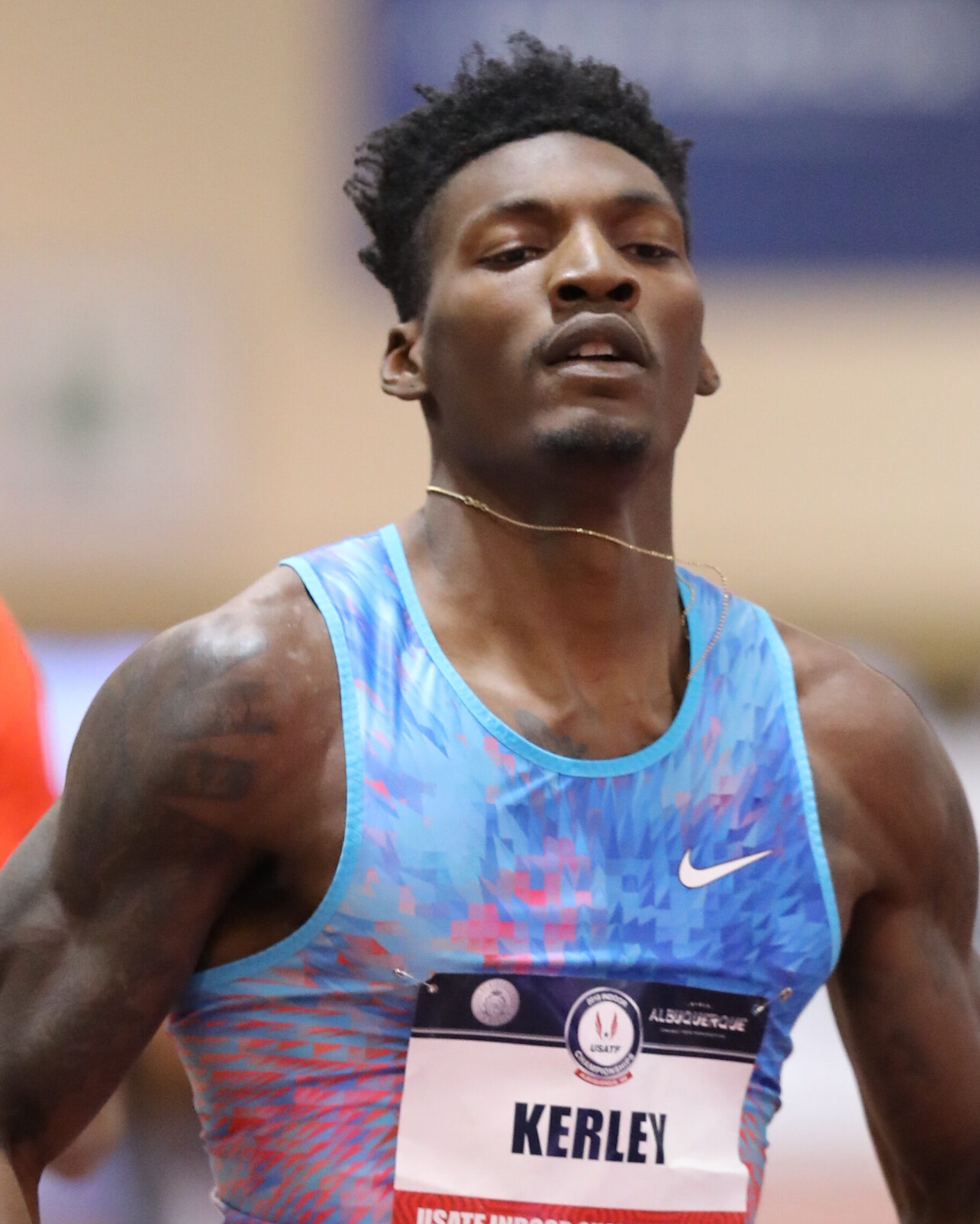
• Josh Kerr: 2023 world champion and 2024 Olympic silver medalist in the 1500m.
• Fred Kerley: World-renowned sprinter and Olympic medalist.
• Emmanuel Wanyonyi: Prominent middle-distance runner.
These athletes are poised to deliver thrilling head-to-head competitions, enhancing the sport’s appeal.
Visionary Leadership and Funding
Michael Johnson, a four-time Olympic gold medalist, spearheads the Grand Slam Track league. His vision is to create a platform that offers consistent, high-quality competitions and substantial financial rewards, addressing long-standing challenges in track and field.
The league has secured over $30 million in funding from private investments and strategic partnerships, including media rights deals with The CW Network and NBC Sports, ensuring extensive coverage and robust financial backing.
Broadcasting and Global Reach
Grand Slam Track has established broadcasting agreements with The CW Network and Peacock in the United States. Every event of each three-day meet will stream live on Peacock, with exclusive coverage of each Friday’s races, while The CW will air weekend coverage. NBC, whose parent company owns Peacock, will also air highlight specials.
The global broadcast team will be led by Steve Cram, Carrie Tollefson, and Anson Henry, with reporting from Radzi Chinyanganya and Taliyah Brooks. These collaborations aim to bring track and field to a broader audience, revitalizing interest in the sport.
With its innovative approach, substantial financial incentives, and commitment to showcasing elite talent, Grand Slam Track is set to redefine the landscape of professional track and field.
by Boris Baron
Login to leave a comment
Sydney McLaughlin-Levrone’s Unmatched Dominance in the 400m Hurdles
Sydney McLaughlin-Levrone has firmly established herself as a formidable force in track and field, particularly in the 400-meter hurdles. Her performances have not only shattered records but have also set new benchmarks for the sport.
Record-Breaking Performances
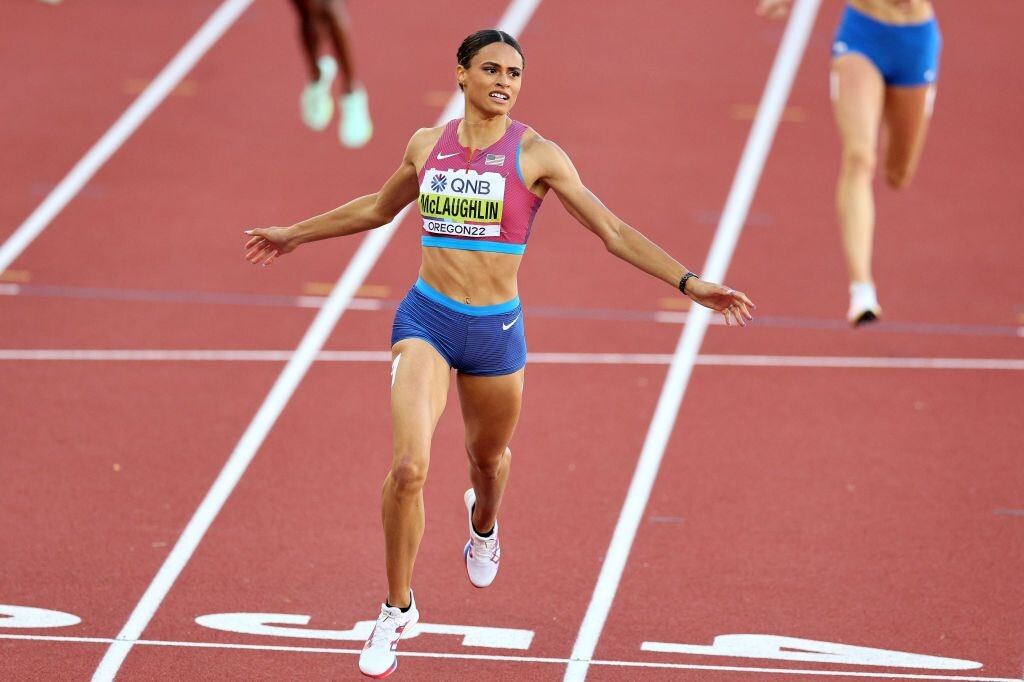
At the 2024 Paris Olympics, McLaughlin-Levrone clinched gold in the 400m hurdles, setting a new world record with a time of 50.37 seconds. This remarkable feat surpassed her previous record of 50.65 seconds, set just months earlier at the U.S. Olympic Trials.
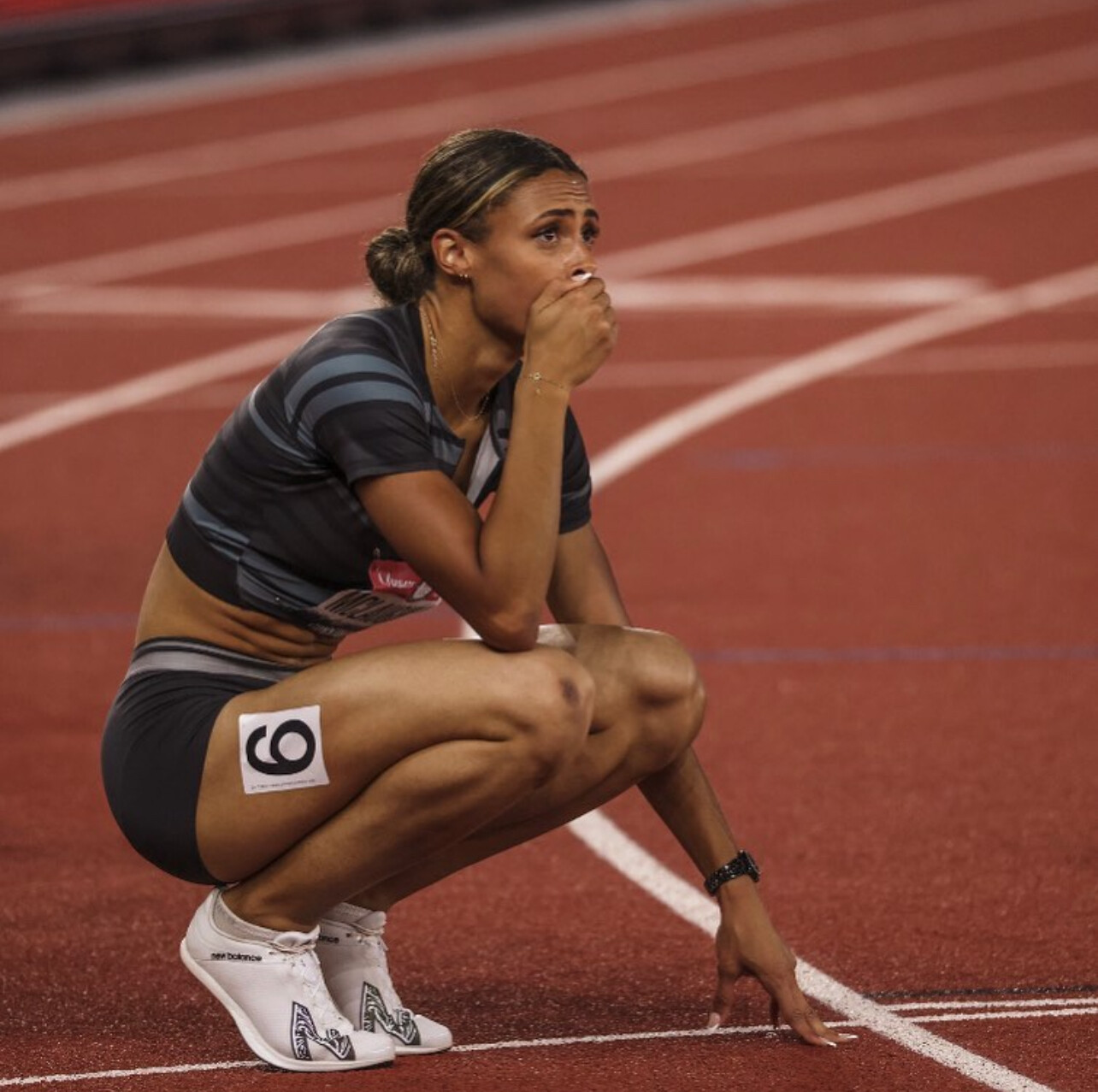
Unprecedented Winning Margins
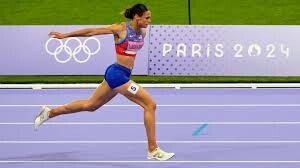
McLaughlin-Levrone’s dominance is further highlighted by her significant winning margins. In the Paris final, she finished 1.5 seconds ahead of the silver medalist, Anna Cockrell, who clocked 51.87 seconds. This margin is unprecedented in the history of the event at the Olympic level.
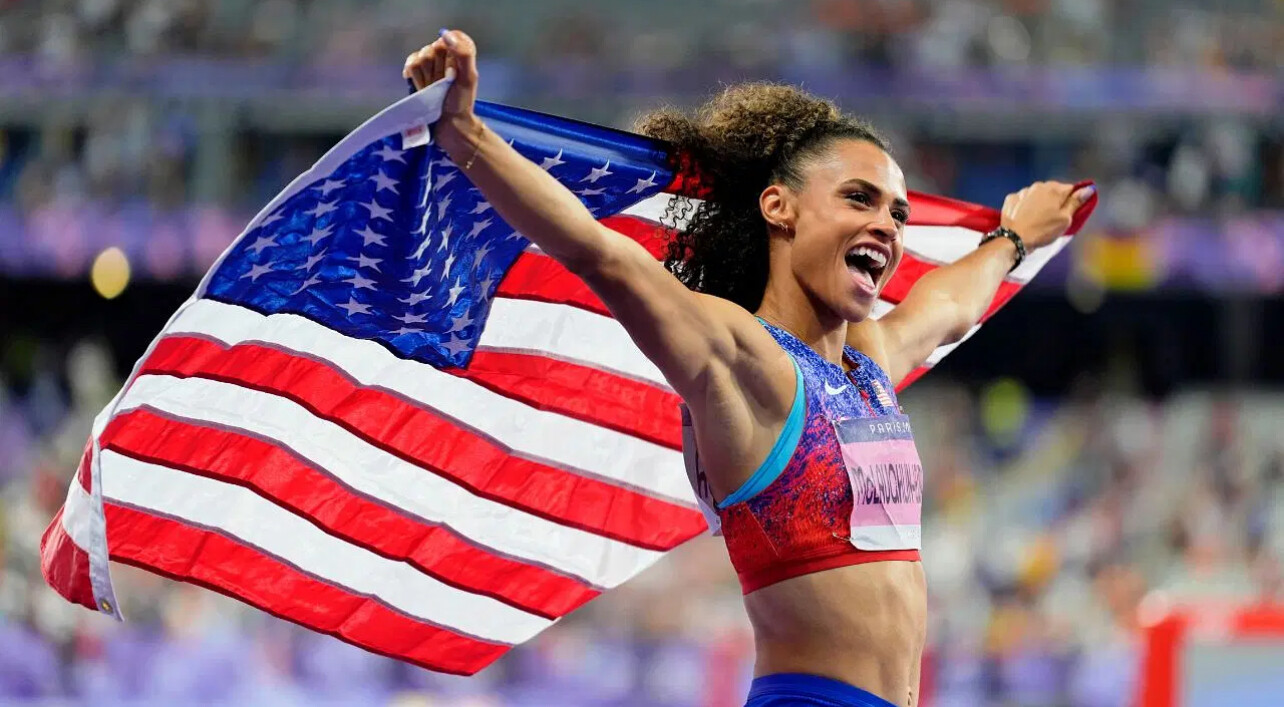
Consistency at the Pinnacle
Demonstrating unparalleled consistency, McLaughlin-Levrone has set the world record in the 400m hurdles six times, more than any other athlete in the event’s history. Her ability to continually push the boundaries of performance underscores her exceptional talent and dedication.
Technical Mastery and Training Regimen
Her success can be attributed to a meticulous training regimen and technical proficiency. McLaughlin-Levrone maintains an aggressive pace from the starting block, clearing each of the ten 30-inch hurdles with precision. Her ability to sustain speed between hurdles and execute flawless technique has set her apart from her peers.
Inspiration and Legacy
Beyond her athletic achievements, McLaughlin-Levrone serves as an inspiration, emphasizing the importance of discipline and dedication. Her journey reflects a commitment to excellence and a relentless pursuit of greatness.
by Boris Baron
Login to leave a comment
Who Had the Best Era in Track & Field? A Generational Showdown
Track and field has long been the stage for some of the most electrifying athletic performances in history. Each generation has produced legends who have redefined what is possible in sprinting, distance running, and field events. But which era stands above the rest?
From the Silent Generation pioneers to the Gen Z record-breakers, every period has contributed to the evolution of the sport. Let’s break down each era’s greatest stars and their lasting impact on track and field.
Gen Z (Born 1997 - 2012): The Future of Track & Field
The newest generation of elite athletes is already making waves on the world stage. With the benefit of cutting-edge training, nutrition, and recovery techniques, these young stars are smashing records at a rapid pace.
Notable Sprinters & Field Athletes:
• Sydney McLaughlin-Levrone (USA) – 400m hurdles world record holder and Olympic champion
• Mondo Duplantis (Sweden) – Pole vault world record holder
• Erriyon Knighton (USA) – One of the fastest teenagers ever in the 200m
Notable Distance Runners:
• Jakob Ingebrigtsen (Norway) – Olympic 1500m champion, European mile record holder
• Joshua Cheptegei (Uganda) – 5000m and 10,000m world record holder
• Jacob Kiplimo (Uganda) – Half marathon world record holder (57:31)
• Gudaf Tsegay (Ethiopia) – World champion in the 1500m, dominant in middle distances
Gen Z athletes are not only breaking records but also shaping the future of the sport through their influence on social media and global visibility. With their combination of speed, endurance, and access to modern sports science, they may soon surpass all who came before them.
Defining Traits: Explosive, record-breaking, tech-savvy
Millennials (Born 1981 - 1996): The Superstars of the Modern Era
No discussion of dominant track and field generations is complete without mentioning Usain Bolt. The Jamaican sprinting legend captured the world’s attention with his charisma and untouchable world records.
Notable Sprinters:
• Usain Bolt (Jamaica) – Fastest man in history (100m: 9.58, 200m: 19.19)
• Allyson Felix (USA) – Most decorated female Olympian in track history
• Shelly-Ann Fraser-Pryce (Jamaica) – One of the most dominant sprinters of all time
Notable Distance Runners:
• Eliud Kipchoge (Kenya) – The greatest marathoner of all time, first to break two hours in a marathon
• Mo Farah (UK) – Dominated the 5000m and 10,000m at two Olympic Games
• Genzebe Dibaba (Ethiopia) – 1500m world record holder
• Ruth Chepngetich (Kenya) – First woman to break the 2:10 barrier in the marathon, setting a world record of 2:09:56 at the 2024 Chicago Marathon
Millennials excelled across all track and field disciplines. They ushered in an era of professional distance running dominance, with African runners setting standards in middle and long distances. Meanwhile, Kipchoge’s sub-2-hour marathon attempt was a historic milestone in human endurance.
Defining Traits: Charismatic, dominant, endurance revolutionaries
Gen X (Born 1965 - 1980): The Tough and Versatile Competitors
Gen X athletes were the bridge between the amateur days of track and the fully professional era. They pushed the sport forward with fierce rivalries and new records, while also seeing the globalization of track and field.
Notable Sprinters:
• Maurice Greene (USA) – Former world record holder in the 100m (9.79)
• Marion Jones (USA) – One of the most dominant sprinters of the late ‘90s
Notable Distance Runners:
• Haile Gebrselassie (Ethiopia) – Olympic and world champion, former marathon world record holder
• Paul Tergat (Kenya) – Pioneered marathon running dominance for Kenya
• Tegla Loroupe (Kenya) – First African woman to hold the marathon world record
This era marked a golden age for distance running, with Gebrselassie and Tergat setting the stage for the marathon revolution that would come in the next generation. With increased sponsorships, the road racing circuit became more competitive, and Kenyan and Ethiopian dominance solidified.
Defining Traits: Tough, globalized, long-distance pioneers
Baby Boomers (Born 1946 - 1964): The Golden Age of Track & Field
The Baby Boomers took track and field into the modern Olympic era, producing some of the most iconic figures in the sport’s history.
Notable Sprinters:
• Carl Lewis (USA) – Nine-time Olympic gold medalist across sprints and long jump
• Florence Griffith-Joyner (USA) – 100m (10.49) and 200m (21.34) world record holder
Notable Distance Runners:
• Sebastian Coe (UK) – 800m and 1500m Olympic champion, middle-distance legend
• Steve Prefontaine (USA) – One of the most influential distance runners in history
• Miruts Yifter (Ethiopia) – 5000m and 10,000m Olympic champion
This era brought middle and long-distance running into the mainstream, with rivalries like Coe vs. Ovett and Prefontaine vs. the world captivating fans. The Baby Boomers were the first generation of professional-level training and saw athletes truly dedicated to their craft year-round.
Defining Traits: Bold, revolutionary, multi-talented
Silent Generation (Born 1928 - 1945): The Pioneers of Kenya’s Dominance
This generation laid the foundation for modern track and field, producing legends whose influence still resonates today.
Notable Distance Runners:
• Kip Keino (Kenya) – The pioneer of Kenya’s dominance in distance running, winning Olympic gold in the 1500m (1968) and 3000m steeplechase (1972)
• Emil Zátopek (Czechoslovakia) – Triple gold in 5000m, 10,000m, and marathon at the 1952 Helsinki Olympics
• Paavo Nurmi (Finland) – Nine-time Olympic gold medalist in long-distance events
Kip Keino’s triumph over Jim Ryun in the 1500m final at the 1968 Mexico City Olympics is considered one of the greatest upsets in Olympic history. Competing at high altitude, Keino used a fast early pace to break Ryun, ushering in an era of Kenyan middle-distance dominance that continues today.
Defining Traits: Groundbreaking, resilient, visionary
Which Generation Had the Greatest Impact?
Each generation of track and field athletes has contributed to the sport’s evolution in unique ways:
• Millennials brought global superstardom (Bolt, Felix, Fraser-Pryce, Kipchoge, Chepngetich)
• Gen X athletes were fierce competitors in a rapidly changing sport (Greene, Gebrselassie, Tergat)
• The Baby Boomers set records that still stand today (Carl Lewis, Flo Jo, Coe, Prefontaine)
• The Silent Generation laid the foundation for modern track and field (Owens, Zátopek, Kip Keino)
• Gen Z is already breaking records and shaping the future of the sport (McLaughlin-Levrone, Ingebrigtsen, Cheptegei)
While it’s hard to declare one era the best, one thing is certain: the sport of track and field continues to evolve, with each generation pushing the limits of human performance.
Which generation do you think is the greatest? Let us know in the comments!
by Boris Baron
Login to leave a comment
Hassan and Tebogo named World Athletes of the Year
Olympic champions Sifan Hassan and Letsile Tebogo have been announced as World Athletes of the Year at the World Athletics Awards 2024 in Monaco.
Following a vote by fans, Hassan and Tebogo received top honors on an evening that saw six athletes crowned in three categories – track, field and out of stadium – before the overall two winners were revealed.
Tebogo was confirmed as men’s track athlete of the year, with Sydney McLaughlin-Levrone receiving the women’s honour. Hassan claimed the women’s out of stadium crown and Tamirat Tola the men’s, while Mondo Duplantis and Yaroslava Mahuchikh were named field athletes of the year.
This year’s Rising Stars were also celebrated, with Sembo Almayew and Mattia Furlani receiving recognition.
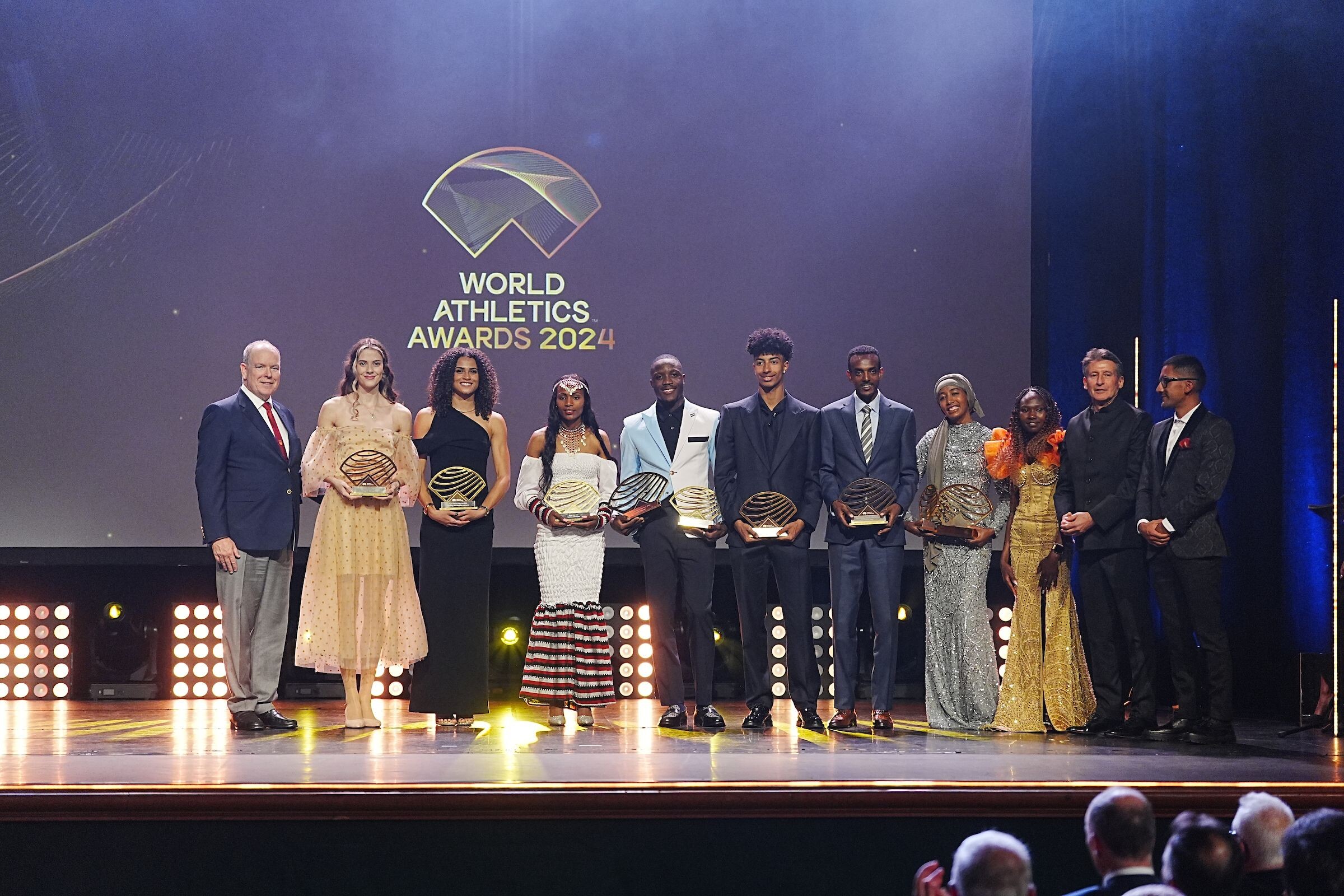
World Athletes of the Year for 2024
Women’s World Athlete of the Year: Sifan Hassan (NED)Men’s World Athlete of the Year: Letsile Tebogo (BOT)
Women’s track: Sydney McLaughlin-Levrone (USA)Women’s field: Yaroslava Mahuchikh (UKR)Women’s out of stadium: Sifan Hassan (NED)Men’s track: Letsile Tebogo (BOT)Men’s field: Mondo Duplantis (SWE)Men’s out of stadium: Tamirat Tola (ETH)
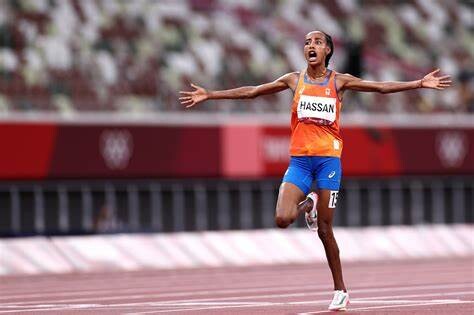
Women’s Rising Star: Sembo Almayew (ETH)Men’s Rising Star: Mattia Furlani (ITA)
“At the end of what has been a stellar year for athletics, we are delighted to reveal our list of World Athletes of the Year – both in their respective disciplines and overall,” said World Athletics President Sebastian Coe. “This group of athletes represents the very best of our sport and has this year redefined what is possible in terms of athletic performance.
“Our 2024 cohort set new standards in heights, speed and distance, including six world records and a host of Olympic and national records between them.
“I congratulate all our award winners, and all of the athletes nominated for these honors, and I thank them for inspiring us all with their performances this year.”
World Athletes of the Year Hassan and Tebogo both won gold and claimed multiple medals at the Paris 2024 Olympic Games.
Dutch star Hassan’s medal treble in Paris was capped by her winning the final athletics gold medal of the Games with her triumph in the marathon in an Olympic record of 2:22:55. That performance came just 37 hours after Hassan claimed bronze in the 10,000m, and six days after her first medal in the French capital – also bronze – in the 5000m.
As a result, she became the first woman to win medals in the 5000m, 10,000m and marathon at the same Games, and the first athlete since Emil Zatopek, who won all three men’s titles in Helsinki in 1952.
Tebogo also made history in Paris when he won the 200m, as he claimed a first ever Olympic gold medal in any sport for Botswana. He ran an African record of 19.46 – a time that moved him to fifth on the world all-time list – and that performance followed his sixth-place finish in the 100m final. He went on to form part of Botswana’s silver medal-winning men’s 4x400m team.
He dipped under 20 seconds for 200m a total of nine times in 2024, with those performances topped by his Olympic title-winning mark which remained the fastest of the year.
His fellow track athlete of the year, McLaughlin-Levrone, improved her own world 400m hurdles record twice, to 50.65 and 50.37, and claimed Olympic gold in that event as well as in the 4x400m. Tola, who joined Hassan in being named out of stadium athlete of the year, won the Olympic marathon title in Paris in an Olympic record.
World records were set by both field athletes of the year. Mahuchikh cleared 2.10m to improve the world high jump record before winning Olympic gold, while Duplantis revised his own world pole vault record three times, eventually taking it to 6.26m, and won the Olympic title.
"Thank you to the fans, to everybody who voted," said Hassan, who was in Monaco to receive her two awards. "I never thought I was going to win this one. This year was crazy. It’s not only me – all the athletes have been amazing. I’m really grateful. What more can I say?"
Standing alongside Hassan on the stage at the Theatre Princesse Grace, Tebogo said: "It feels amazing to know that the fans are always there for us athletes. It was a great year.
"This means a lot," he added. "It’s not just about the team that is around you, there are a lot of fans out there that really want us to win something great for the continent. It was a real surprise to hear my name because I didn’t expect this."
Almayew and Furlani named Rising Stars of 2024
Not only did Sembo Almayew and Mattia Furlani achieve great things as U20 athletes in 2024, they both also secured success on the senior stage.
Almayew finished fifth in the 3000m steeplechase final at the Paris Olympics, going close to her own national U20 record with her 9:00.83 performance, before she travelled to Lima where she won the world U20 title, setting a championship record in the process. With that win, the 19-year-old became the first ever Ethiopian world U20 women’s steeplechase champion.
Furlani improved the world U20 long jump record to 8.38m at the European Championships on home soil in Rome to secure silver, and he won two more senior major medals at the World Indoor Championships, where he got another silver, and the Olympic Games, where he claimed bronze.
In Glasgow – at the age of 19 years and 24 days – Furlani became the youngest athlete ever to win a world indoor medal in the horizontal jumps.
Knight wins President’s Award
The winner of the President’s Award was also announced in Monaco on Sunday (1), with Nike co-founder Phil Knight receiving the honour in recognition of his constant inspiring support for athletics and the development of the sport.
The President's Award, first awarded in 2016, recognises and honours exceptional service to athletics. Past winners of the award include the Ukrainian Athletics Association, British journalist Vikki Orvice, Swiss meeting director Andreas Brugger, Jamaican sprint superstar Usain Bolt, the Abbott World Marathon Majors, and 1968 men’s 200m medallists Tommie Smith, Peter Norman and John Carlos for their iconic moment on the podium in Mexico.
“Phil Knight’s passion for athletics is pretty much lifelong,” said Coe. “He developed an almost father-son relationship with his coach, the legendary Bill Bowerman, whose training approach was a departure from the orthodoxies of the day and who not only guided Knight’s career on the track but became a central figure when Phil took his first tentative steps in the running shoe business that became the dominant global force Nike.
“His love of athletics runs through Nike. It is a business created and driven by runners, with Phil never afraid to be the front runner.”
Knight said: “Thank you, Seb Coe, for the ultimate honour of the President’s Award, given by World Athletics. I am in great company, with Tommie Smith and John Carlos, and Usain Bolt. Obviously, I didn’t run as fast as those guys, but I am in such high company that I am thrilled by the award. Track and field has always been an important part of Nike – it has always been a central part of who Nike is.
“I do think running will continue to grow. Not only does Seb and his team do a great job promoting the sport, but it is a sport that not only is enjoyable, but it is probably the best fitness activity you can do. So, for me to win this honour, it is very meaningful.”
During the ceremony, a moment was taken to remember last year’s men’s out of stadium athlete of the year Kelvin Kiptum, the marathon world record-holder who died in a road traffic accident in February, as well as other figures from the sport who have passed away in 2024.
by World Athletics
Login to leave a comment
How many times has Sydney McLaughlin-Levrone broken the 400m hurdles world record?
Sydney Michelle McLaughlin-Levrone is an American hurdler and sprinter who competes in the 400 meters hurdles and is the world record holderin that event. She has won gold in the 2020 and 2024 Summer Olympics, as well as the 2022 World Athletics Championships.
She set a world record time of 50.37 seconds at the 2024 Summer Olympics on August 8, 2024, breaking her own old world record of 50.65 seconds.
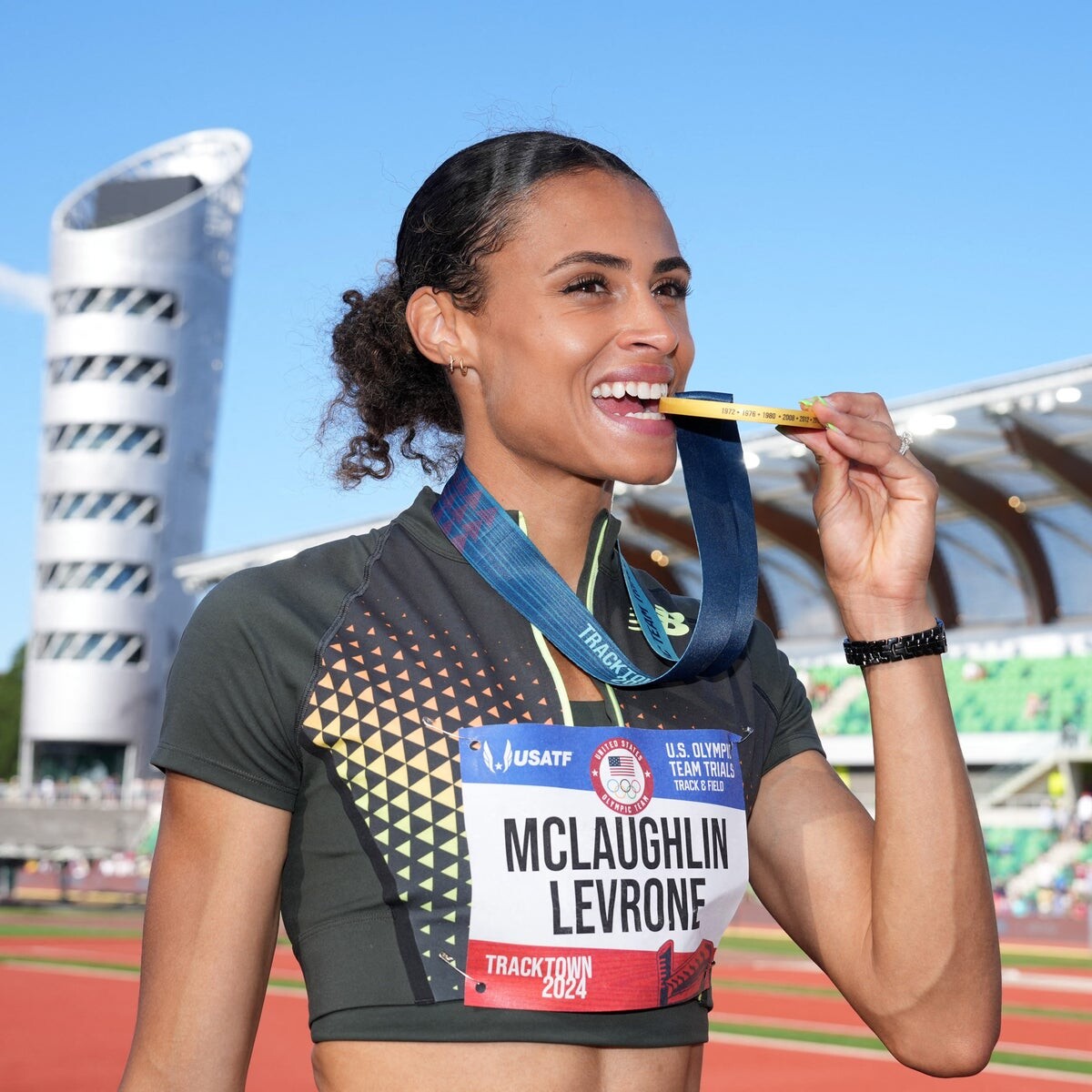
She is the first track athlete to break four world records in the same event; setting four world records during 13 months, she was the first woman to break the 52-second (June 2021) and 51-second (July 2022) barriers in the 400 m hurdles.[
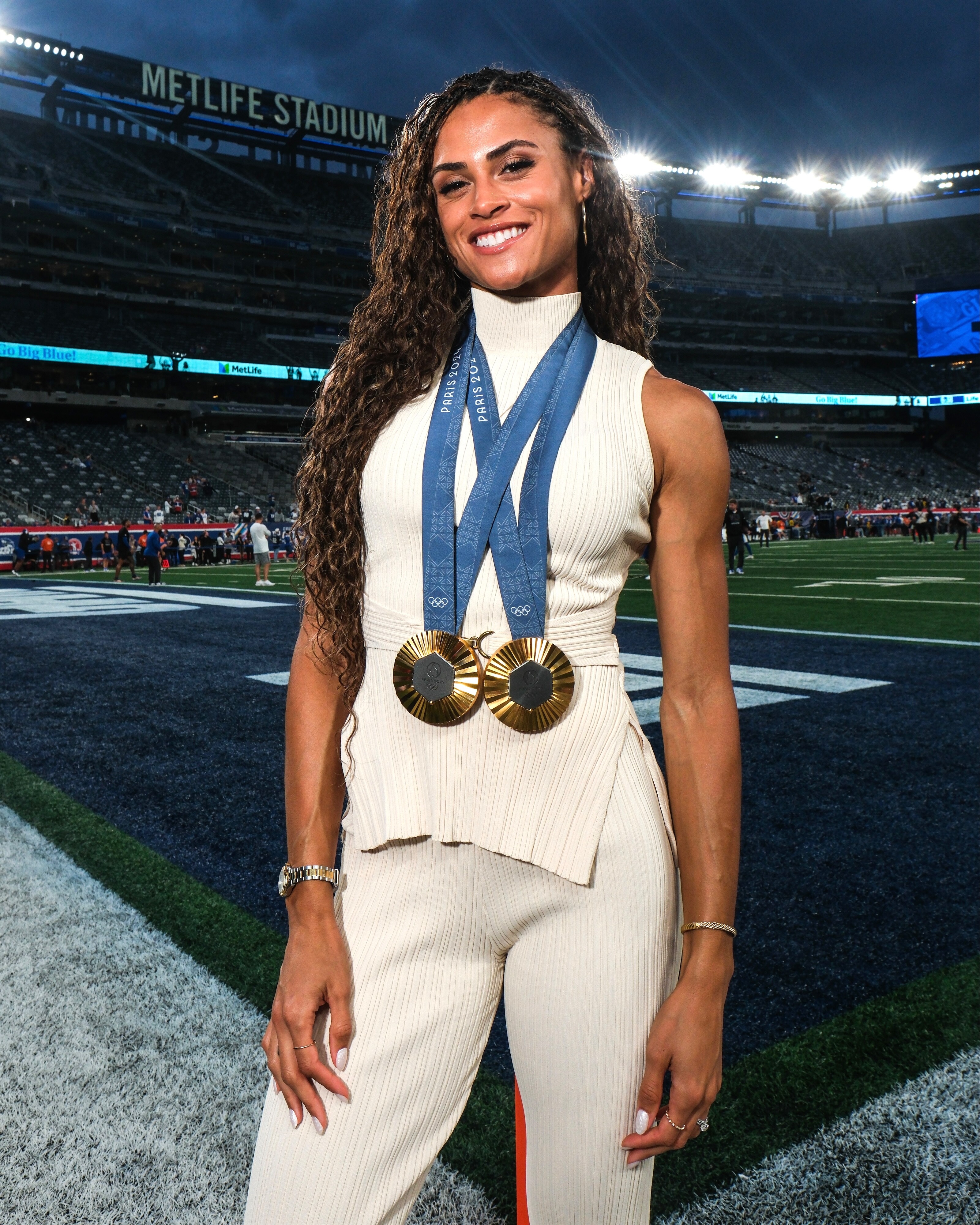
She won the silver medal at the 2019 World Championships. At all four competitions, she also took gold as part of a women's 4 × 400 m relay team.
Login to leave a comment
U.S. vice-presidential candidate Tim Walz runs with TikTok influencer in Central Park
Vice-Presidential candidate Tim Walz ditched his usual running mate on Wednesday, instead joining content creator Kate Mackz on a one-mile run through Central Park. Their vlog quickly went viral on TikTok. The video shows multiple Secret Service agents running alongside the pair.
Mackz, recognized on TikTok as “The Running Influencer,” is known for approaching celebrities on the streets of New York City or Los Angeles and inviting them on a run. When meeting up with Walz, the pair agreed to begin with one mile (1.6 km). As a runner myself, I was surprised to notice that Walz knows what he’s doing–he had a solid, comfortable stride and held up a conversation for the entire run–which ended up being just farther than a mile.

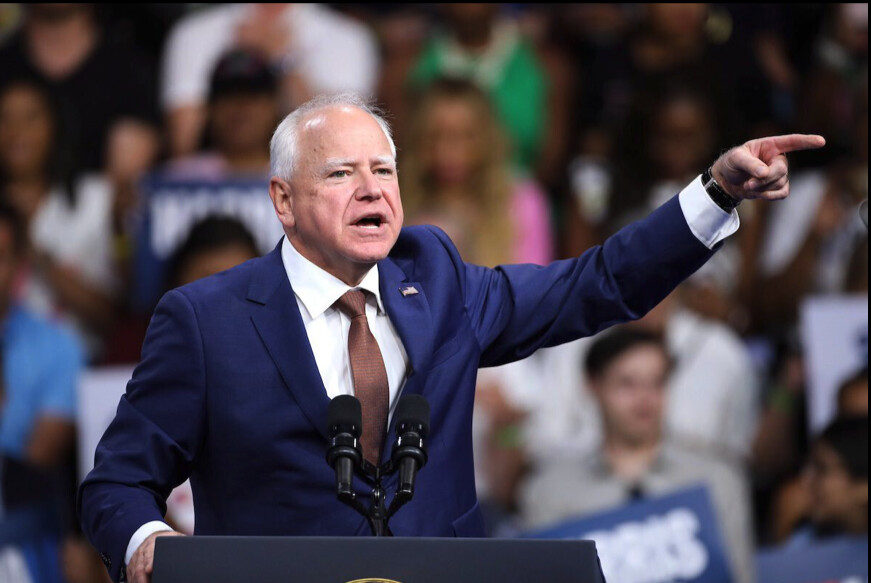
Walz revealed that he picked up running 12 years ago. “It’s the best stress reliever you could possibly find,” he told Mackz. “Good for the soul, good for the body–and you meet a ton of great people.” He admitted that the accompaniment of several Secret Service agents makes the run a little busier, but still fun. Walz noted that all Minnesotans are “outdoor people,” running in all seasons. “This (interview) is great,” Walz said. “I would take every one like this.”
The avid runner has run one marathon: the 2014 Rochester [N.Y.] Marathon, where he finished in 4 hours 41 minutes. “I like half better,” he noted. “I’ve been doing a lot of 10-miles.” In
Impressively, Walz seemed hardly out of breath after Mackz suggested they “pick up the pace a little bit,” talking steadily about the upcoming election. The former teacher and football coach says he was influenced to pursue a political career after the age of 40 by his former students; he revealed that some of his former football players have come out to support him.
“Live in the moment,” Walz said while leaving advice for first-time marathoners. “Don’t get out too fast, enjoy what you’re doing, and know that 99 per cent of people will never do what you’re doing.”
Mackz has also posted videos with world record holder Sydney McLaughlin-Levrone and Australian 10,000m national record holder Lauren Ryan, along with celebrities Jason Derulo, John Krasinski and Jared Leto.
by Running Magazine
Login to leave a comment
Indomitable Grant Holloway clinches 110m hurdles gold medal as Jamaica's Rasheed Broadbell settles for Bronze
Grant Holloway has finally clinched gold at the Olympics stage following a dominating 110m hurdles victory.
America's Grant Holloway has finally added an Olympic title to his collection after winning the final of the 110 meters hurdles at the ongoing Paris games.
Holloway’s victory marks the first time an American has won gold in this event since Aries Merritt's triumph at the London 2012 Olympics. Holloway’s performance was nothing short of exceptional, as he maintained his unbroken winning streak and solidified his status as one of the greatest hurdlers in recent history.
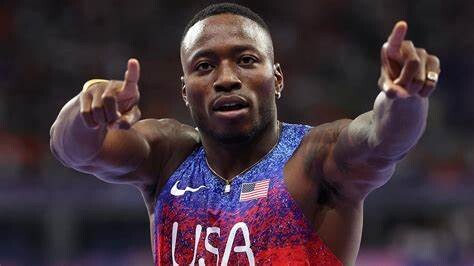
In a close race for the remaining podium spots, U.S. teammate Daniel Roberts captured the silver medal with a time of 13.09 seconds, narrowly edging out Jamaica’s Rasheed Broadbell in a photo finish for the bronze. This marks Roberts' first Olympic medal, adding to the U.S. team’s success in the event.
Holloway’s gold medal not only adds to his impressive collection of accolades but also underscores his dominance in the 110m hurdles.
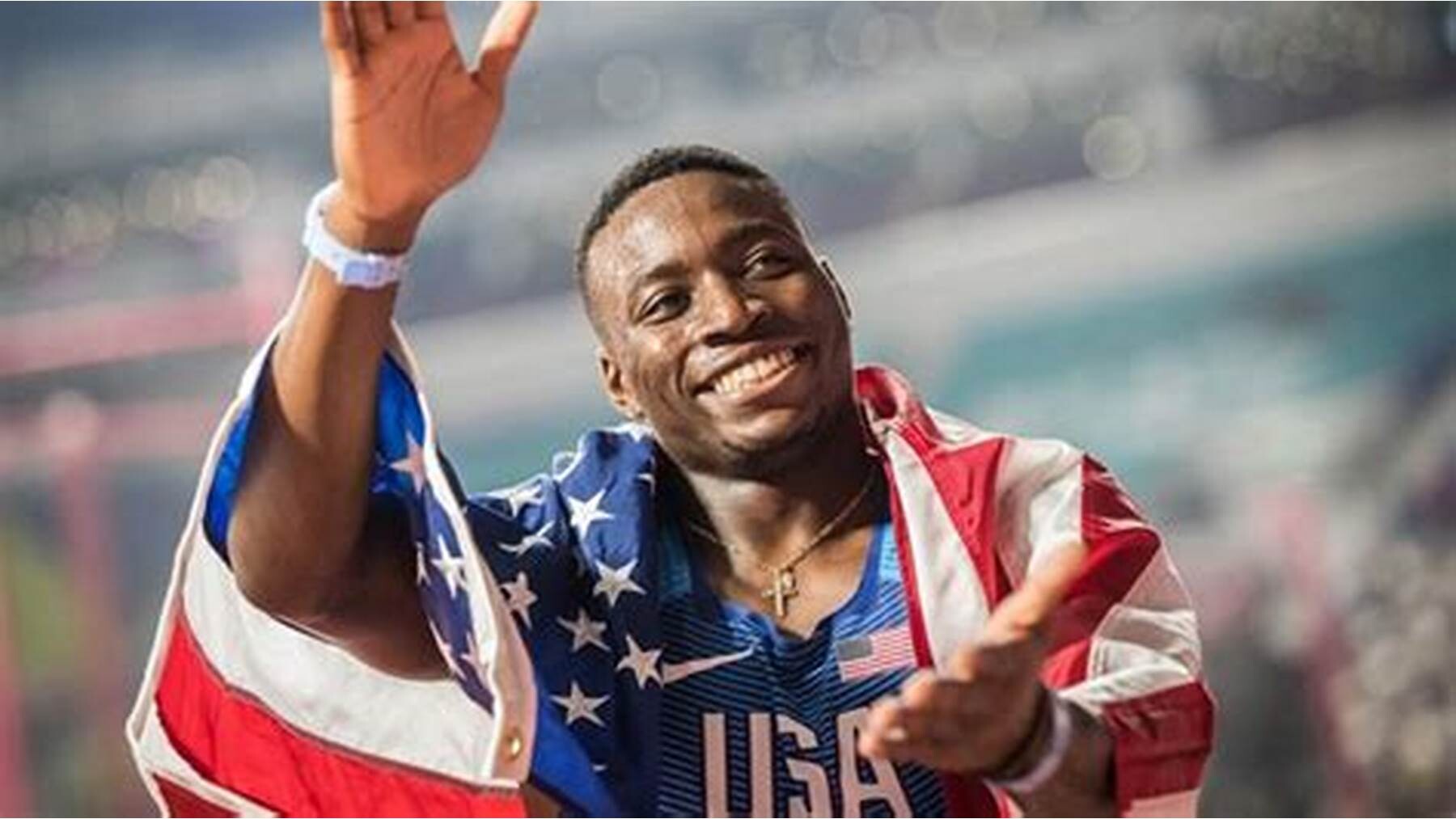
Thursday's victory also brings some redemption for Holloway after a disappointing showing at the Tokyo Games in 2021 where he entered as the favorite but was upset by gold medalist Hansle Parchment of Jamaica. He began the race with a lead through the first 60 meters but surprisingly stumbled over the seventh hurdle, causing him to fall behind and finish in second.
"You guys think about Tokyo a lot, but we're in Paris," Holloway told reporters prior to the race. "I'm looking forward to continuing to show the great form that I'm in. … Everybody is talking about a world record. If it comes, it comes. The first thing we have to take care of is winning."
Holloway did just that, continuing USA's dominance in this year's Track & Field competitions. He is now the sixth American gold medalist runner, joining Noah Lyles (men's 100m), Quincy Hall (men's 400m), Cole Hocker (men's 1,500m), Gabrielle Thomas (women's 200m) and Sydney McLaughlin-Levrone (women's 400m hurdles).
Sydney McLaughlin-Levrone overcomes Femke Bol to succesfully defend 400mH title & set new world record.
by Mark Kinyanjui
Login to leave a comment
Paris 2024 Olympic Games
For this historic event, the City of Light is thinking big! Visitors will be able to watch events at top sporting venues in Paris and the Paris region, as well as at emblematic monuments in the capital visited by several millions of tourists each year. The promise of exceptional moments to experience in an exceptional setting! A great way to...
more...Sydney McLaughlin-Levrone smashes 400m hurdles world record, takes gold
Sydney McLaughlin-Levrone overcomes Femke Bol in the final of the 400mH to succesfuly defend Olympic crown and smash own world record.
Sydney McLaughlin-Levrone once again proved her dominance in the 400 meters hurdles by capturing gold at the Paris 2024 Olympics on Thursday night.
The American track star not only claimed the top spot but also shattered her own world record with a remarkable time of 50.37 seconds, solidifying her legacy as the greatest 400m hurdler of all time.
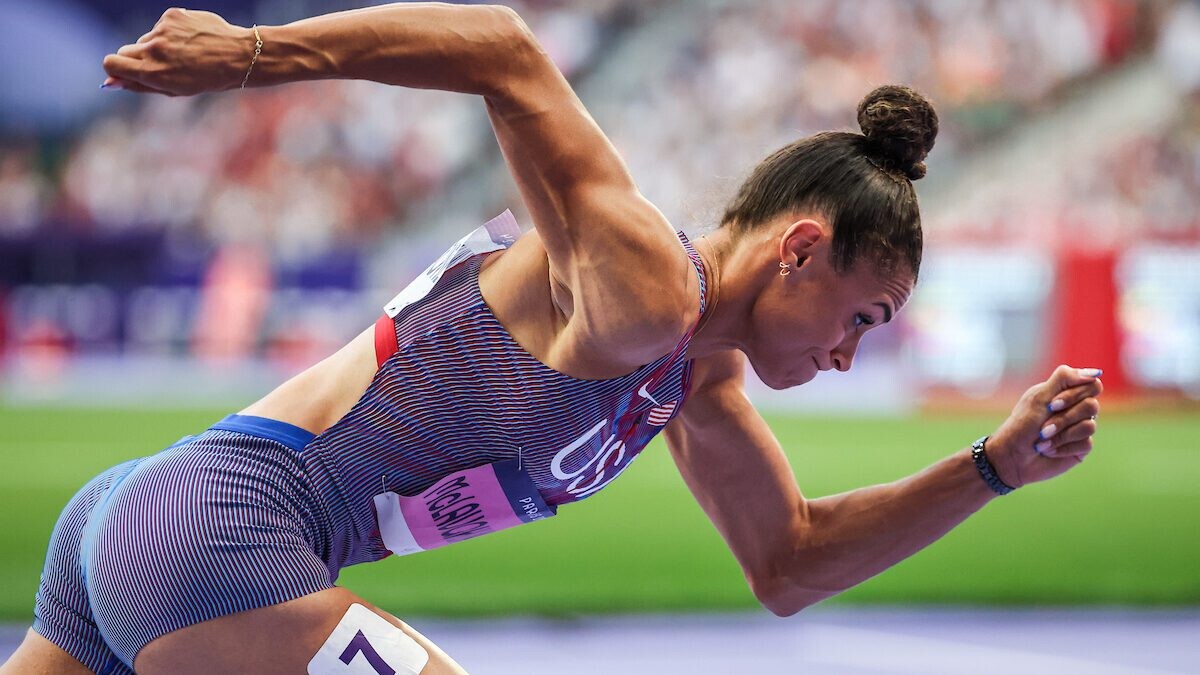
In an intense final, McLaughlin-Levrone faced stiff competition from the Netherlands' Femke Bol, who had been unbeaten in her last 40 races leading up to the Games.
However, Bol could only manage a bronze medal finish with a time of 52.15 seconds, visibly disappointed by her performance and race tactics, which saw her go out too hard too soon. American Anna Cockrell took the silver medal, clocking a personal best of 51.87 seconds.
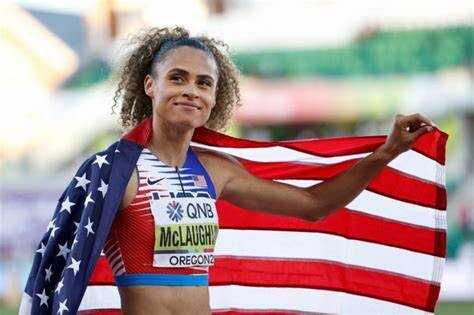
McLaughlin-Levrone, who celebrated her 25th birthday just a day before her triumph, became the first woman to win back-to-back Olympic gold medals in the 400m hurdles, and only the fifth U.S. woman to secure gold in consecutive Olympic Games across any track and field event. Her victory was met with thunderous applause as she draped herself in the American flag, savoring the moment.
This latest achievement adds to McLaughlin-Levrone's growing list of accolades. She had previously set a world record of 50.65 seconds at the Olympic Trials in Oregon in June, but surpassed that mark with her stunning performance in Paris.
McLaughlin-Levrone’s journey to the top began at the Rio 2016 Olympics, where she made her debut at just 17 years old, becoming the youngest U.S. Olympian in track and field since 1972. Although she exited in the semifinals that year, her progression since has been nothing short of extraordinary.
In the lead-up to her gold-medal race, McLaughlin-Levrone appeared to be in peak form, breezing through the semifinals with a time of 52.13 seconds, the fastest among all qualifiers. Her victory in the final was not only a personal triumph but also a testament to her relentless pursuit of excellence.
With the women's 4x400m relay still ahead, McLaughlin-Levrone is expected to compete for another gold medal on Friday, further pushing the boundaries of what she and her competitors can achieve on the track.
by Mark Kinyanjui
Login to leave a comment
Paris 2024 Olympic Games
For this historic event, the City of Light is thinking big! Visitors will be able to watch events at top sporting venues in Paris and the Paris region, as well as at emblematic monuments in the capital visited by several millions of tourists each year. The promise of exceptional moments to experience in an exceptional setting! A great way to...
more...Olympic Track and Field Stars Are Wearing Luxury Watches. Why?
IN TRACK AND FIELD, tenths (and even hundredths) of a second can make or break a race. Performance depends on extremely precise measurements and time rules all. So it makes sense that luxury watch brands would look to those athletes as natural billboards, placing their timepieces on the wrists of some of the sport's top performers.
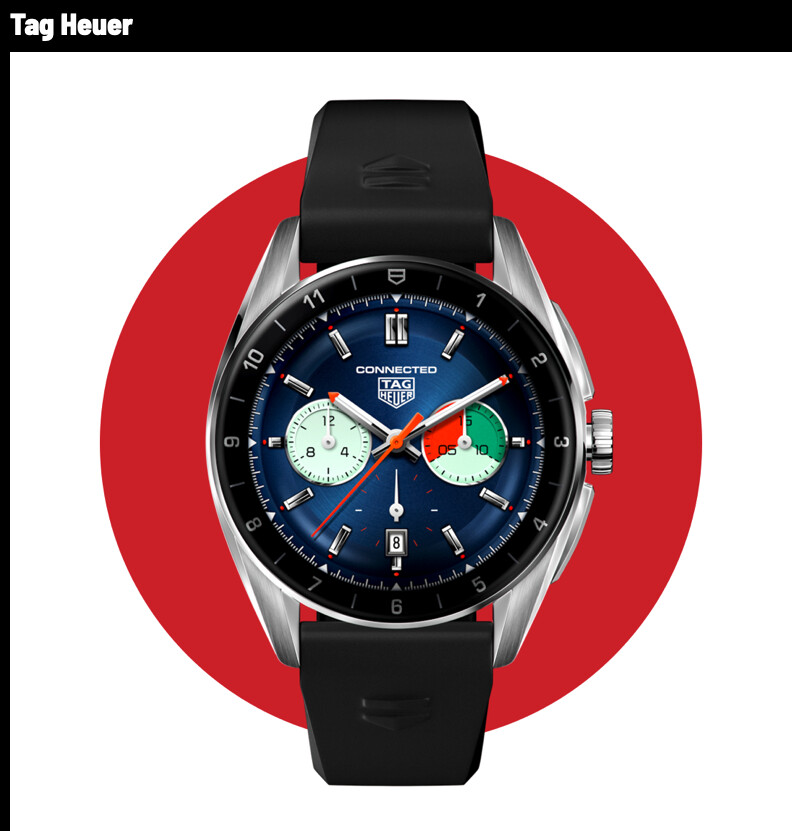
When Noah Lyles, the fastest man in the world, settled into the blocks for the 200-meter finals at the U.S. Olympic Trials in June, 4.5 million viewers tuning in via NBC and Peacock could see the glint of the sun off what appeared to be a $50,000 Omega watch.
Wearing this type of timepiece during a 19.53-second sprint is clearly a flex, since “there’s no performance reason for [these athletes] to wear luxury watches,” explains Aaron Rapf, the founder and CEO of Advantage Sports Marketing Group, a sports agency that connects brands with athletes.
Runners are no stranger to pricy performance watches (a high-end Garmin can cost upwards of $900), and luxury watch companies are increasingly aligned with elite runners to “connect their company values to the sports landscape—which is one of the last bastions of true culture,” he adds. “If you want to be in a moment where you attract millions of people’s eyeballs at one time, it’s sports.”
These race day cameos are part of a more subtle approach to marketing, says Pierre-Loïc Assayag, CEO and co-founder of Traackr, an influencer marketing software company. “In the past, luxury brands were more focused on the product and the luxury associated with that product,” he says. “Now, these companies are taking the top athletes and putting them in front of their target audience, or one close to it, to demonstrate by proximity that ‘we are the precision brand’ or ‘we are the endurance brand.”
The kind of maneuvering uses a third party—one that’s fast, flashy, and accomplishing amazing feats—to craft an image the brand wants audiences to respond to. And by choosing athletes as brand champions, companies deftly align themselves with the hallmarks of high performance: precision, prestige, innovation, exclusivity, heritage, and craftsmanship.
In the past, those buzzwords were more likely to call to mind country club-esque activities (think: tennis or horseback riding) or auto racing, where the traditional consumer has been very upper class, living a high-cost lifestyle. But as culture skews more towards sport, health, and wellness, leaning into the popularity of running opens companies up to a new class of consumers, says Jessica Quillan, a luxury fashion brand and content strategist. “Track and field seems more accessible, because even though these athletes are performing at a super elevated level, anyone can go out and run,” she explains.
By association, watches become a more accessible form of wearable luxury. You may not wear one to train or on race day like the elite, sponsored atheltes, but a sporty aesthetic can translate into your everyday life; post-run, you can still swap your COROS smartwatch for a sleek, sporty timepiece from a brand like Omega (which happens to sponsor the Diamond League, an annual series of pro track and field competitions). And though you may not be ready to buy a five-figure watch now, these companies are playing the long game; by connecting themselves with major players in sport, they’re hoping to build brand recognition and loyalty among potential future customers.
The Watch Brands Olympic Runners Are Wearing
For those looking to upgrade their Garmin—now or as a future reward for finally achieving that personal best—these are a few of the luxury watches your favorite track and field stars have been sporting.
Two-time Olympic gold medalist Sydney McLaughlin-Levrone, who will represent Team USA in Paris again after breaking her own World Record in the 400-meter hurdles in June, has been sponsored by Tag Heuer since 2021.
Tag Heuer is often considered the Cadillac of luxury watches, and McLaughlin-Levrone’s preferred watch, the Connected Calibre E4, is closest to the average runner’s GPS smartwatch: It operates on Wear OS by Google; has a 1.28-inch AMOLED display with crisp resolution; houses a heart rate sensor, barometer, and compass; and holds a 24-hour charge, including a one-hour sports session. The basic model, which includes a rubber strap, starts at $1,250.
Olympic bronze medalist Josh Kerr is a double World Champion—in the 1,500-meter and 3,000-meter—which made him a natural representative for Swiss watch brand Longines, the official partner and timekeeper of the 2022 Commonwealth Games in Birmingham. Kerr, who is not currently working with Longines, recently ran a 3:45.34 in the Bowerman Mile, a historic and prestigious race held annually at the Prefontaine Classic in Eugene, OR, to set a new world-leading time in the event and a new British record. Back in 2022, Kerr wore the-limited edition HydroConquest XXII Commonwealth Games, a sporty steel dive watch with an automatic caliber, or engine, one-directional ceramic bezel, luminescent indices and hands, and an anti-reflective coating for crystal clear readability in any situation.
In addition to their Paris 2024 partnership, Omega is the official sponsor of the Diamond League (an annual series of elite track and field competitions) and counts Noah Lyles—one of the biggest personalities in track and field—as an ambassador. Lyles, who earned a bronze medal in the 200-meter race at the 2020 Tokyo Games and has his sights on breaking Usain Bolt’s records in the 100- and 200-meter races, wears Omega’s iconic Speedmaster Moonphase.
This style was introduced in the 1980s, but the latest model—an oversized, steel-on-steel timepiece—was the first to earn a Master Chronometer certification thanks to a self-winding engine designed to withstand temperature fluctuations, water immersion, and electromagnetic frequencies. The timepiece can also hold up to the shock that comes with covering 100 meters in less than 10 seconds (when it's on Lyles's wrist, at least).
Sprinter Dina Asher-Smith is the fastest British woman on record, with two Olympic bronze medals from the 4 x 100-meter relay to her name. She’s also no stranger to luxury partnerships, having previously modeled for Louis Vuitton, Valentino, and Off-White, and has been working with Hublot since 2018. Asher-Smith has promoted a variation on Hublot’s flagship model, the Big Bang One Click, which starts at $14,200.
Its smaller face was designed for slimmer wrists, and uses the brand’s patented “One Click” fastening system so wearers can swap out the straps for other colors or materials. The sporty, semi-skeletonized hands balance out flashiness of the diamonds on the bezel, and a self-winding caliber packs plenty of power into the compact timepiece.
Ahead of what she says will be her final Olympic Games, Jamaican sprinter Shelly-Ann Fraser-Pryce—the most decorated athlete in 100-meter history—announced a partnership with Richard Mille. Fraser-Pryce wears the RM 07-04 Automatic Sport, the first women’s sports watch from the McLaren of watch brands, which retails at $185,000 (it’s the same watch Nafi Thiam, a double Olympic champion from Belgium, wore while setting a new pentathlon world record in 2023). The skeletonized aesthetic is housed in a compact case with rigid finishings for shock-resistance, and the button on the side allows the wearer to switch between winding, neutral, and time setting modes for the crown. While it would be nearly impossible to read during a race, at 36 grams it’s lighter than most standard running watches.
by Men’s Health
Login to leave a comment
Paris 2024: Favorites and best value picks on the track
We are just four days away from the opening ceremony of the 2024 Paris Olympics and a little over a week from the start of the athletics events at the Stade de France. If you’re looking to place your bets for gold or want to know the favorites for each event (according to Vegas sportsbooks), we’ve got you covered with insights and odds to help you get the best value out of your picks.
Men’s 100m
Favorite: Kishane Thompson (JAM) -105 [world leader]
Best value: Oblique Seville (JAM) +900
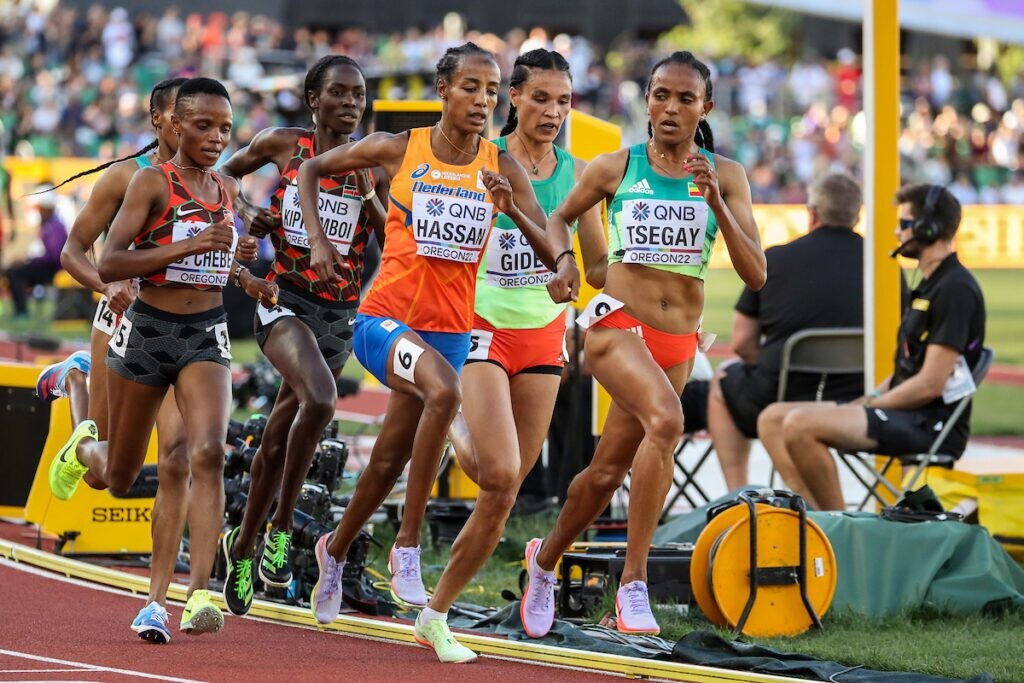
Men’s 200m
Favorite: Noah Lyles (USA) -290 [3x world champion]
Best value: Erriyon Knighton (USA) +1000 [2x world championship medallist]
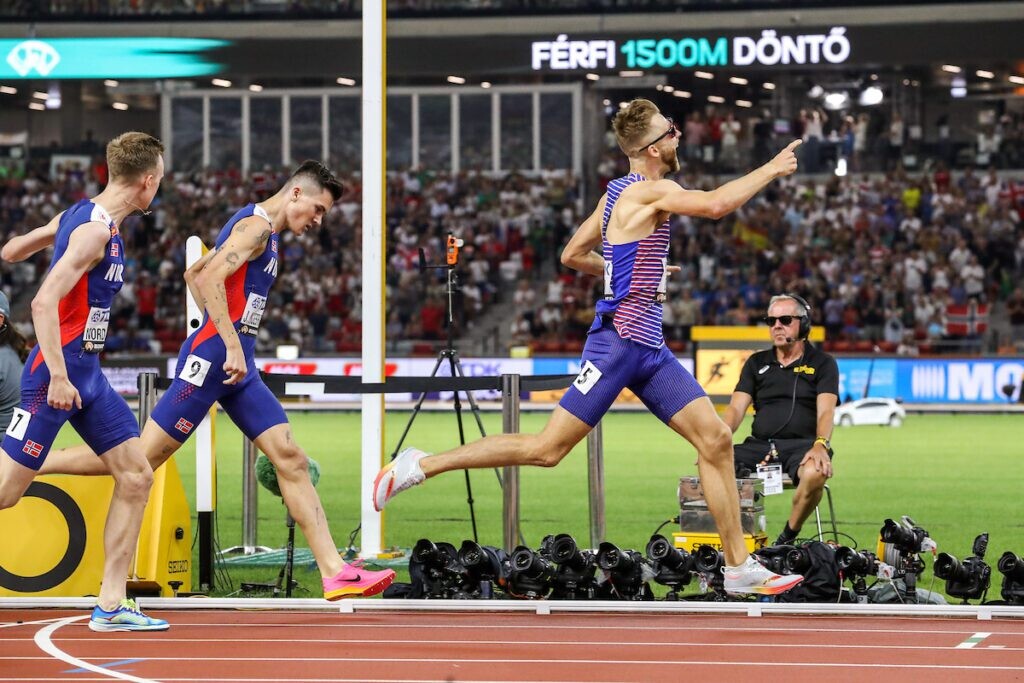
Men’s 400m
Favorite: Matthew Hudson-Smith (GBR) +120 [world silver medalist]
Best value: Steven Gardiner (BAH) +350 [reigning Olympic champion]
Men’s 800m
Favorite: Djamel Sedjati (ALG) -250 [world leader]
Best value: Marco Arop (CAN) +1500 [reigning world champion]
Men’s 1,500m
Favorite: Jakob Ingebrigtsen (NOR) -225 [reigning Olympic champion]
Best value: Josh Kerr (GBR) +175 [reigning world champion]
Men’s 5,000m
Favorite: Jakob Ingebrigtsen (NOR) -290 [reigning world champion]
Best value: George Mills (GBR) +4000
Men’s 10,000m
Favorite: Joshua Cheptegei (UGA) +120 [world record holder]
Best value: Berihu Aregawi (ETH) +600
Men’s 110m hurdles
Favorite: Grant Holloway (USA) -500 [world leader and world champion]
Best value: Hansle Parchment (JAM) +1000 [reigning Olympic champion]
Men’s 400m hurdles
Favorite: Rai Benjamin (USA) +100 [world leader]
Best value: Alison Dos Santos (BRA) +300 [2022 world champion]
Men’s 3,000m steeplechase
Favorite: Lamecha Girma (ETH) -120
Best value: Soufiane El Bakkali (MAR) +190
Men’s marathon
Favorite: Eliud Kipchoge (KEN) -190 [reigning Olympic champion]
Best value: Benson Kipruto (KEN) +900 [2024 Tokyo Marathon champion]
Women’s 100m
Favorite: Sha’Carri Richardson (USA) -225 [reigning world champion]
Best value: Julien Alfred (LCA) +700
Women’s 200m
Favorite: Gabby Thomas (USA) +105 [2020 Olympic bronze medalist]
Best value: Shericka Jackson (JAM) +180 [reigning world champion
Women’s 400m
Favorite: Marileidy Paulino (DOM) -135 [2020 Olympic silver medalist]
Best value: Rhasidat Adeleke (IRL) +700
Women’s 800m
Favorite: Keely Hodgkinson (GBR) -290 [Olympic silver medallist]
Best value: Nia Atkins (USA) +1500
Women’s 1,500m
Favorite: Faith Kipyegon (KEN) -285 [world record holder]
Best value: Jessica Hull (AUS) +1000
Women’s 5,000m
Favorite: Faith Kipyegon (KEN) -285 [world champion]
Best value: Beatrice Chebet (KEN) +750 [world XC champion]
Women’s 10,000m
Favorite: Sifan Hassan (NED) +120 [reigning Olympic champion]
Best value: Gudaf Tsegay (ETH) +250 [reigning world champion]
Women’s 100m hurdles
Favorite: Cyrena Samba-Mayela (FRA) +250 [European champion]
Best value: Tobi Amusan (NGR) +1500 [world record holder]
Women’s 400m hurdles
Favorite: Sydney McLaughlin-Levrone (USA) -700 [world record holder and reigning Olympic champion]
Best value: Femke Bol (NED) +300 [reigning world champion]
Women’s 3,000m steeplechase
Favorite: Beatrice Chepkoech (KEN) n/a [world record holder]
Best value: Sembo Almayew (ETH) n/a
Women’s marathon
Favorite: Tigst Assefa (ETH) +250 [world record holder]
Best value: Hellen Obiri (KEN) +400 [2023 & 2024 Boston Marathon champion]
by Marley Dickinson
Login to leave a comment
Paris 2024 Olympic Games
For this historic event, the City of Light is thinking big! Visitors will be able to watch events at top sporting venues in Paris and the Paris region, as well as at emblematic monuments in the capital visited by several millions of tourists each year. The promise of exceptional moments to experience in an exceptional setting! A great way to...
more...Paris 2024 Olympics: 5 races most likely to yield gold for Team USA
Team USA are big favorites to top the Olympics medal standings in track and field yet again and here are five races where the Americans will likely grab gold in Paris.
US Track and Field finally unveiled its team to the Paris Olympics where they hope to finish top of the medal standings yet again.
Team USA scooped seven gold, 12 silver and seven bronze medals at the Tokyo 2020 Olympics, taking their total medal tally from track and field to 26.
Heading into Paris 2024, there is optimism that they will increase their tally following the emergence of new runners, added to the star quality in the team.
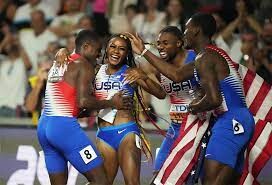
The US team is comprised of world champions Noah Lyles, Sha’Carri Richardson, Grant Holloway among others while there are some like Kenny Bednarek who look in good form heading to Paris.
Pulse Sports looks at where Team USA is likely to win gold medals from on the track at the Paris 2024 Olympics.
Men’s 100m
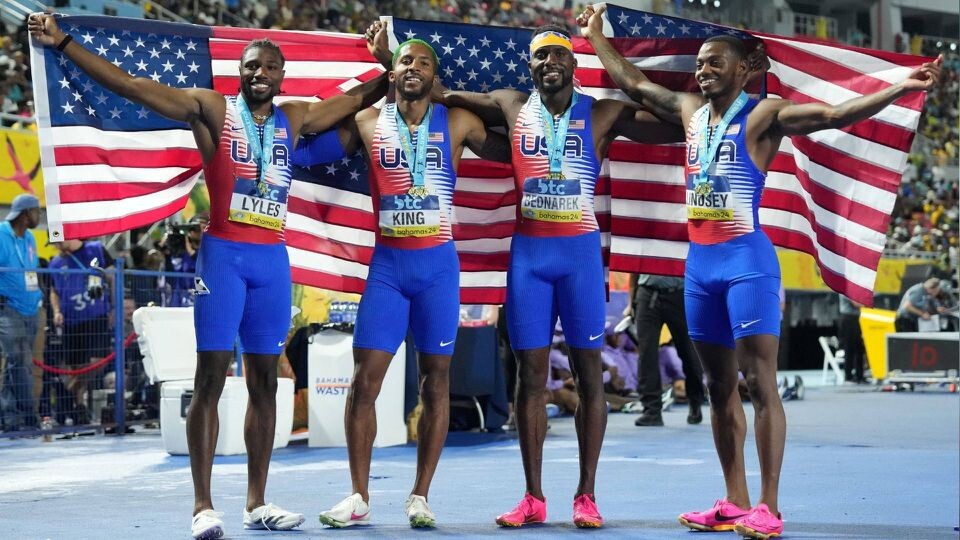
The USA men’s team has world champion Noah Lyles, Kenny Bednarek and former world champion Fred Kerley.
Of the three, Lyles is hot favorite for gold in Paris and laid down the marker with his dominant performance at the Olympics trials.
He will likely face stiff competition from Jamaicans Kishane Thomas and Oblique Seville as well as Britain’s Zharnel Hughes, Bednarek and Botswana’s Letsile Tebogo. However, his experience and form suggest he will bag gold.
Women’s 100m
Another American tipped to win gold is world 100m champion Sha’carri Richardson.
Richardson’s bid for a double failed at the trials when she did not make the 200m team and will have all her focus on the 100m race.
That is not good news for her rivals, who include Jamaicans Shericka Jackson and Shelly-Ann Fraser-Pryce.
She is joined by Melissa Jefferson and Twanisha Terry on the US team but with defending champion Elaine Thompson-Herah not in Paris, few of the other rivals pose real danger, making Richardson a shoo-in for gold.
Men’s 200m
Winning gold in the men’s 200m will be tough for the Americans but they have two good runners capable of achieving it.
Noah Lyles, who has won three world titles over the distance, appears favorite but Kenny Bednarek could just spoil his party which would still be a good thing for Team USA.
The two are joined by Erriyon Knighton but face a threat from Canadian Andre De Grasse, Letsile Tebogo of Botswana and Briton Zharnel Hughes.
However, it is America’s race to lose and it will depend on how Lyles and Bednarek execute their strategy.
Men's 110m hurdles
Triple world champion Grant Holloway is joined on the US team by Freddie Crittenden and Daniel Roberts but he is the man likely to win gold at the Olympics.
Holloway does not dominate outdoors as he does indoors but he is in great form as he heads to Paris having won all his races this year, including last week’s Monaco Diamond League.
Jamaican Hansle Parchment will want to defend his title while home favorite Sasha Zhoya will also pose a threat but Holloway is backed to improve on his silver medal of 2020 this time.
Women’s 400m hurdles
World record holder Sydney McLaughlin-Levrone will start as favorite despite world champion Femke Bol’s good form that saw her break the European record on Sunday.
She made her intensions clear at the Olympics trials when she broke her own world record again, clocking 50.65. Anna Cockrell and Jasmine Jones finished second and third to join her.
McLaughlin-Levrone is not only in good form but also in great shape to defend her crown and few will get close to her in the present condition.
by Joel Omotto
Login to leave a comment
Paris 2024 Olympic Games
For this historic event, the City of Light is thinking big! Visitors will be able to watch events at top sporting venues in Paris and the Paris region, as well as at emblematic monuments in the capital visited by several millions of tourists each year. The promise of exceptional moments to experience in an exceptional setting! A great way to...
more...Meet USA Women's athletics team for Paris 2024 Olympic Games
Discover Team USA's women athletes ready for Paris 2024, featuring new talent and seasoned champions aiming for Olympic glory.
The Olympic track and field trials have concluded and the roster for the USA Women’s Athletics Team heading to the Paris 2024 Olympic Games is set.
This year’s team is a powerful mix of returning champions and new faces, each ready to leave their mark on the grandest stage in sports.
Pulse Sports dives into the details of each event and the athletes representing the United States.
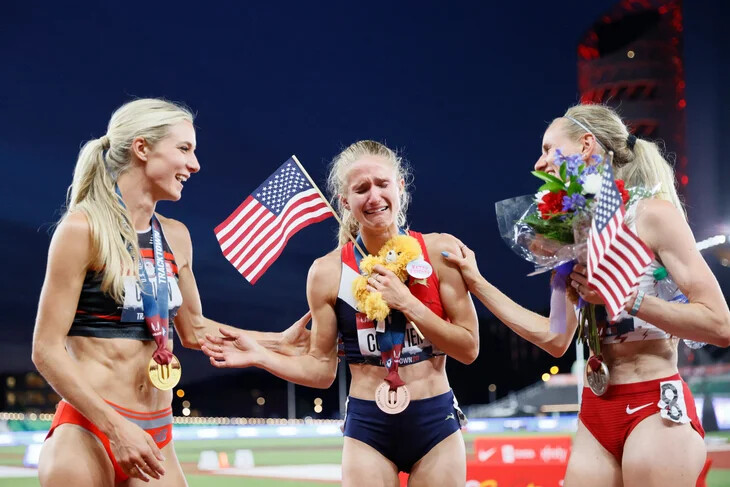
Marathon
The USA women’s marathon team sees a complete refresh from the last Olympics, introducing Dakotah Lindwurm, Fiona O’Keeffe, and Emily Sisson.
O’Keeffe leads this group, having clinched her spot by winning this year's Olympic marathon trials in an impressive 2:22.10.
The team looks to build on the bronze medal performance from three years ago with this new, dynamic lineup.
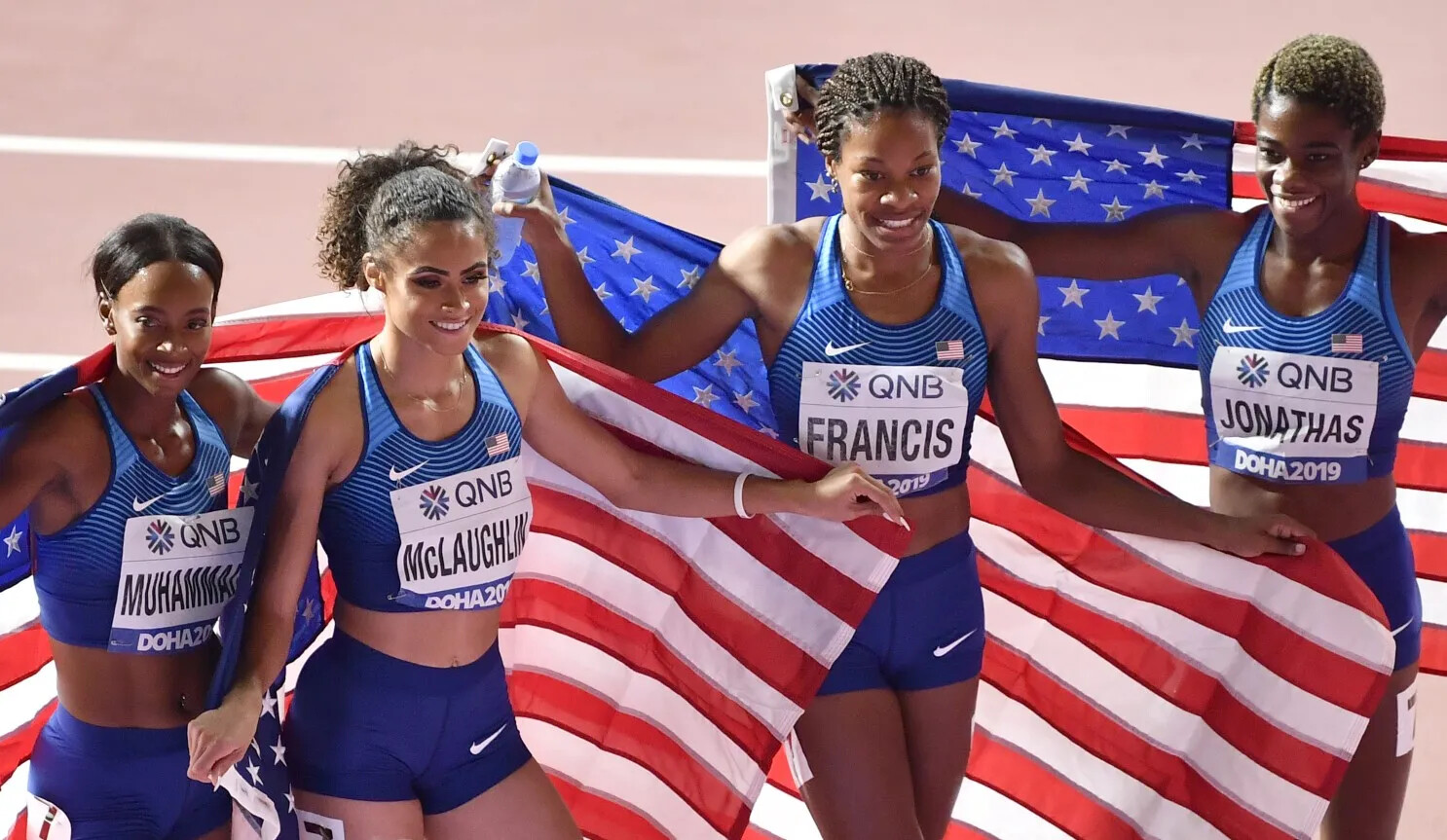
100m
Sha'Carri Richardson is making a much-anticipated return to the Olympics in the 100m dash after missing the previous games.
Her trial time of 10.71 seconds shows she’s back with blazing speed and ready to compete on the Olympic track.
Joining her are Melissa Jefferson and Twanisha Terry, both formidable sprinters who have proven their prowess to secure their spots in this highly competitive event.
100m Hurdles
The 100m hurdles will feature an entirely new USA trio: Masai Russell, Alaysha Johnson, and Grace Stark.
Russell dominated at the trials with a swift 12.25 seconds, while Johnson and Stark showed exceptional skill, each clocking in at 12.31 seconds.
This team replaces the previous Olympic medalists and aims to bring a new energy to the hurdles.
200m
Gabby Thomas returns to the 200m, having won a bronze in Tokyo and posting even better times since.
Alongside her are Brittany Brown and McKenzie Long, both just hundredths of a second apart at the trials, setting the stage for a strong competition in Paris.
Notably, Sha'Carri Richardson, despite high expectations, will not compete in this event after finishing fourth at the trials.
400m
Kendall Ellis, Aaliyah Butler, and Alexis Holmes are the new faces for the 400m, each having run sub-50 seconds at the trials—a benchmark not met by the previous Olympic team.
Their performances suggest that they are serious contenders for the podium in Paris.
400m Hurdles
Sydney McLaughlin-Levrone returns after setting a world record at the trials, clearly positioning herself as the favorite to defend her Olympic title.
She is joined by Anna Cockrell and newcomer Jasmine Jones, rounding out a team that mixes experience with fresh talent.
800m
With Athing Mu absent due to a fall at the trials, Nia Akins took the lead, winning the women's 800m in a commanding 1:57.36.
Allie Wilson and Juliette Whittaker also qualified bringing new energy to an event that saw unexpected twists during the trials.
5000m and 10,000m
Elle St. Pierre narrowly outpaced Elise Cranny in the 5000m, with Karissa Schweizer also making the team.
Schweizer and Parker Valby are waiting on world rankings to confirm their spots in the 10,000m, adding an element of suspense as they aim to compete in both distances.
Discus
Valarie Allman is set to defend her Olympic title in the discus throw, having dominated the trials with a throw of 70.73 meters.
Veronica Fraley, joining her, also showed strong form, ensuring that Team USA remains a top contender in this event.
Hammer
Annette Echikunwoke and DeAnna Price, both meeting the Olympic standard, are ready to improve upon their previous Olympic performances.
Their impressive throws at the trials indicate they are in peak form.
Heptathlon
Anna Hall, Chari Hawkins, and Taliyah Brooks are set for the heptathlon, each with their own story of redemption and debut at the Olympics.
Their diverse skills across multiple events make them versatile and formidable competitors.
High Jump
Vashti Cunningham and Rachel Glenn, both clearing the Olympic standard, aim to surpass their previous performances.
Their consistent top-three finishes at trials underscore their capabilities and medal potential.
Javelin
Maggie Malone Hardin is the sole qualifier for the javelin throw, her victory at the trials marking her as a key athlete to watch in this discipline.
Long Jump
Tara Davis-Woodhall, Jasmine Moore, and Monae' Nichols are set to represent the USA in the long jump.
Davis-Woodhall's recent silver at the world championships positions her as a favorite for gold in Paris.
Pole Vault
Bridget Williams, Katie Moon, and Brynn King, each having cleared impressive heights at the trials, are the pole vaulters heading to Paris.
Their collective performances suggest a strong potential for medal finishes.
3,000m Steeplechase
Valerie Constien, Courtney Wayment, and Marisa Howard, each having excelled at the trials, are prepared to make their mark in the steeplechase.
Their exceptional times are indicative of their strong conditioning and competitive spirit.
Shot Put
Chase Jackson, Raven Saunders, and Jaida Ross form a powerful trio in shot put.
Jackson's leading throw at the trials sets her up as a medal hopeful, while Saunders looks to add to her Tokyo silver.
Triple Jump
Jasmine Moore, Keturah Orji, and Tori Franklin are ready to challenge the distances that will be seen in Paris.
Moore's standout performance at the trials signals great potential for an impactful showing.
by Festus Chuma
Login to leave a comment
Paris 2024 Olympic Games
For this historic event, the City of Light is thinking big! Visitors will be able to watch events at top sporting venues in Paris and the Paris region, as well as at emblematic monuments in the capital visited by several millions of tourists each year. The promise of exceptional moments to experience in an exceptional setting! A great way to...
more...What You Need to Know About the U.S. Track and Field Olympic Trials
From June 21-30, more than 900 runners, throwers, and jumpers will put it all on the line for a chance to compete for Team USA at the Paris Olympics
The U.S. Track and Field Olympic Trials is a showcase of hundreds of America’s best track and field athletes who will be battling for a chance to qualify for Team USA and compete in this summer’s Paris Olympics. For many athletes competing in Eugene, simply making it on to the start line is a life-long accomplishment. Each earned their spot by qualifying for the trials in their event(s). The athlete qualifier and declaration lists are expected to be finalized this week.
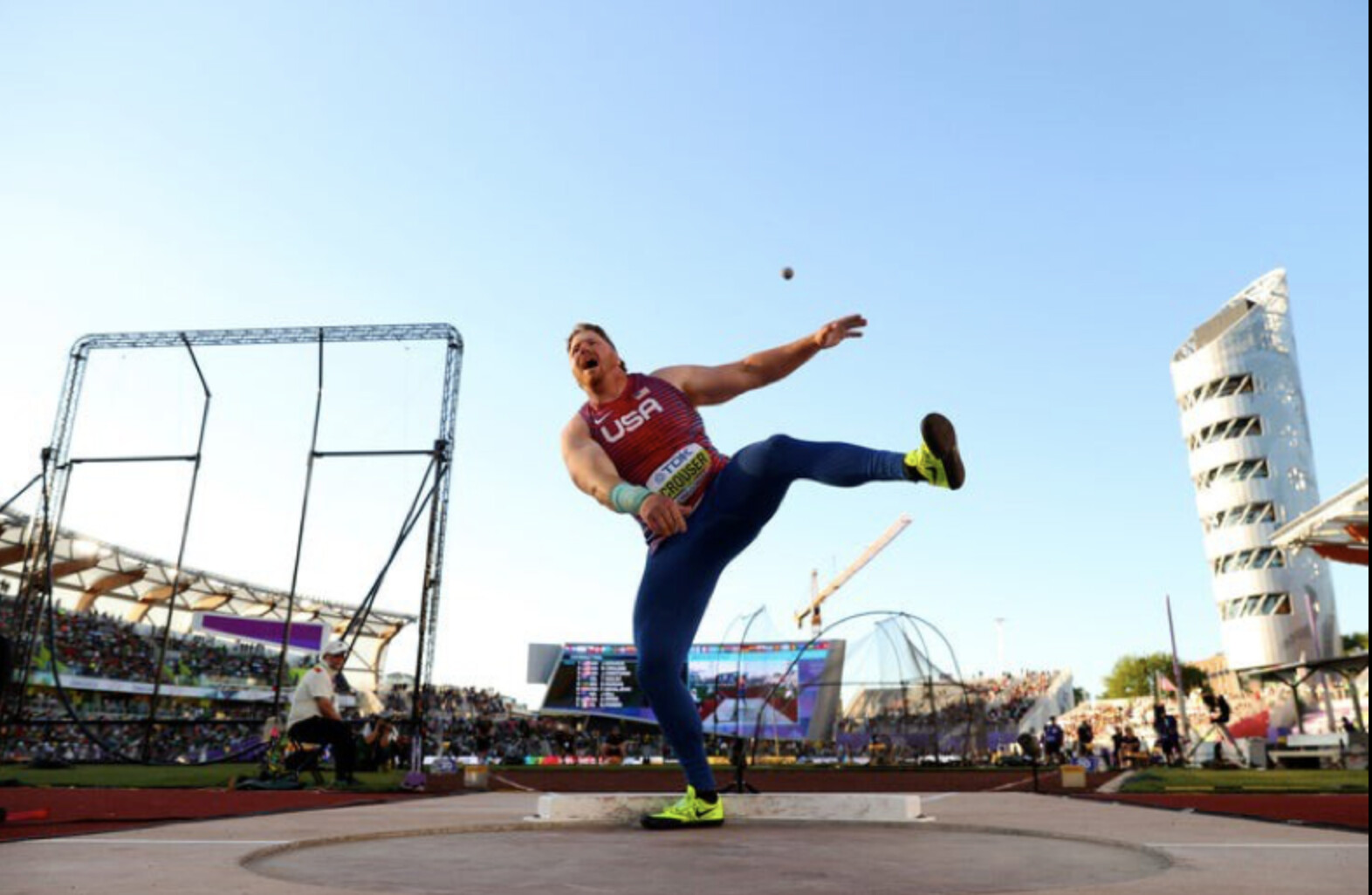

But for the highest echelon of athletes, the trials defines a make-or-break moment in their career. Only three Olympic team spots (in each gender) are available in each event, and given the U.S. depth in all facets of track and field—sprints, hurdles, throws, jumps, and distance running events—it’s considered the world’s hardest all-around team to make. How dominant is the U.S. in the world of track and field? It has led the track and field medal count at every Olympics since 1984.
At the trials, there are 20 total events for women and men—10 running events from 100 meters to 10,000 meters (including two hurdles races and the 3,000-meter steeplechase), four throwing events (discus, shot put, javelin, and hammer throw), four jumping events (long jump, triple jump, high jump, and pole vault), the quirky 20K race walking event, and, of course, the seven-event heptathlon (women) and the 10-event decathlon (men).
(At the Olympics, Team USA will also compete in men’s and women’s 4×100-meter and 4×400-meter relays, plus a mixed gender 4×400, and a mixed gender marathon race walk. The athletes competing on these teams will be drawn from those who qualify for Team USA in individual events, along with alternates who are the next-best finishers at the trials.
There’s also the Olympic marathon, but the U.S. Olympic Trials Marathon was held on February 3 in Orlando, Florida, to give the athletes enough time to recover from the demands of hammering 26.2 miles before the big dance in Paris.
Although some countries arbitrarily select their Olympic track and field teams, the U.S. system is equitable for those who show up at the Olympic Trials and compete against the country’s best athletes in each particular event. There’s just one shot for everyone, and if you finish among the top three in your event (and also have the proper Olympic qualifying marks or international rankings under your belt), you’ll earn the opportunity of a lifetime—no matter if you’re a medal contender or someone who burst onto the scene with a breakthrough performance.
The top performers in Eugene will likely be contenders for gold medals in Paris. The list of American stars is long and distinguished, but it has to start with sprinters Sha’Carri Richardson and Noah Lyles, who will be both competing in the coveted 100 and 200 meters. Each athlete won 100-meter titles at last summer’s world championships in Budapest and ran on the U.S. gold-medal 4×100 relays. (Lyles also won the 200) Each has been running fast so far this spring, but more importantly, each seems to have the speed, the skill, and swagger it takes to become an Olympic champion in the 100 and carry the title of the world’s fastest humans.
But first they have to qualify for Team USA at the Olympic Trials. Although Lyles is the top contender in the men’s 100 and second in the world with a 9.85-second season’s best, five other U.S. athletes have run sub-10-second efforts already this season. Richardson enters the meet No. 2 in the U.S. and No. 3 in the world in the women’s 100 (10.83), but eight other Americans have also broken 11 seconds. That will make the preliminary heats precariously exciting and the finals (women’s on June 22, men’s on June 23) must-see TV.
There are five returning individual Olympic gold medalists competing in the U.S. Olympic Trials with the hopes of repeating their medals in Paris—Athing Mu (800 meters), Sydney McLaughlin-Levrone (400-meter hurdles), Katie Moon (pole vault), Vallarie Allman (discus), and Ryan Crouser (shot put)—but there are more than a dozen other returning U.S. medalists from the Tokyo Olympics, as well as many more from the 2023 world championships, including gold medalists Chase Ealey (shot put), Grant Holloway (110-meter hurdles), Laulauga Tausaga (discus), and Crouser (shot put).
The most talented athlete entered in the Olympic Trials might be Anna Hall, the bronze and silver medalist in the seven-event heptathlon at the past two world championships. It’s an epic test of speed, strength, agility, and endurance. In the two-day event, Hall and about a dozen other women will compete in the 100-meter hurdles, high jump, shot put, 200 meters, long jump, javelin throw, and 800 meters, racking up points based on their performance in each event. The athletes with the top three cumulative totals will make the U.S. team. At just age 23, Hall is poised to contend for the gold in Paris, although Great Britain’s Katarina Johnson-Thompson, the world champion in 2019 and 2023, is also still in search of her first Olympic gold medal after injuries derailed her in 2016 and 2021.
If you can find your way to Eugene—and can afford the jacked-up hotel and Airbnb prices in town and nearby Springfield—you can watch it live in person at Hayward Field. Rebuilt in 2021, it’s one of the most advanced track and field facilities in the world, with an extremely fast track surface, a wind-blocking architectural design, and 12,650 seats that all offer great views and close-to-the-action ambiance. Tickets are still available for most days, ranging from $45 to $195.
If you can’t make it to Eugene, you can watch every moment of every event (including preliminary events) via TV broadcasts and livestreams. The U.S. Olympic Trials will be broadcast live and via tape delay with 11 total broadcast segments on NBC, USA Network, and Peacock. All finals will air live on NBC during primetime and the entirety of the meet will be streamed on Peacock, NBCOlympics.com, NBC.com and the NBC/NBC Sports apps.
The Olympic Trials will be replete with young, rising stars. For example, the men’s 1500 is expected to be one of the most hotly contested events and the top three contenders for the Olympic team are 25 and younger: Yared Nuguse, 25, the American record holder in the mile (3:43.97), Cole Hocker, 23, who was the 2020 Olympic Trials champion, and Hobbs Kessler, 21, who turned pro at 18 just before racing in the last Olympic Trials. Sprinter Erriyon Knighton, who turned pro at age 16 and ran in the Tokyo Olympics at age 17, is still only 20 and already has two world championships medals under his belt. Plus, the biggest track star from the last Olympics, Sydney McLaughlin-Levrone, is aiming for her third Olympics and third Olympic gold (she won the 400-meter hurdles and was on the winning 4×400 relay in Tokyo), and she’s only 24.
Several young collegiate stars could earn their place on the U.S. team heading to Paris after successful results in the just-completed NCAA championships. Leading the way are double-NCAA champions McKillenzie Long, 23, a University of Mississippi senior who enters the trials ranked sixth in the world in the 100 (10.91) and first in the 200 (21.83), and Parker Valby, a 21-year-old junior at the University of Florida, who ranks fifth in the U.S. in the 5,000 meters (14:52.18) and second in the 10,000 meters (30:50.43). Top men’s collegiate runners include 5,000-meter runner Nico Young (21, Northern Arizona University), 400-meter runner Johnnie Blockburger (21, USC), and 800-meter runners Shane Cohen (22, Virginia) and Sam Whitmarsh (21, Texas A&M).
It’s very likely. Elle St. Pierre is the top-ranked runner in both the 1500 and the 5,000, having run personal bests of 3:56.00 (the second-fastest time in U.S. history) and 14:34.12 (fifth-fastest on the U.S. list) this spring. Although she’s only 15 months postpartum after giving birth to son, Ivan, in March 2023, the 29-year-old St. Pierre is running better and faster than ever. In January, she broke the American indoor record in the mile (4:16.41) at the Millrose Games in New York City, then won the gold medal in the 3,000 meters at the indoor world championships in Glasgow in March.
St. Pierre could be joined by two world-class sprinters. Nia Ali, 35, the No. 2 ranked competitor in the 100-meter hurdles and the 2019 world champion, is a mother of 9-year-old son, Titus, and 7-year-old daughter, Yuri. Quanera Hayes, 32, the eighth-ranked runner in the 400 meters, is the mother to 5-year-old son, Demetrius. Hayes, a three-time 4×400 relay world champion, finished seventh in the 400 at the Tokyo Olympics.
Meanwhile, Kate Grace, a 2016 Olympian in the 800 meters who narrowly missed making Team USA for the Tokyo Olympics three years ago, is back running strong at age 35 after a two-year hiatus during which she suffered from a bout of long Covid and then took time off to give birth to her son, River, in March 2023.
No, unfortunately, there are a few top-tier athletes who are hurt and won’t be able to compete. That includes Courtney Frerichs (torn ACL), the silver medalist in the steeplechase at the Tokyo Olympics in 2021; Alicia Monson (torn medial meniscus), a 2020 Olympian in the 10,000 meters, the American record holder in the 5,000 and 10,000 meters, and the fifth-place finisher in the 5,000 at last year’s world championships; and Joe Klekcer (torn adductor muscle), who was 16th in the Tokyo Olympics and ninth in the 2022 world championships in the 10,000. Katelyn Tuohy, a four-time NCAA champion distance runner for North Carolina State who turned pro and signed with Adidas last winter, is also likely to miss the trials due to a lingering hamstring injury. There is also some doubt about the status of Athing Mu (hamstring), the Tokyo Olympics 800-meter champion, who has yet to race in 2024.
Meanwhile, Emma Coburn, a three-time Olympian, 2017 world champion, and 10-time U.S. champion in the 3,000-meter steeplechase, broke her ankle during her season-opening steeplechase in Shanghai on April 27. She underwent surgery a week later, and announced at the time that she would miss the trials, but has been progressing quickly through her recovery. If both she and Frerichs miss the meet, it will leave the door wide open for a new generation of steeplers—including 2020 Olympian Valerie Constein, who’s back in top form after tearing her ACL at a steeplechase in Doha and undergoing surgery last May.
The U.S. earned 41 medals in track and field at the 2020 Paralympic Games in Tokyo—including 10 gold medals—which ranked second behind China’s 51. This year’s Paralympics will follow the Olympics from August 28-September 8 in Paris.
The 2024 U.S. Paralympic Trials for track and field will be held from July 18-20 at the Ansin Sports Complex in Miramar, Florida, and Paralympic stars Nick Mayhugh, Brittni Mason, Breanna Clark, Ezra Frech, and Tatyana McFadden are all expected to compete.
In 2021 at the Tokyo Paralympics, Mayhugh set two new world records en route to winning the 100 meters (10.95) and 200 meters (21.91) in the T-37 category, and also took the silver medal in the 400 meters (50.26) and helped the U.S. win gold and set a world record in the mixed 4×100-meter relay (45.52). Clark returns to defend her Paralympic gold in the T-20 400 meters, while McFadden, a 20-time Paralympic medalist who also competed on the winning U.S. mixed relay, is expected to compete in the T-54 5,000 meters (bronze medal in 2021).
Livestream coverage of the U.S. Paralympic Trials for track and field will be available on Peacock, NBCOlympics.com, NBC.com, and the NBC/NBC Sports app, with TV coverage on CNBC on July 20 (live) and July 21 (tape-delayed).
Login to leave a comment
Sydney McLaughlin-Levrone on her U.S. Olympic Trials prep ahead of Paris 2024
With the U.S. Olympic Team Trials for track and field just few days away, the building blocks seem to be coming together for Sydney McLaughlin-Levrone.
"I'm feeling good," McLaughlin-Levrone told a small cluster of reporters at the USATF NYC Grand Prix on Sunday (9 June) after she soared to victory in the open 400m.
"Good" could be an understatement: She was just 0.05 seconds off of Sanya Richards Ross' 48.70 from 2006, the American record, in what was McLaughlin-Levrone's first outing in the event in the 2024 season.

"OMG. That was unbelievable!" a more expressive - and perhaps somehwat relieved - Richards Ross said in the NBC commentary booth after Sydney's 48.75. "Wow. Wow. Wow! Great run by Sydney!"
The time was a world lead in the event.
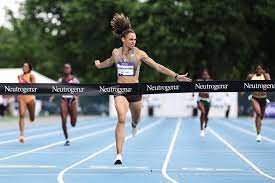
It came a little more than a week after her best-of-the-season 52.70 in the 400m hurdles - the event in which she is the world record holder and reigning Olympic champion.
"I'll take that," McLaughlin-Levrone said of the time and the victory, even if it wasn't exactly what she was going for. "[I wanted] the American record," she added when asked about the hope for the day.
The 24-year-old appears to have a one-track mind with the Olympic Games Paris 2024 drawing ever closer. The last five weeks have entailed five wins across four different events: The 400m flat, 200m, 100m hurdles and - her signature - 400m hurdles.
"I'm sure Bobby will have some notes for me," she said, cracking a smile when bringing up legendary coach Bobby Kersee after her New York win.
SYDNEY MCLAUGHLIN-LEVRONE: EYES ON PARIS 2024
McLaughlin-Levrone let her speed do the talking in New York with the 21 June start at Trials in Eugene, Oregon: "I'm just getting ready for the Trials... getting ready for the Games," she said.
She sat on the track for a good 10 minutes at Icahn Stadium in NYC after her win, catching her breath and doing a light amount of stretching. She's still cautious of the knee injury that interrupted her 2023 season, forcing her out of the World Championships.
The team is attacking from a technical perspective. Facing a headwind on Sunday, she was forced to dig deep in her training to finish strong.
"I wanted to get out there and get a race under me," she said on NBC of the 400m. "It's working on the back-end work. Working on coming home. I'm going to need it for those hurdles."
After her 52.70 world lead in the 400m hurldes on 31 May, Femke Bol, the Olympic bronze medallist from Tokyo 2020 in 2021, went 53.07 two days later at the Diamond League stop in Stockholm.
"I'm going to go back home and continue to plan some stuff," McLaughlin-Levrone said in New York.
A mere 0.05 off a national record, McLaughlin-Levrone shrugged it off in a way.
"I don't think I would count that as 'crazy,'" she said in response to one reporter.
A minute later, Sydney was thanking reporters and walking away... clearly determined to get to the next step in her path towards another Olympic podium.
by Nick McCarvel
Login to leave a comment
U.S. Olympic Team Trials Track And Field
Eugene, Oregon has been awarded the 2024 U.S. Olympic Team Trials - Track & Field, USA Track & Field and the U.S. Olympic & Paralympic Committee announced today. From June 21 to 30, Hayward Field at the University of Oregon will be home to one of the biggest track and field competitions in the country, as the U.S. Olympic Team...
more...Why Athing Mu has withdrawn from clash against Mary Moraa & Keely Hodgkinson at Prefontaine Classic
The renewal of the rivalry between Athing Mu, Keely Hodgkinson, and Mary Moraa will have to be postponed following the Mu's withdrawal from the Prefontaine Classic.
Athing Mu’s head coach Bobby Kersee has announced that the Olympic champion will miss the looming showdown against world champion Mary Moraa and world bronze medallist Keely Hodgkinson at the Prefontaine Classic, the Diamond League Meeting in Eugene, Oregon.
The event is scheduled for Saturday, May 25 and Mu has been forced to withdraw due to a lingering soreness in her left hamstring.
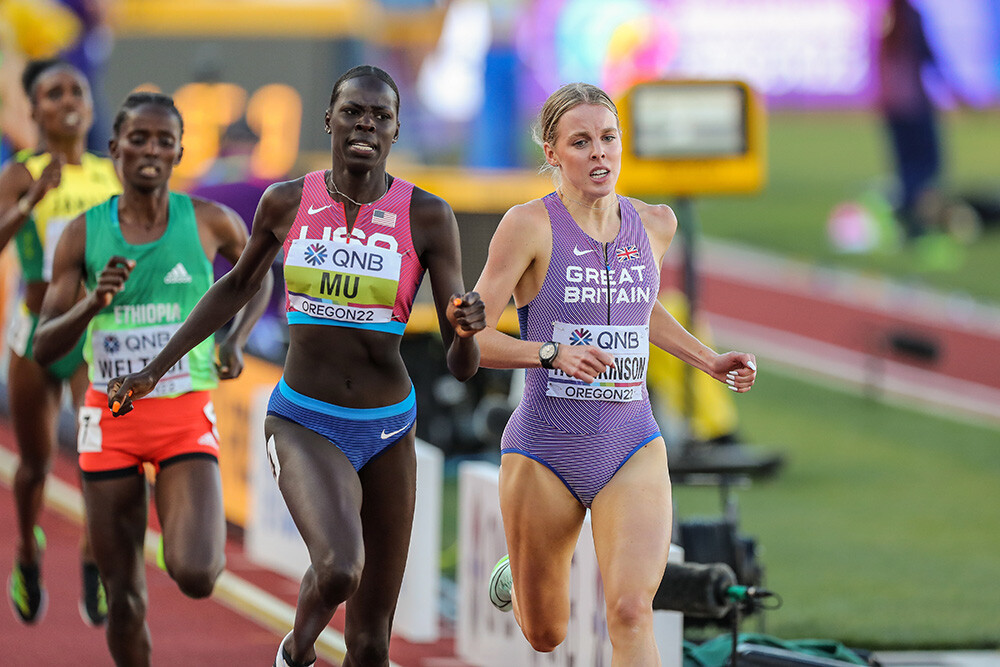
Speaking to Runner’s World, the coach explained that the injury is not worth risking to compete. This marks the third time that Mu’s hamstring has pushed back her 2024 season opener. The former world champion was initially scheduled to open at the Oxy Invitational in early May in Los Angeles, then the Los Angeles Grand Prix on May 18, but she unfortunately withdrew from the events.
“She’s a veteran, if she’s healthy, she can make the team. And so, if I injure her before, I’m gonna be called a fool; if I don’t race her before, I’m gonna get [criticism].
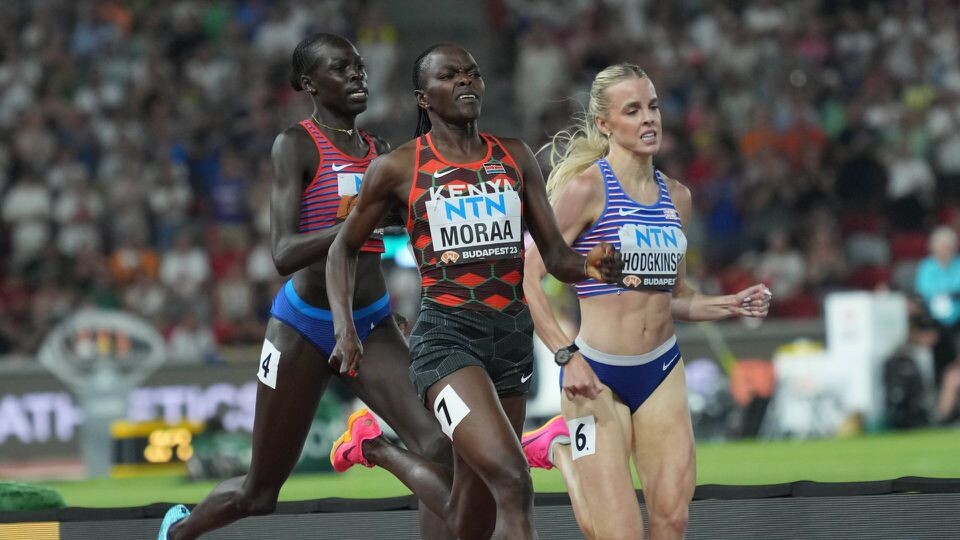
“So I have to do the math that’s going to put her on the team, and so whatever that math is between now and the 21st, that’s what I’m gonna do,” the coach said.
Meanwhile, Kersee confirmed that this season, Mu will be focusing on the 800m, the event in which she won a gold medal at the delayed 2020 Tokyo Olympic Games.
He added that Sydney McLaughlin-Levrone will also focus on the 400m Hurdles, where she is the world record holder and she is also the defending Olympic champion.
Meanwhile, Kendra Harrison, another of Kersee’s athlete will not competing in the 100m hurdles. Kersee explained that the American suffered a tight back after traveling to compete in last week’s Atlanta City Games.
“She’s ready to go and that’s what I’m telling her. Right now, unless I know she’s 100 percent healthy ... athletes are taking a high risk right now for minimum gain.
“If you’re going to take a high risk, there’s only two races left in this year where you got to take a high risk for maximum gain and that’s our Olympic Trials and our Olympic Games.
“Everything else, you can’t take the risk if you’re not sure about what to gain and vice versa. And so I just think that, you know, in this case, well in all cases, that’s what I’m looking at as a coach: What’s the risk-reward situation, based on where we stand right now?
“Like Sydney last year, based on her career I mean, I could probably try to see if we could struggle through the world championship, but do I break down one of our world’s best athletes trying to sneak out one more medal and then subject her to more injury and don’t have anything this Olympic year, versus do I rest her?
"I think I’ve shown a little bit so far that maybe the rest did not hurt her and now she’s starting to compete again,” the coach said.
by Abigael Wuafula
Login to leave a comment
U.S. star Sydney McLaughlin-Levrone will run the 400m hurdles at Paris Olympics
American track star Sydney McLaughlin-Levrone will compete in her fourth meet of the season on Saturday in Los Angeles, matching the total number of races she ran last year. Ahead of the race, McLaughlin-Levrone and her coach, Bobby Kersee, addressed her training focus for the 2024 Paris Olympics, stating that her plans are only to run the 400m hurdles at the U.S. Olympic Track and Field Trials next month, returning to her signature event after racing the flat 400m in an injury-shortened 2023.
Kersee confirmed Friday that McLaughlin-Levrone’s plans for U.S. Trials is to stick to the 400m hurdles, which take place June 21-30 in Eugene, Ore. The top three finishers in each event (if they have the standard) will make Team U.S.A. for Paris. When Kersee was asked what went into the decision, he said: “That’s her main event. That’s what we want to defend our Olympic championship in.”
“I think Sydney’s love is the 400m hurdles, and so that’s the number-one event,” Kersee told NBC Sports. “My job is to make sure that she gets ready for the one that she wants to do the most.”
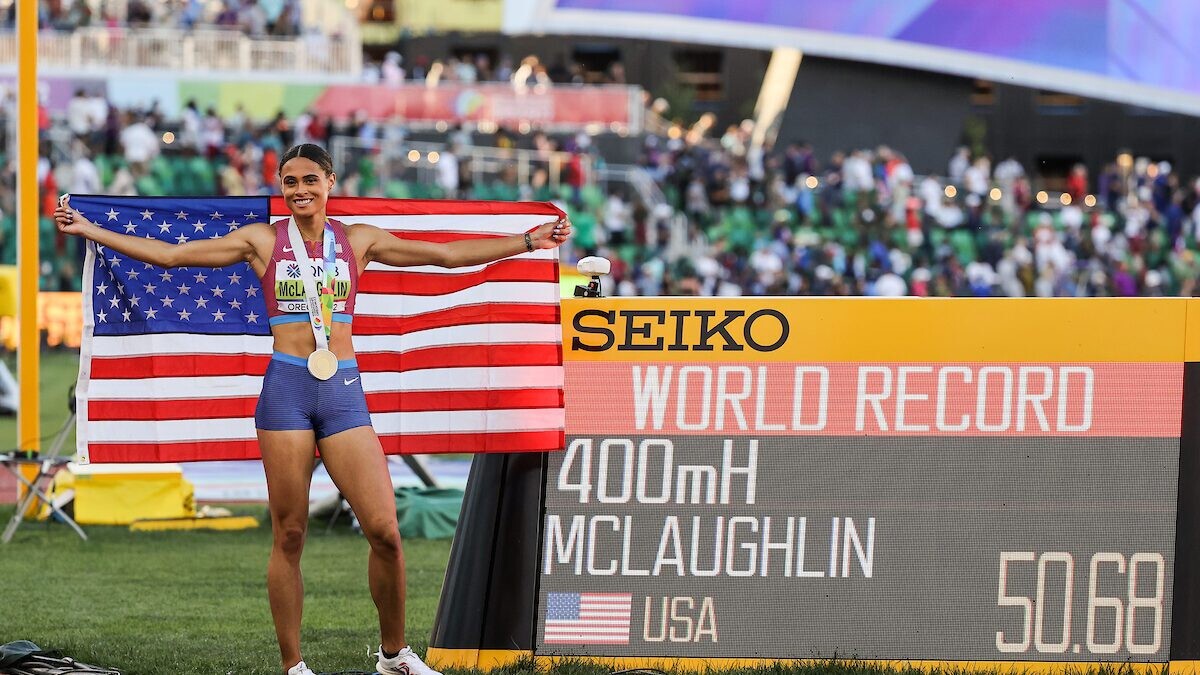
McLaughlin-Levrone won the 400m hurdles at the Tokyo Olympics and lowered the world record on four separate occasions between 2021 and 2022, bringing it down from 52.16 seconds to 50.68. After the 2022 season, McLaughlin-Levrone said she wanted to expand to the flat 400m to see what was possible in that event, while not giving up the 400m hurdles.
The 24-year-old did not contest the 400m hurdles in 2023. McLaughlin-Levrone won the U.S. title in the flat 400m last July in 48.74 seconds, the world’s fastest time last year, and the second-fastest time in American history. She planned to race the flat 400m at the world championships in August, then announced her withdrawal eight days before the event, due to a small tear in her left knee that led to patella issues and tendonitis.
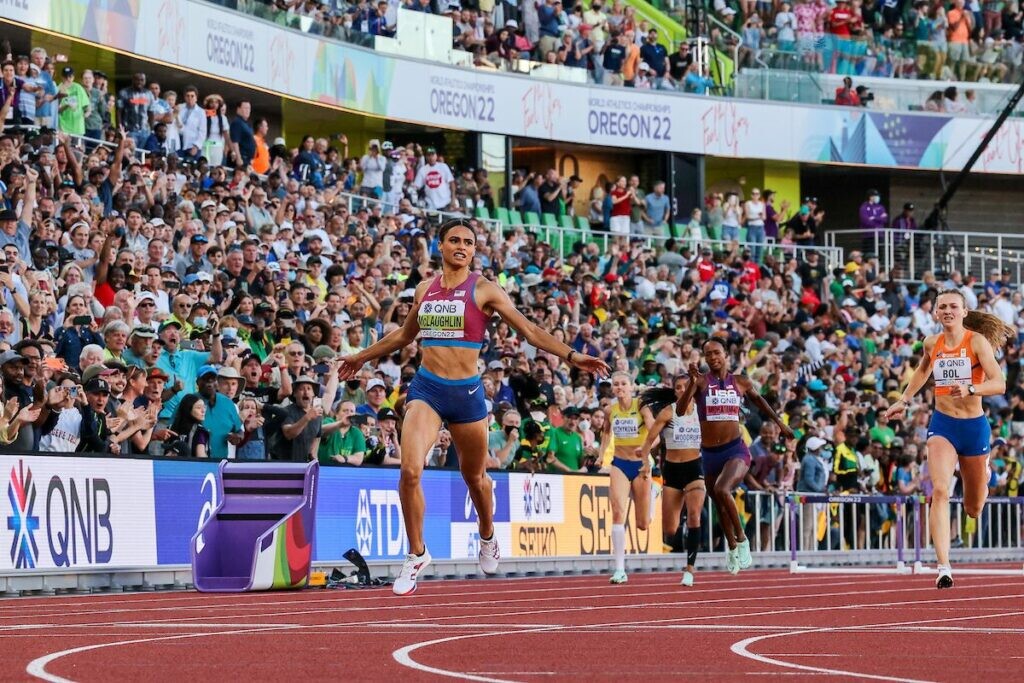
In McLaughlin-Levrone’s absence, Femke Bol of the Netherlands won the 400m hurdles event in Budapest last August in 51.70 seconds. Bol is the second-fastest woman in history in the event, with a personal best of 51.45. The 400m hurdles final could be the first matchup between Bol and McLaughlin-Levrone since the world record was last broken, at the 2022 World Athletics Championships in Eugene.
McLaughlin-Levrone has already raced three times this season in events outside the hurdles, and is on the entry list for the 200m at the USATF Los Angeles Grand Prix on Saturday, where she will face her U.S. teammate, Gabby Thomas.
Kersee also said that McLaughlin-Levrone, if she qualifies for the Olympics and is healthy in Paris, will also be available to run the mixed-gender 4x400m relay (final Aug. 3) and the women’s 4x400m relay (final Aug. 10).
by Marley Dickinson
Login to leave a comment
Paris 2024 Olympic Games
For this historic event, the City of Light is thinking big! Visitors will be able to watch events at top sporting venues in Paris and the Paris region, as well as at emblematic monuments in the capital visited by several millions of tourists each year. The promise of exceptional moments to experience in an exceptional setting! A great way to...
more...Paris Olympics to feature vibrant purple track for athletics events
A new look is coming to athletics at this summer’s Olympic Games in Paris. The track at the Stade de France will be a vibrant purple instead of the traditional terracotta color, which organizers hope will stand out to a global audience and produce record performances for the world’s best athletes.
Italian rubber manufacturer Mondo has begun the production of the 17,000-square-meter purple track, which will be packed and transported to the French capital in the coming weeks for the start of the Olympic Games in July. The Paris Olympic organizing committee chose the color to honor the Games being the first to achieve full gender parity on the field of play.
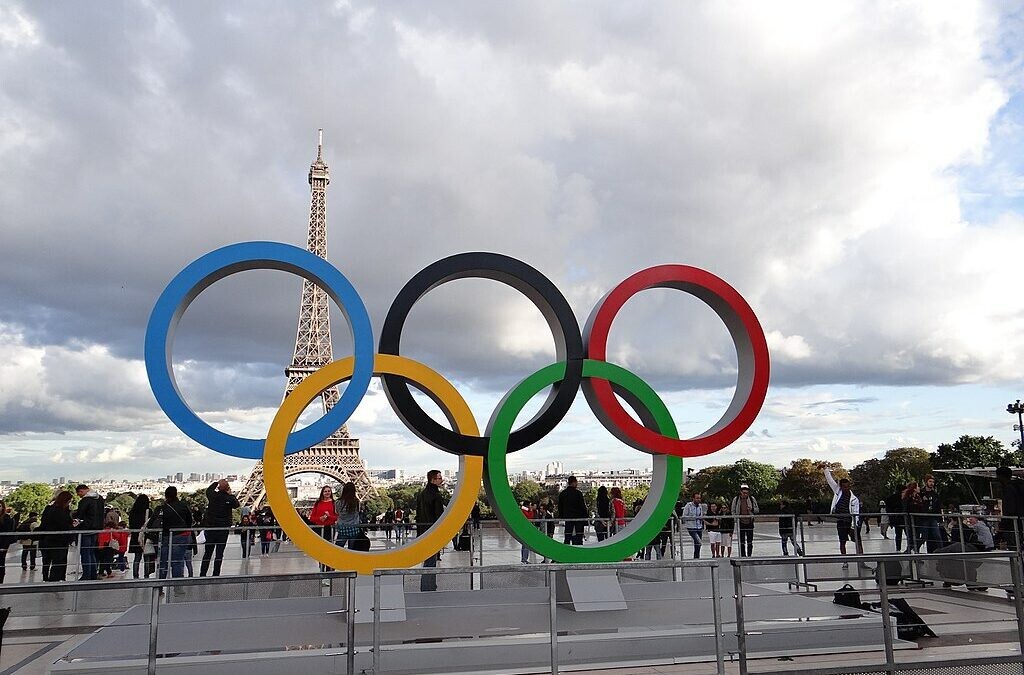
The track will be made of three colors: two shades of purple (one a lighter lavender, and the other a darker shade), and grey, which will be used on the outer side of the track. Mondo has supplied track and field surfaces for the last 10 Olympic Games, dating back to the 1984 Games in Los Angeles.
Following in the footsteps of the Olympic medals for 2024, the track will be made from nearly 50 per cent renewable or recycled materials, which is 30 per cent higher than for the London Olympics in 2012.

Mondo claims the purple track will be faster than the one used at the Tokyo 2020 Olympics, where three world records were broken, including the men’s and women’s 400m hurdles set by Norway’s Karsten Warholm and American Sydney McLaughlin-Levrone.
“We have changed the design of the cells in the lower layer of the track compared to what was used in Tokyo,” said Maurizio Stroppiana, vice president of Mondo’s sports division to Olympics.com. “This reduces the loss of energy for the athletes and returns it at the best possible point in their movement.”
The cost of the purple track is estimated to be around three million euros (CAD $4.5 million). Forty-six of the 48 athletics events will be held on this track (the marathon and the race walk are held on a road course). The race walks will be contested at Pont d’Iena, and the marathon events will begin at the Hôtel de Ville (city hall) and end at Les Invalides, with runners traversing many of the city’s most iconic sites and Olympic venues throughout the historic French revolution route.
by Marley Dickinson
Login to leave a comment
Paris 2024 Olympic Games
For this historic event, the City of Light is thinking big! Visitors will be able to watch events at top sporting venues in Paris and the Paris region, as well as at emblematic monuments in the capital visited by several millions of tourists each year. The promise of exceptional moments to experience in an exceptional setting! A great way to...
more...Ten reasons to be excited for 2024
There are many things to look forward to in the sport of athletics in the upcoming year.
There’ll be six global championships in 2024, with ever-expanding one-day meeting circuits spread throughout the year. Rivalries will be renewed, and record-breakers will continue to push boundaries in their respective disciplines.
Here are just 10 of the many reasons to be excited by what’s to come over the next 12 months.
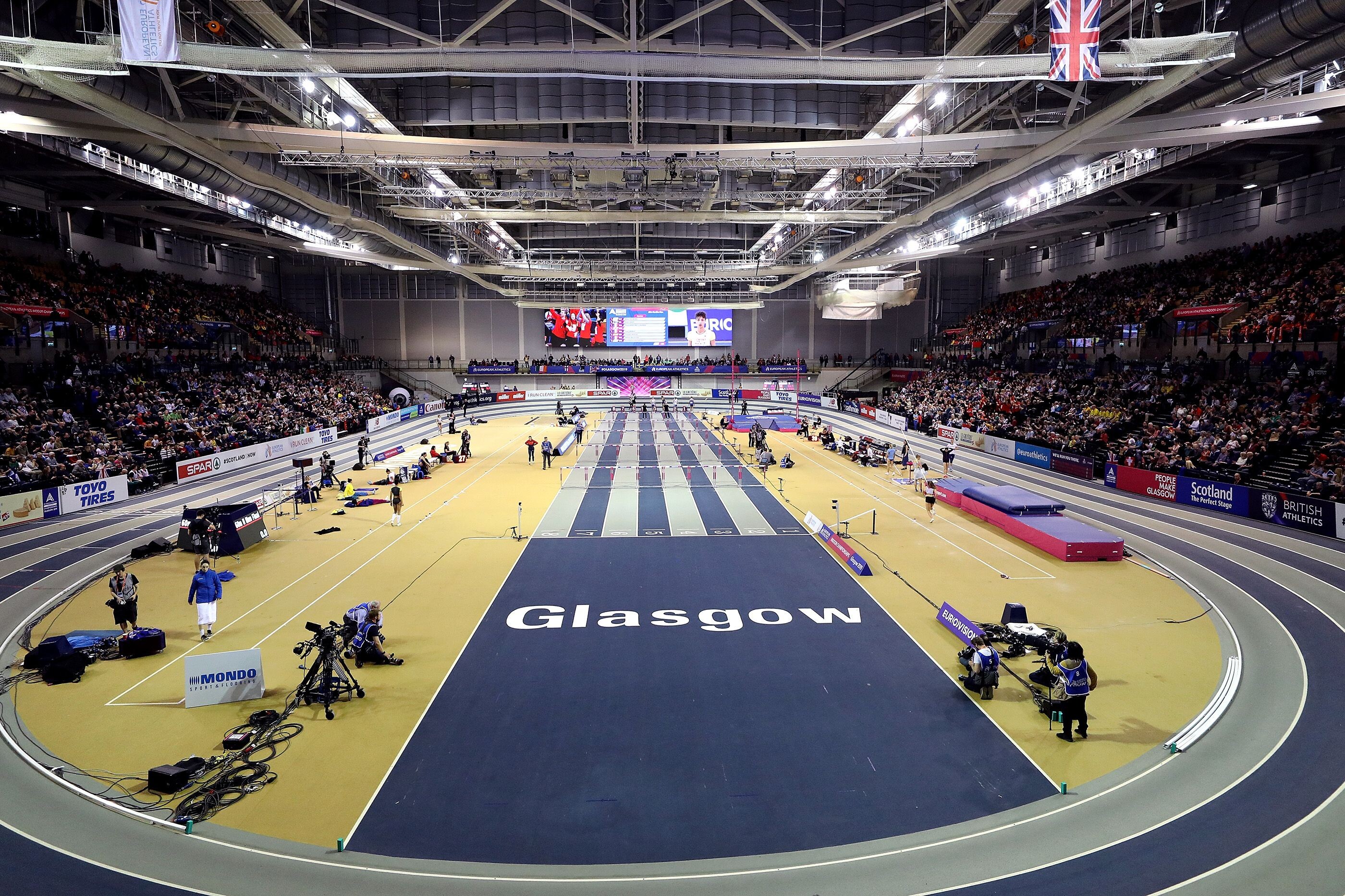
1. Paris 2024 Olympic Games
Athletics is the No.1 sport in what will be the biggest event on the planet this year. 100 years after Paris last hosted the Games, the Olympics will return to the French capital where 2000 athletes from about 200 countries will compete for medals in 48 disciplines from August 1-11 . Expect duels, drama and record-breaking performances as athletes compete for the highest honor in the sporting world.
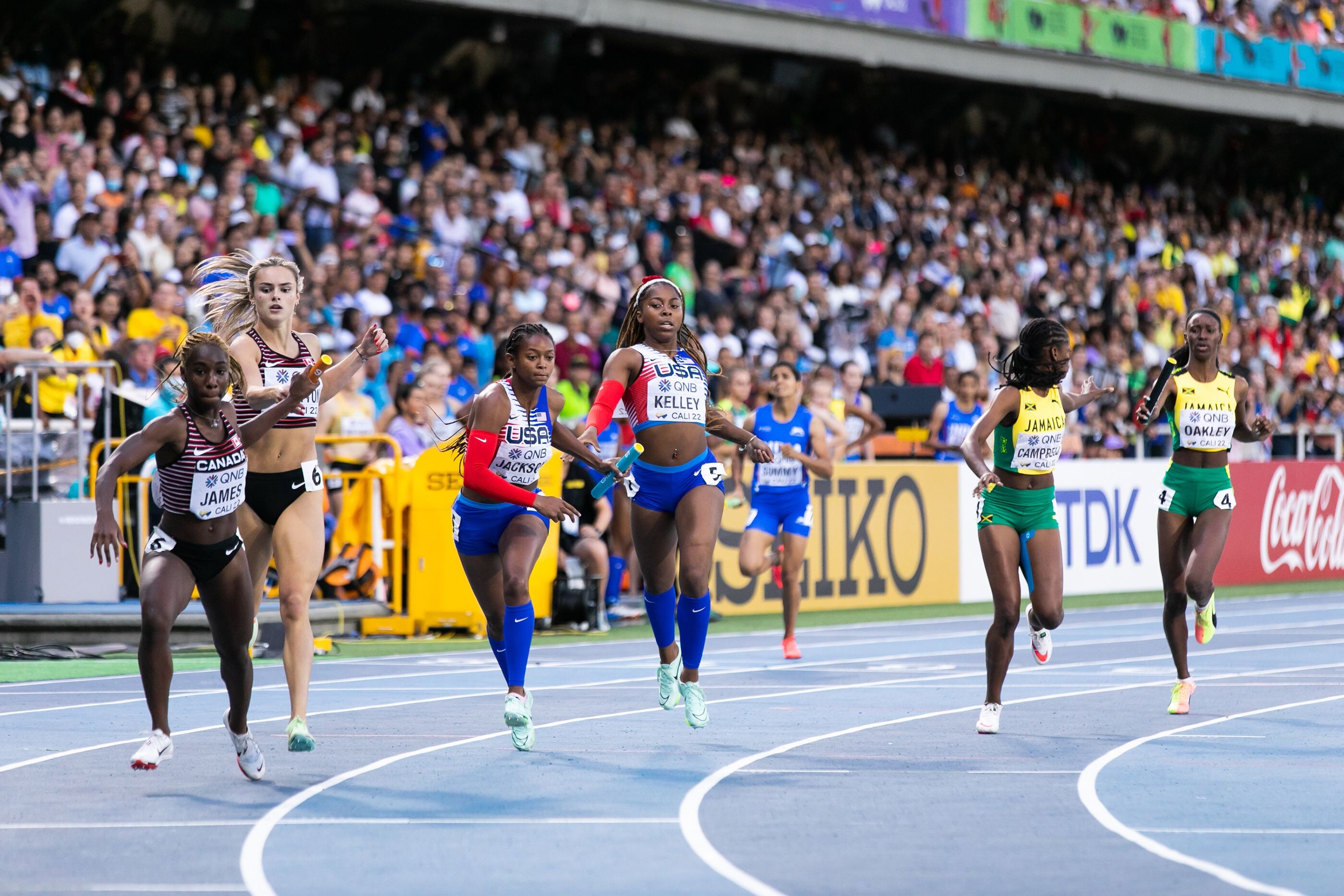
2. World Athletics Indoor Championships Glasgow 24
The first global track and field championships of the year will start in just two months’ time as Glasgow hosts the World Indoor Championships on March 1-3. In Belgrade two years ago, pole vaulter Mondo Duplantis and triple jumper Yulimar Rojas set world records to claim gold; they’ll be looking to add to their medal – and record – tally in Glasgow, as will a host of other top track and field stars.
3. World Athletics Relays Bahamas 24
For the first time since 2017, the World Relays will be held in the Bahamian capital as the global event returns to the venue of the first three editions. From May 4-5, athletes will be vying to secure their place in the 4x100m, 4x400m and mixed 4x400m for the Paris 2024 Olympic Games. Expectations of a nation rests on their shoulders – and their baton exchanges.
4. World Athletics Cross Country Championships Belgrade 24
Just two years after the Serbian capital hosted the World Indoor Championships, Serbia will this year play host to the world’s best cross-country runners. Recent editions of the event, in both Aarhus and Bathurst, have put athletes to the test on grueling courses, so expect more of the same on 30 March.
5. World Athletics U20 Championships Lima 24
After the latest successful edition of the World U20 Championships in Cali two years ago, the global event will return to South America as Lima becomes the first city in Peru to host a World Athletics Series event. The championships will take place from August 27-31, and will showcase the world’s most promising up-and-coming stars.
6. World Athletics Race Walking Team Championships Antalya 24
Is there room on the calendar for one more global event? Go on, then. For the first time ever in the history of these championships – including all previous iterations – Turkiye will play host to the World Race Walking Team Championships on April 21 . The first 22 teams here will automatically qualify for the marathon race walk mixed relay – the newest Olympic discipline – at the Paris Games.
7. One-day meeting circuits
While championship action is great, the likes of the Wanda Diamond League and World Athletics Continental Tour is where athletes can be seen in action week in, week out throughout the peak of the outdoor track and field season. Before that, there’s also the World Indoor Tour, while other series such as the Cross Country Tour, Combined Events Tour, Race Walking Tour and Label road races will provide competition opportunities throughout the year.
8. Record breakers
Athletes continued to push boundaries throughout the past 12 months on the track, field and roads. Expect more of the same in 2024 as the likes of Faith Kipyegon, Mondo Duplantis, Kelvin Kiptum, Yulimar Rojas and Ryan Crouser look to run, jump and throw better than they ever have done before.
9. Big clashes
Rivalries between the sport’s biggest stars always provide a gripping narrative for any season. For 2024, expect some mouth-watering clashes to come from the likes of Sydney McLaughlin-Levrone and Femke Bol in the 400m hurdles, Kelvin Kiptum and Eliud Kipchoge in the marathon, Gudaf Tsegay and Sifan Hassan in the 10,000m or Daniel Stahl and Kristjan Ceh in the discus to name but a few.
10. New stars
Every year a new generation of talent emerges. Some of those will be athletes who started to make a bit of a breakthrough towards the end of last year, while others may be athletes who fans have barely heard of. Either way, keep your eyes peeled as the season unfolds to witness the future stars of the sport mixing it with the world’s best athletes.
by World Athletics
Login to leave a comment
Paris 2024 Olympic Games
For this historic event, the City of Light is thinking big! Visitors will be able to watch events at top sporting venues in Paris and the Paris region, as well as at emblematic monuments in the capital visited by several millions of tourists each year. The promise of exceptional moments to experience in an exceptional setting! A great way to...
more...Faith Kipyegon named World Track Athlete of the Year
On Monday night at the 2023 World Athletics Awards in Monaco, Kenya’s Faith Kipyegon took home top honours, capping off her nearly flawless season. The double world champion was named World Female Track Athlete of the Year, a title awarded to her by the public, her peers and the World Athletics Council.
Kipyegon made headlines by breaking three world records in the 1,500m, mile, and 5,000m events, in addition to clinching two world championship titles at the 2023 World Athletics Championships in Budapest. She successfully defended her world title in the 1,500m and won her first world championship over 5,000m, facing one of the deepest fields in the event’s history.
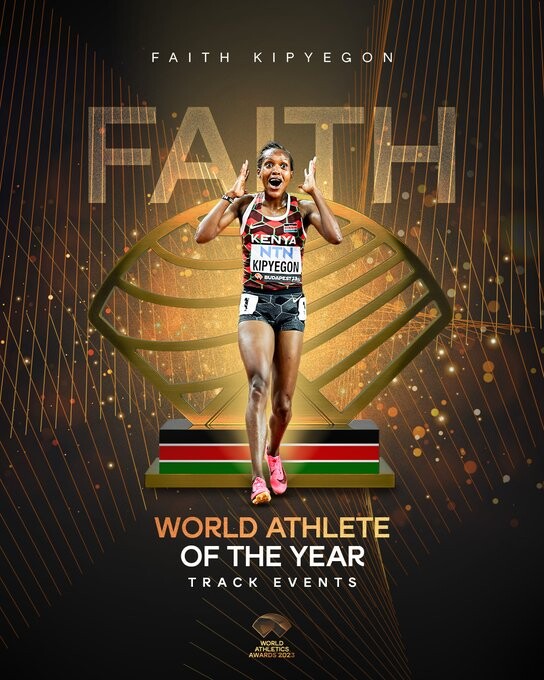
This historic achievement marks the first time a Kenyan woman has received the prestigious award since its inception in 1988. The previous winner was U.S. 400m hurdler Sydney McLaughlin-Levrone in 2022.
Throughout 2023, the 29-year-old mother pushed the boundaries of distance running, accomplishing feats that fans of the sport considered nearly impossible. Kipyegon became the first woman to complete the 1,500m in under three minutes and 50 seconds (3:49:11) and achieved another milestone by also becoming the first woman to run a sub-4:10 mile, clocking in at 4:07.64 at Monaco Diamond League in July.
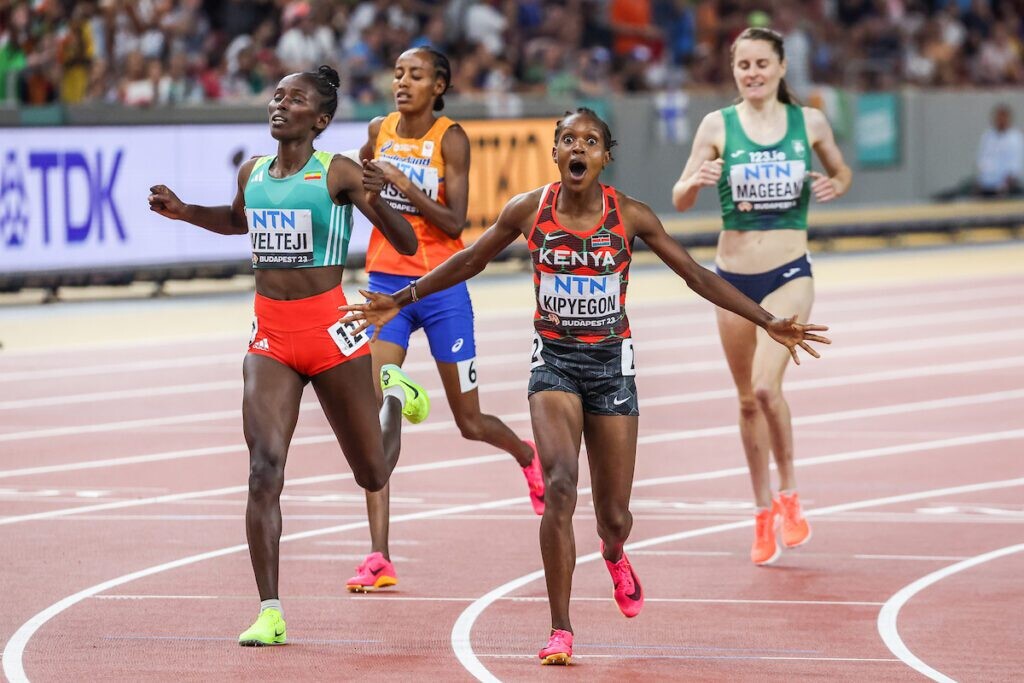
For the first time ever, World Athletics split the Athlete of the Year award into three disciplines: track, field and non-stadia.
Yulimar Rojas of Venezuela won the Women’s Field Athlete of the Year, winning her fourth consecutive world championship title in the women’s triple jump and her third-straight Diamond League title. New women’s marathon world record holder Tigist Assefa of Ethiopia won the non-stadia award. Assefa shattered the women’s world marathon record at the 2023 Berlin Marathon, running an unbelievable 2:11:53, breaking the previous record by nearly two and a half minutes.
World Athletics said in a press release that their decision to divide the award into three categories came from fans and council members when they commented that it was “incredibly hard” to limit the vote to just one athlete.
by Marley Dickinson
Login to leave a comment
Record breakers and winners in Budapest to get huge perks
Over 2,000 athletes from around 200 countries-including Kenya are set to benefit from the world record programme during this month's World Athletics Championships in Budapest.
During the nine-day global extravaganza, World Athletics will once again run its world record programme that rewards record breakers.

Athletes who will set a world record will be eligible for a special award of US$100,000 offered by TDK and World Athletics’ new Inside Track platform.
The performance must be an improvement on the existing World Athletics world record. Performances that equal the existing world record will not be eligible for a world record award.

During last year's World Athletics Championships in Oregon, Eugene, USA’s Sydney McLaughlin-Levrone and Sweden’s Mondo Duplantis were rewarded for their performances.
McLaughlin-Levrone clocked 50.68 setting a new 400m hurdles world record bettering her previous time of 51.41.
Duplantis took the pole vault to another level again by clearing the 6.21m mark also bettering his previous jump of 6.20 set during the World Athletics Indoor Championships in Serbia in March.
The Japanese electronics company TDK will offer the awards for men's events while the women’s world record programme will be supported by Inside Track.
For the mixed 4x400m relay, the programme will be supported by both TDK and Inside Track. Aside from the world record programme, a total of US$8,498,000 in prize money will be on offer in Budapest.
Individual winners will get US$70,000, US$35,000 for second-placed and US$22,000 for bronze. Positions four to eight will receive between US$16,000 and US$5000.
Relays winners will get US$80,000 with second and third placed receiving US$40,000 and US$20,000 respectively. Positions four to eight will get between US$16,000 and US$4000.
by Samuel Nganga
Login to leave a comment
World Athletics Championships Budapest 23
From August 19-27, 2023, Budapest will host the world's third largest sporting event, the World Athletics Championships. It is the largest sporting event in the history of Hungary, attended by athletes from more than 200 countries, whose news will reach more than one billion people. Athletics is the foundation of all sports. It represents strength, speed, dexterity and endurance, the...
more...Sydney McLaughlin-Levrone will not run 400m hurdles at World Championships
There will be a new 400m hurdles world champion crowned at the 2023 World Championships in Budapest. The reigning world and Olympic champion, Sydney McLaughlin-Levrone, revealed she will only run the 400m flat at next month’s championships, despite an automatic 400m hurdles qualifying spot from winning the world title last year.
McLaughlin-Levrone’s coach, Bobby Kersee, confirmed her plan to the LA Times on Wednesday. Kersee said in May that McLaughlin-Levrone’s race plans for worlds in Budapest would be decided after the USA Track and Field Outdoor Championships; McLaughlin-Levrone won the women’s 400m at the U.S. trials in a personal best and world-leading time of 48.74 seconds, her first time breaking the 49-second mark for one lap of the track.
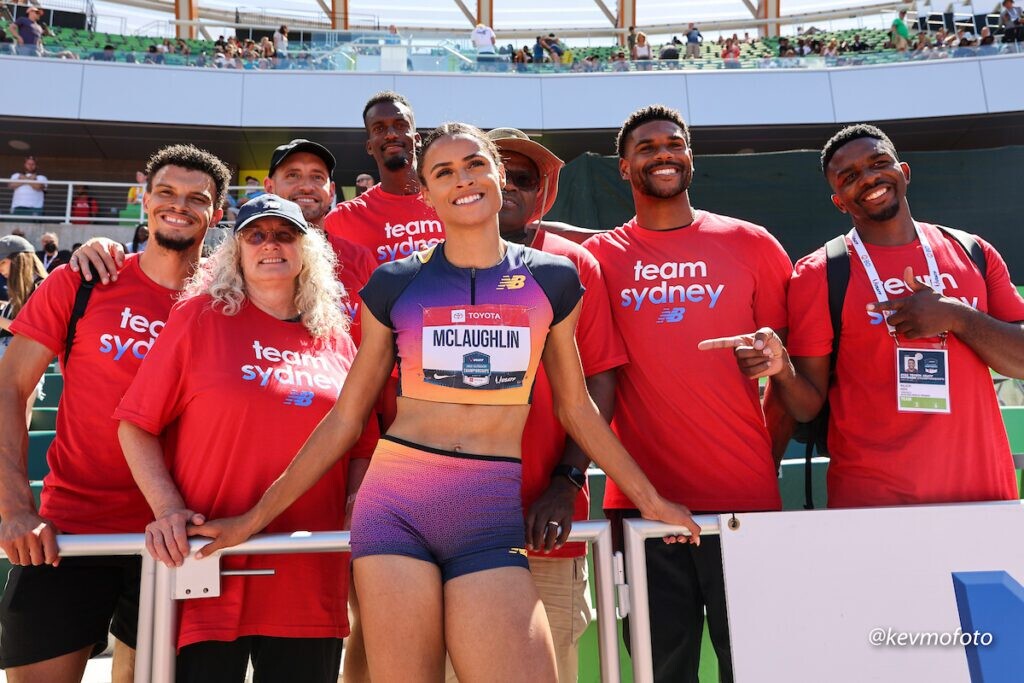
Kersee told the LA Times that the world championships schedule was not conducive to running both the 400m and 400m hurdles. The heats of the 400m hurdles start two hours and 20 minutes before the 400m semi-finals on Monday, Aug. 21. Otherwise, the two events do not overlap.
McLaughlin-Levrone’s rival, Femke Bol, of the Netherlands, who is also the 400m indoor world record holder, is planning to double in the 400m and 400m hurdles. Bol finished as runner-up to McLaughlin-Levrone’s world record of 50.68 in the 400m hurdles in Eugene last year, and has never won gold at Worlds or the Olympics in the discipline.
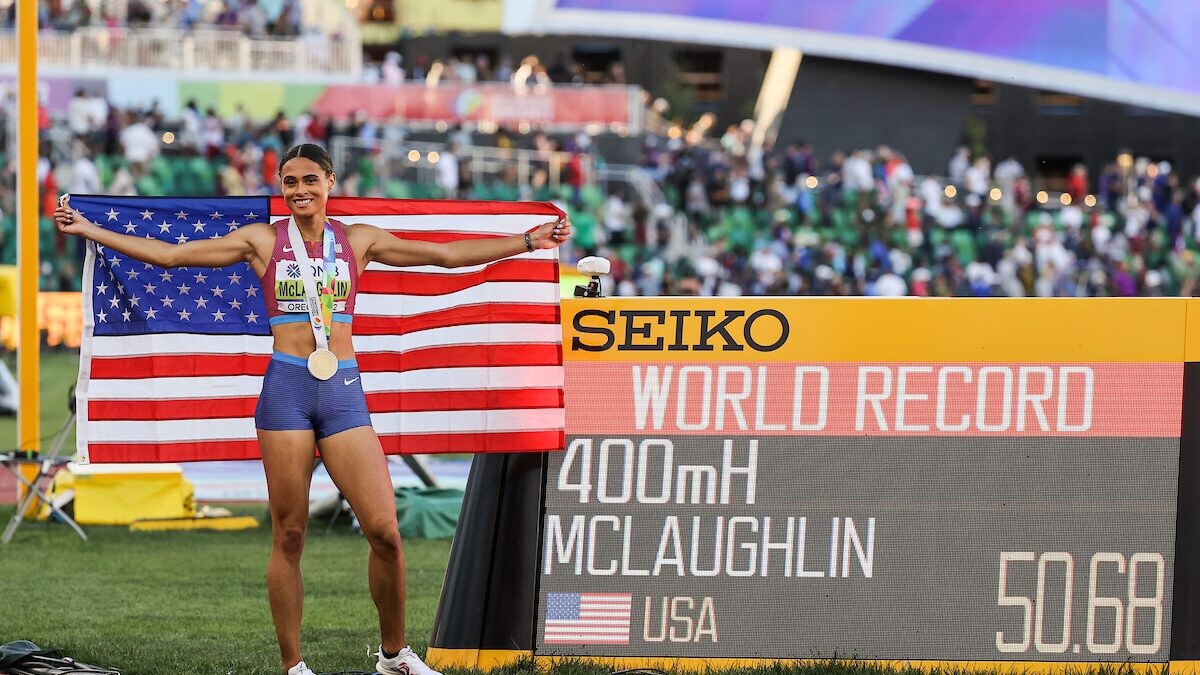
No man or woman has medalled in both the flat 400m and the 400m hurdles at the same world championships.
McLaughlin-Levrone said last fall that she wanted to add the flat 400m to her program to see what she could do. All five of her races this season have been in the 400m; most recently, she ran the second-fastest time ever by an American to win the national title. She has not raced the 400m hurdles since Aug. 8 of last year.
The 23-year-old had a wild card spot into the 400m hurdles at worlds as defending champion, so with McLaughlin-Levrone dropping it from her schedule, this will allow another American onto the team.
Kersee also said that no decision has been made on which event(s) McLaughlin-Levrone will pursue for the 2024 Paris Olympics.
by Marley Dickinson
Login to leave a comment
World Athletics Championships Budapest 23
From August 19-27, 2023, Budapest will host the world's third largest sporting event, the World Athletics Championships. It is the largest sporting event in the history of Hungary, attended by athletes from more than 200 countries, whose news will reach more than one billion people. Athletics is the foundation of all sports. It represents strength, speed, dexterity and endurance, the...
more...U.S. sprinting phenom Britton Wilson turns pro with Adidas
One of the top rising stars in the NCAA has turned pro and signed a professional contract with Adidas. On Monday, the record-breaking 400m sprinter Britton Wilson announced her decision to turn pro on Instagram after her second-place finish to Sydney McLaughlin-Levrone at the 2023 USATF Track and Field Championships, earning a qualification spot for the 2023 World Athletics Championships next month.
“Turning pro has been one of my lifelong dreams,” Wilson wrote on Instagram. “Through all of the hard work and sacrifice, I truly manifested this surreal and special moment every day on the track, in the weight room, and while training. Here I am, beginning my professional track and field career with Team Adidas.”
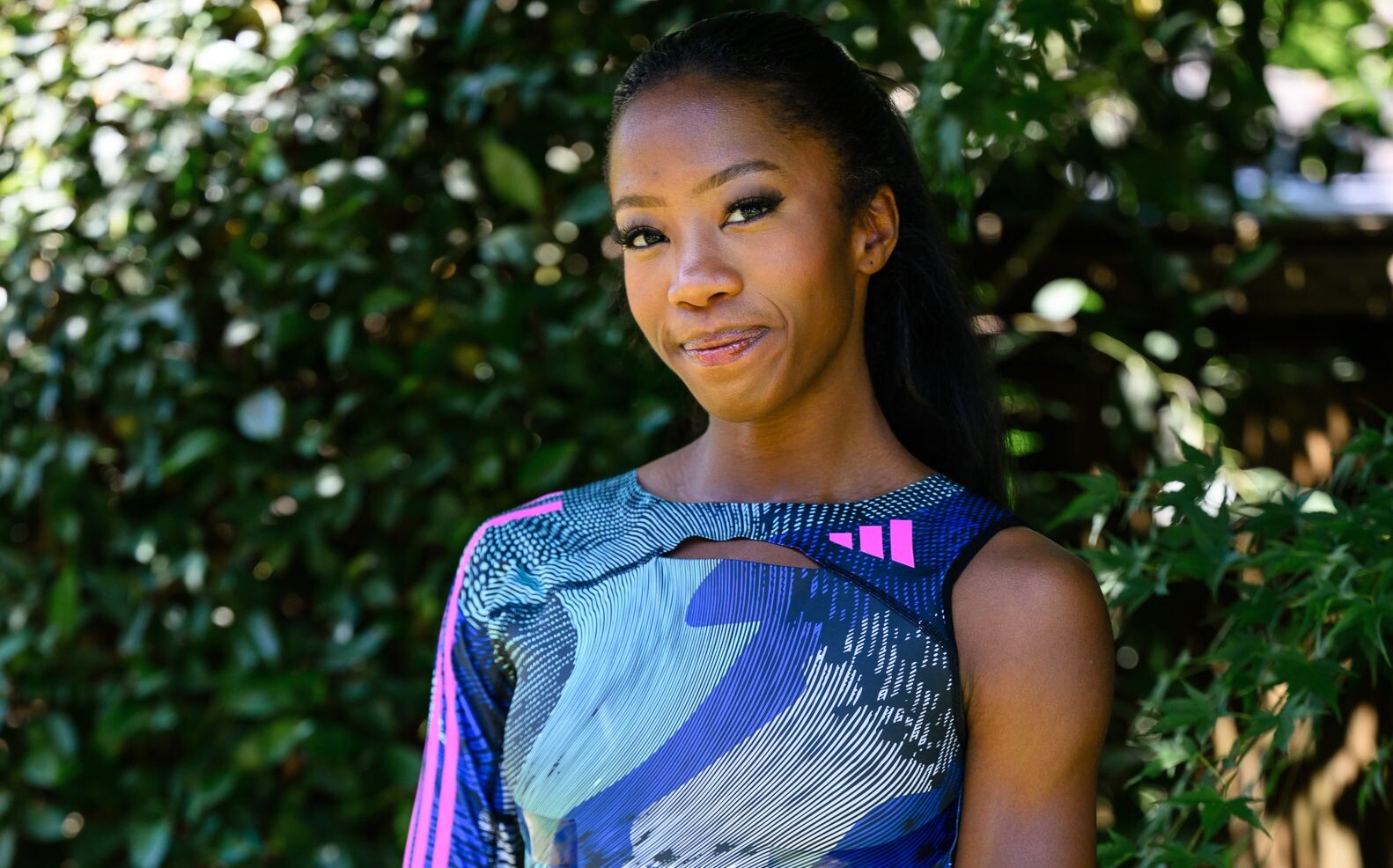
Wilson’s clocked an impressive time of 49.79 seconds at USATF Track and Field Championships, marking the seventh time she’s gone under the 50-second mark this season. She is the second American this year, only behind McLaughlin-Levrone’s 48.74 world lead from USA’s.
Like McLaughlin-Levrone, Wilson is a versatile athlete who can excel at both the 400m and 400m hurdles. She has achieved personal bests of 49.13 seconds in the 400m and 53.08 seconds in the 400m hurdles. In May, Wilson surprised track and field fans when she pulled off an NCAA record-setting double at the SEC Outdoor Track & Field Championships.
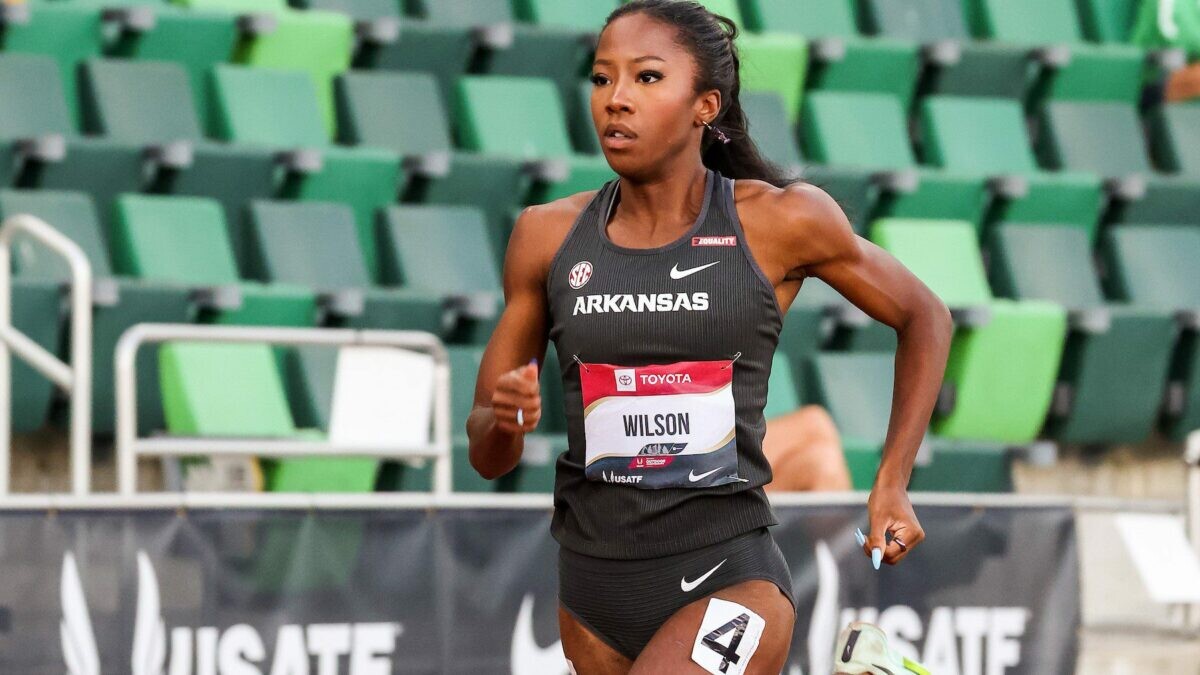
Wilson’s success story extends over the past 18 months, during which she achieved remarkable milestones. In 2022, she played a pivotal role in securing the NCAA 4x400m indoor title alongside her Arkansas teammates. Subsequently, she clinched an individual victory in the 400m hurdles at the NCAA outdoor championships. Her exceptional performances led her to qualify for the 2022 World Athletics Championships in Eugene, where she contributed to the American team’s gold medal triumph in the 4x400m relay event.
As Wilson sets her sights on the upcoming World Athletics Championships in Budapest, she will further strengthen the already challenging competition in the 400m and 400m hurdles events at the global level.
by Marley Dickinson
Login to leave a comment
2023 US Outdoor Track and Field Championships preview from Chris Chavez
Last night was the deadline for athletes to declare their event for the 2023 U.S. Outdoor Track and Field Championships, which will take place in Eugene from July 6-9. At USAs, athletes are allowed to enter multiple events and then make a decision about which event(s) they wish to contest once entries are in, which allows those who’ve achieved multiple qualifiers to be strategic about where they want to concentrate their efforts. The top three in each event who meet the qualifying standards for the World Athletics Championships will go on to represent the United States in Budapest in August.
Reigning World champions have a “bye” to the next year’s Worlds, which means the country they represent gets to send four athletes, not three. Similarly, reigning Diamond League and World Athletics Continental Tour champs earn a bye, but if there is both a World and other champion in the same event, their country still only gets to send one extra athlete.
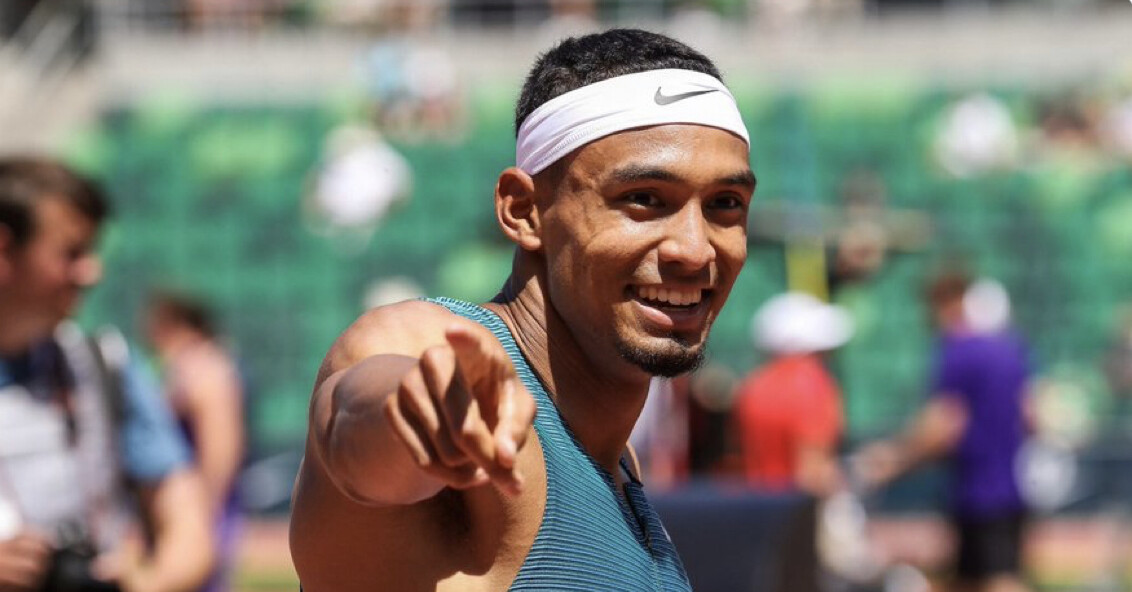
These complex rules lead many American World champions to make interesting choices about what events they wish to contest at USAs and how hard they want to push while still in the middle of the championship season.
MEN’S SPRINTS
– 100m world champion Fred Kerley has the bye to the world championships and will only run the 200m. Last year, he qualified for the World Championships in the 200m with a third place finish behind Noah Lyles and Erriyon Knighton. He injured his quad in the semifinal of the 200m and was unable to run the 4x100m relay for Team USA. Kerley has a season’s best of 19.92 from his win at the Doha Diamond League.
– 200m world champion Noah Lyles has the bye to the world championships and will only run the 100m. He ran a season's best of 9.95 in his outdoor opener in April. The last time he ran the 100m at a U.S. Championship, he finished seventh at the 2021 U.S. Olympic Trials final.
– 400m world champion Michael Norman is declared for the 100m and 200m at the U.S. Championships. He ran a wind-aided 10.02 (+3.0m/s wind) at the Mt. SAC Relays in April. He has not raced since a last place finish in the 200m at the Doha Diamond League in 20.65 on May 5.
WOMEN’S SPRINTS
– Sha’Carri Richardson is running the 100m and 200m. She is looking to qualify for her first World championship team. Her season’s best of 10.76 from her victory at the Doha Diamond League is the second-fastest performance in the world this year. Her season’s best of 22.07 from the Kip Keino Classic at altitude in Nairobi is No. 4 on the world list.
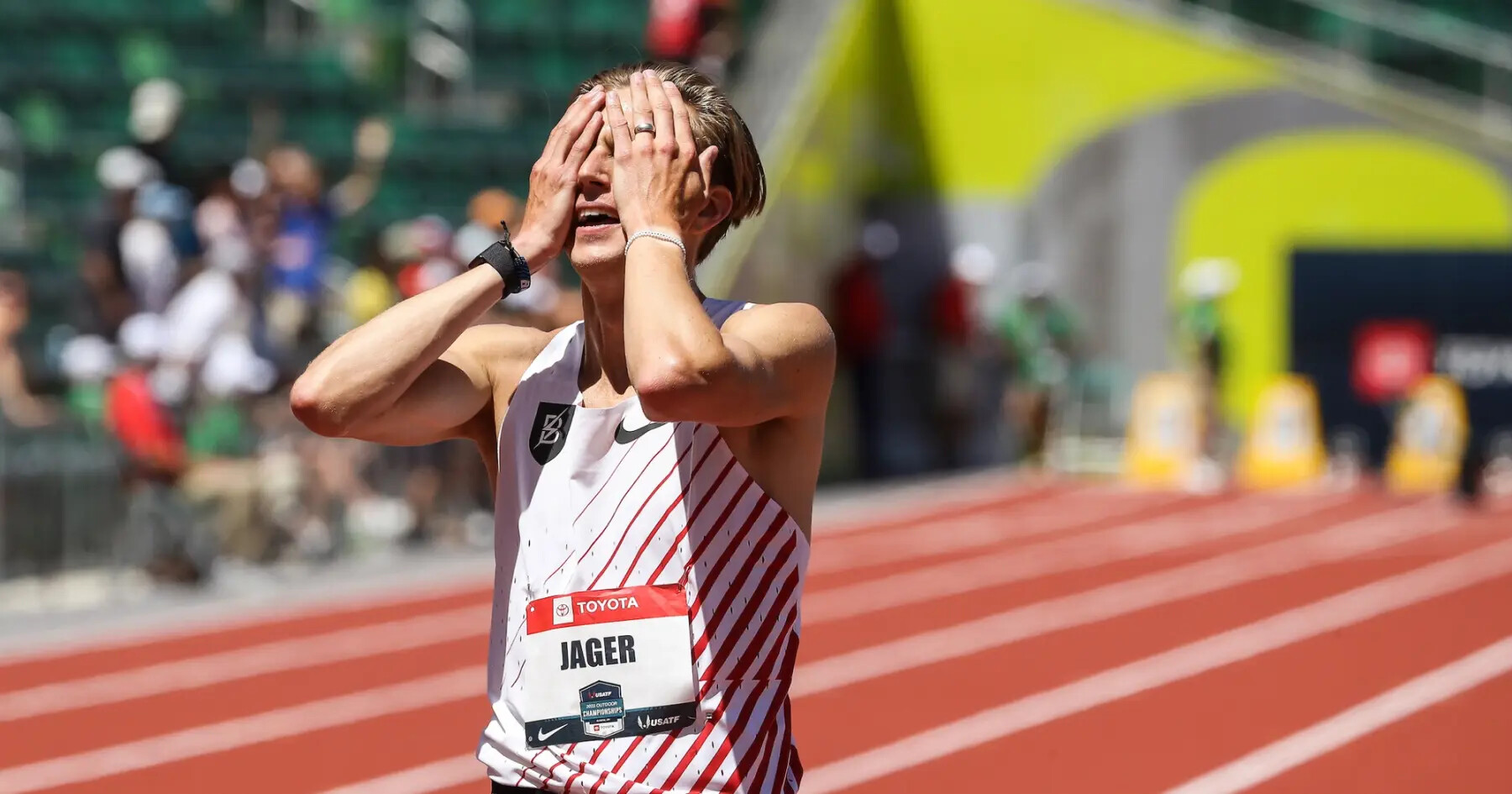
Only Gabby Thomas’ 22.05 from the Paris Diamond League is faster this year by an American woman. Richardson, the 2019 NCAA champion, attempted the double at USAs in both 2019 and 2022, where her highest finish was 8th in the 100m in 2019. She has yet to make a U.S. final in the 200m.
– Reigning U.S. champion Abby Steiner is only running the 200m despite qualifying in both the 100m and the 400m as well. She just ran her season’s best of 22.19 to win the NYC Grand Prix.
– As previously announced, 400m hurdles Olympic champion, World champion and world record holder Sydney McLaughlin-Levrone is running the flat 400m. She plans to make a decision after the U.S. Championships whether she will run the flat 400m (if she qualifies) or defend her 400m hurdles title in Budapest.
– NCAA record holder Britton Wilson, who ran 49.14 to become No. 4 on the U.S. all-time list, will only run the 400m and not the 400m hurdles. She hurdled at last year’s World championships and participated in the 4x400m relay.
MEN’S DISTANCE
– This year’s men’s steeplechase team should have a new look. 2016 Olympic silver medalist Evan Jager is not entered in the steeplechase. He has raced just once this outdoor season. Hillary Bor, the reigning U.S. champion who also owns the fastest steeplechase time by an American this year in 8:11.28, broke his foot earlier this spring and will miss the U.S. Championships. This is the first U.S. team he has missed since 2015. The top returner is Benard Keter, who made the Olympic team in 2021 and the World team in 2022, but he is only the fifth-fastest entrant by seed time.
– For the first time, 2021 U.S. 5000m champPaul Chelimo is entered in both the 5000m and the 10,000m. Chelimo, the 3x global medalist at 5000m, has typically only focused on the shorter event, but after his 27:12.73 performance at the Night of the 10,000m PBs in the U.K. earlier this season, he has decided to contest both events. He’s seeded No. 4 by qualifying time in both events behind Grant Fisher, Woody Kincaid, and Joe Klecker (all also double-entered).
WOMEN’S DISTANCE
– 800m Olympic and world champion Athing Mu entered the 1500m, as previously announced with coach Bobby Kersee. She has the bye to the world championships in the 800m. Her personal best of 4:16.06 is well outside the automatic standard of 4:05.00 and was achieved outside the qualifying window for the championships, but USATF rules allow for significant discretion in accepting entries from the Sports Committee chair.
– Josette Norris and On Athletics Club coach Dathan Ritzenhein have decided to focus solely on the 5000m. Norris ran 14:43.36 at Sound Running’s Track Fest in early May. That’s the second-fastest time by an American woman on the year behind her teammate and training partner Alicia Monson’s 14:34.88 at the Paris Diamond League. Monson is entered in both the 5000m and 10,000m after choosing to only contest the 10,000m last year.
– NC State’s NCAA record holder Katelyn Tuohy will only run the 5000m. Tuohy qualified for NCAAs in both the 1500m and the 5000m but ended up only running the 1500m after an uncharacteristically disappointing performance in the final.
– The Bowerman Track Club’s Elise Cranny has declared for the 1500m, 5000m and the 10,000m. The first round of the women’s 1500m is 19 minutes before the final of the 10,000m on Day 1 of the competition, so Cranny will likely scratch one or more events at a later point.
by Chris Chavez (Citius magazine)
Login to leave a comment
USATF Outdoor Championships
With an eye toward continuing the historic athletic success of 2022, USATF is pleased to announce competitive opportunities for its athletes to secure qualifying marks and prize money, including a new Grand Prix series, as they prepare for the 2023 World Athletics Championships in Budapest, Hungary.As announced a few months ago, the 2023 Indoor Championships in Nanjing, China have been...
more...The Olympic and world 800m champion Athing Mu will make her season debut at the USATF NYC Grand Prix Meet on June 24
Athing Mu, the Olympic and world 800m champion, will make her season debut at the USATF NYC Grand Prix. This meet is part of the World Athletics Continental Tour Gold series, the USATF NYC Grand Prix takes place at Icahn Stadium on Randall’s Island June 24.
It will be Mu's first competition in exactly 11 months, as she returns to action for the first time since the World Athletics Championships Oregon22, where she added world 800m gold to the Olympic title she claimed in Tokyo.
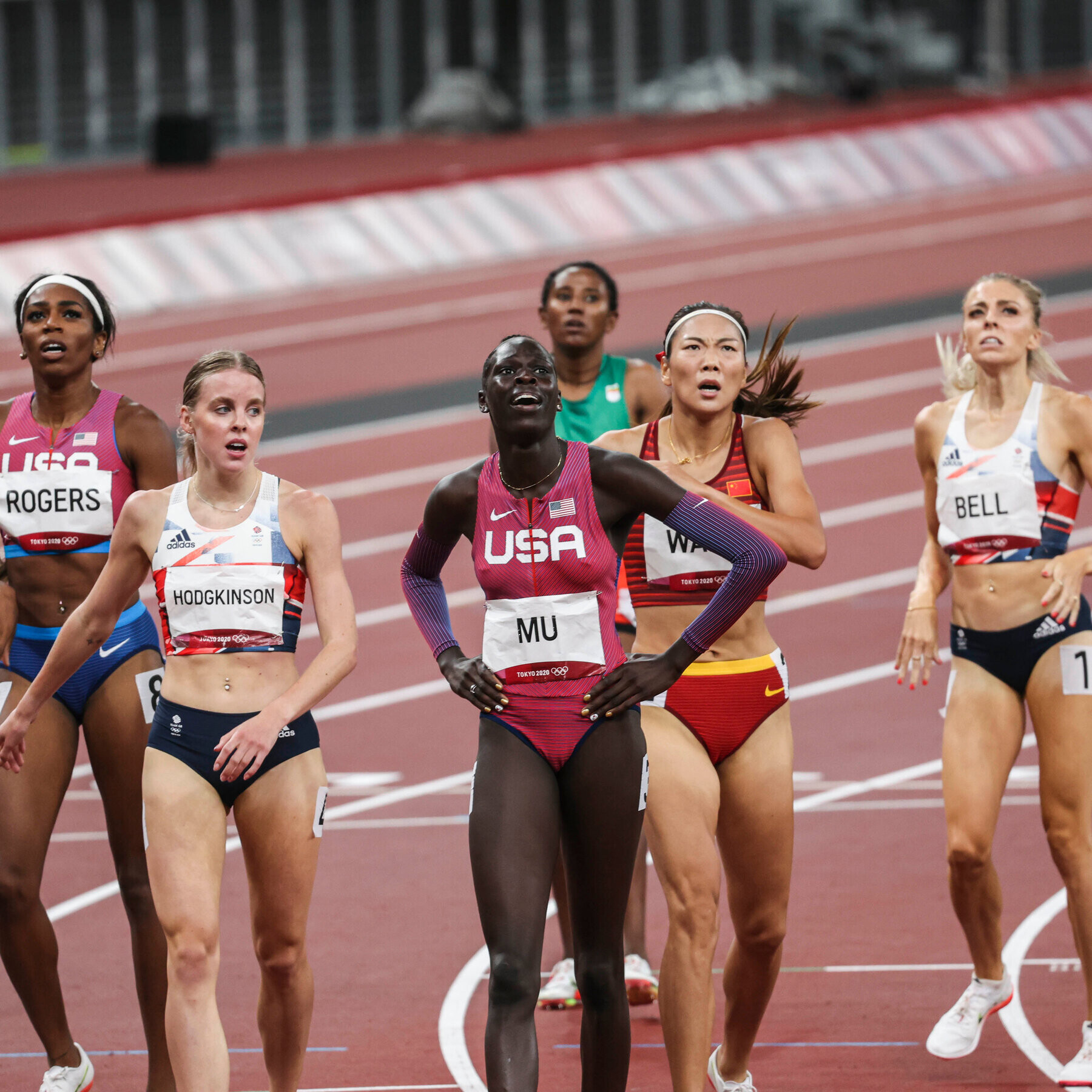
Mu made herself known as one of the world’s top track athletes in 2021 when she won the NCAA title in the 400m, and then gold medals in the 800m and 4x400m relay at the Olympic Games. The 21-year-old followed up her Olympic success with gold in the 800m in Oregon, running 1:56.30. Her US record of 1:55.04 was set in Eugene in August 2021.
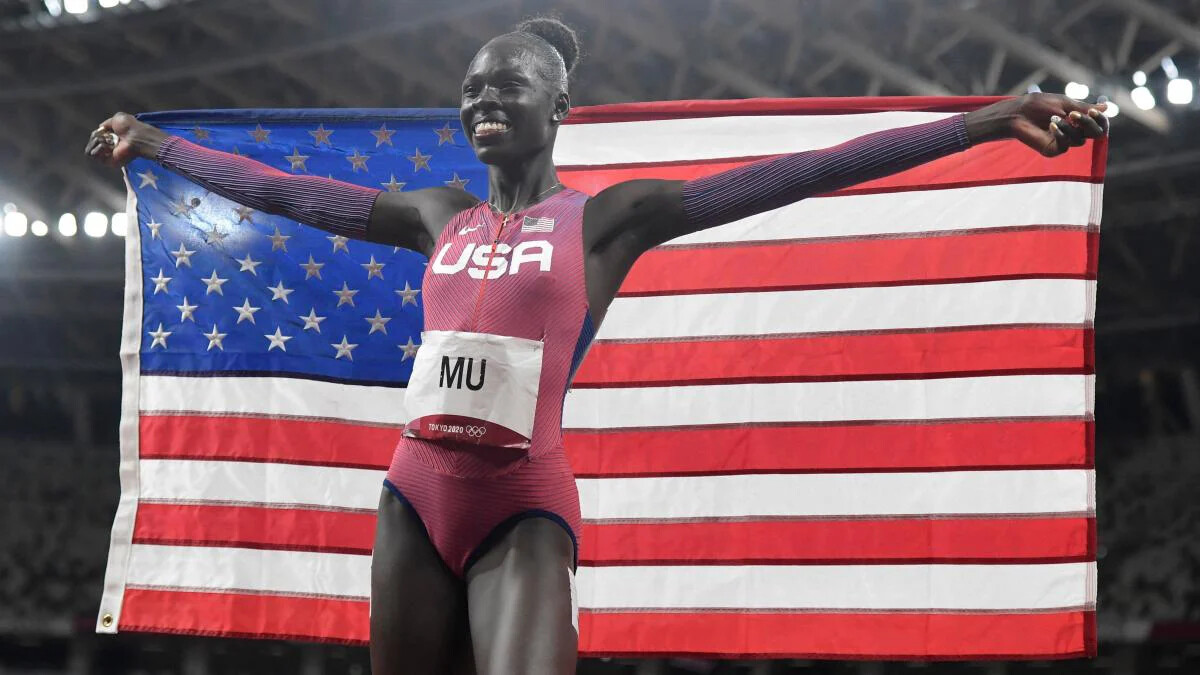
Athing Mu was born and raised in Trenton, New Jersey, and is the second youngest of seven siblings. Her parents immigrated to the United States from South Sudan, and her family is of South Sudanese heritage. She began competing in track at the age of 6. Mu did not join her high school track team, choosing to compete instead for Trenton Track Club. She graduated from Trenton Central High School in 2020
Challenging her in New York will be her fellow New Jersey native and the world indoor 800m champion Ajee’ Wilson, and the US indoor 1500m champion Heather MacLean.
In the women’s 100m hurdles, 2015 world champion Danielle Williams of Jamaica joins a field that includes Keni Harrison of the United States, the former world record-holder, and Jamaica’s Megan Tapper, the Olympic bronze medallist.
Those top athletes join the previously-announced Noah Lyles, Gabby Thomas, Zharnel Hughes, Ackeem Blake, Sydney McLaughlin-Levrone, Aleia Hobbs, Melissa Jefferson, Devon Allen, Trey Cunningham, Robert Dunning, Bryce Hoppel, Will Sumner, Chase Ealey and Maggie Ewen.
by World Athletics
Login to leave a comment
At 69, Bobby Kersee is track's 'mad scientist' and as influential as ever
Four years ago, the man associated with speed more than any track and field coach in the world felt himself slowing down, and he did not know why.
Since he was born in Panama in 1954 to a Panamanian mother and U.S. Navy father, Bobby Kersee has always been restless, a self-described wanderer with energy that matched his athletes. But in 2019, feeling unusually sapped, he called his doctor in St. Louis. Blood tests produced results dangerously far beyond the norm. Pancreatitis kept him stuck in a hospital for four weeks.
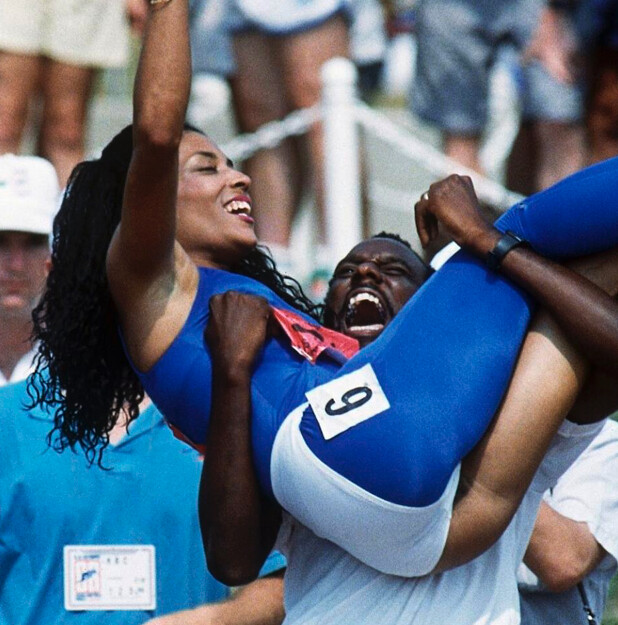
Once discharged, Kersee gave up red meat and alcohol.
What he would not quit was track.
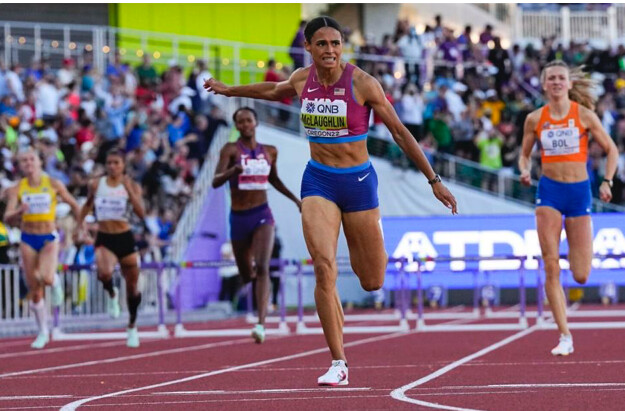
Forty years after coaching his first world champion Kersee, now 69, paced relentlessly for four hours on Thursday while watching his training group at West Los Angeles College.
“Everyone kind of says the same thing: You know, he's different in terms of he's basically a mad scientist,” said Athing Mu, the 20-year-old reigning Olympic and world champion at 800 meters who switched to Kersee’s coaching in September to expand her range. “He knows what he's doing.”
Under cloudy skies at the track high above Culver City, nine athletes in his training group, dubbed Formula Kersee, ran tailored workouts and waited for his every word, from the barked “let’s go!” to commands about mechanics he hollered to athletes mid-run. He lifted hurdles, held court with reporters and stopped only to film block starts with his iPhone.
At an age when he might have become anachronistic, Kersee and his methods still represent sprinting’s gold standard, associates and athletes say. Invigorated by a training group that describes itself as a family and could be dominant into the next decade behind headliners Mu and 23-year-old 400-meter hurdles world champion and world record-holder Sydney McLaughlin-Levrone, Kersee said his career has no discernible finish line.
His coaching, primarily of sprinters and hurdlers, has brought his athletes at least one gold medal in 10 consecutive Summer Olympics, a litany of world championships and world records and, for Kersee, veneration, criticism and influence.
As the first professional meet held at UCLA’s Drake Stadium since 1990, and a key early tentpole in USA Track & Field’s attempted plan to grow its U.S. fanbase before the 2028 L.A. Olympics, this weekend’s Los Angeles Grand Prix is both a callback to a time when track’s popularity soared and, its organizers hope, a harbinger such times can return.
Outside of Sebastian Coe, the 1984 Olympic gold medalist in the 1,500 who has since ascended to lead track’s global governing body, World Athletics, few figures have spanned both eras as prominently as Kersee.
Athletes and associates credit his ability to turn seemingly outlandish goals and times into tangible results to an ability to know what they need. Malachi Davis, who has overseen McLaughlin-Levrone’s training since she turned professional, likened Kersee to a conductor, his whistle and yellow stopwatch replacing a baton to direct “a beautiful dance of confidence and knowledge.”
Many coaches can teach how to run fast and build a race plan, McLaughlin-Levrone said, but Kersee understands “how to break it down piece by piece.”
Robert Forster, a Santa Monica-based physical therapist who has worked with Kersee’s athletes since 1983, said Kersee understands the “work-rest ratio” better than any coach, and does not overtrain where other coaches might double down on mileage. Forster has seen Kersee send an athlete home to rest just from the look on their face, and likes to tell a story about the 2016 Olympics, that Kersee later confirmed. Allyson Felix, the Los Angeles native who under Kersee became the most decorated athlete in track’s history, was nursing a severely sprained ankle and the physical therapist told Kersee it needed to be iced 20 minutes every hour. Forster did not expect, however, that Kersee would stay up the entire next night icing the ankle as Felix slept.
Kersee was an early adopter of technology, upgrading his video cameras at a Westwood electronics store years before he could film block starts of sprinters Jenna Prandini and Morolake Akinosun on his iPhone and zip the footage to an iPad on the infield of the West L.A. track.
Yet the Kersee mystique has endured as much because of his grasp on psychology as biomechanics — feeling for when to push and when to pull back.
Brandon Miller, a top 800-meter hopeful who began working with Kersee in September, has heard other athletes describe Kersee as “crazy.” He disputes that characterization, but noted that Kersee knows to stoke his competitiveness entering a workout’s final repetition with four words: “OK, what you got?”
“I've never met any coach like him,” Mu said. “He's not going to make you do anything that's for his sake. You know, it's gonna be all for you and the benefit of you and your career. And so, I come in here, I knew that he was very intentional, and that's something I needed, especially if I want my career to be long.”
Raised by a grandmother as an “A-train baby” bouncing between the Bronx and Queens, Kersee lost his mother, Daphne, when he was 14, before moving to San Pedro for high school.
He put himself through college at Long Beach State by working at a youth correctional facility in Whittier, where Kersee watched wards from midnight until 8 a.m. After graduating, he had two jobs: Track coach at Cal State Northridge, and counselor at another youth facility in Chino. He took over UCLA’s track and field program in 1980 and that provided enough money to be comfortable. Coaching Greg Foster to his first world championship in 1983, and watching his athletes win six golds and four silvers at the Los Angeles Olympics one year later, provided the final confidence he could sustain coaching as a career.
But he did not leave behind the edge required to do his former jobs.
“I used to work in the prisons, so you can’t walk into the prisons being Mother Teresa,” he said. “And then I did find myself carrying a little bit too much of that to the track. I had to calm myself down and say, 'Wait a minute, you’re not working with a warden.'”
Once, an elderly woman approached Kersee in an airport in Indiana and told him she did not like what she had seen from Kersee or the other famed coach with the B.K. initials: Bobby Knight. He did not belittle his athletes, he said, but he also didn’t leave room for interpretation about who ran the workout. The edge created a mystique that “he's crazy,” Miller said. “But he's not. I feel like everybody has preconceptions of everybody but you won't really know unless you're there and you're with them every day.”
Just as when he built his vaunted World Class Athletic Club in the 1980s, he will only train those he can coach hard and have chemistry. His athletes typically train Monday, Tuesday, Thursday and Friday. He treats Monday Zoom calls with the group as though he is re-interviewing for the job. It’s more convenient than years before, he said, when he recalled gathering before dawn in Europe to address their complaints with him.
“I think we have that understanding that I’m going to listen and respect them,” he said. “But my job is to get the job done for them individually and collectively but you hired me. And if you hired me, let me do my job.”
That job, essentially, can be reduced to one thing: Imparting confidence in his plan. And no one does it like Kersee, said Davis, who sprinted professionally before aiding McLaughlin-Levrone.
“He's a competition coach, so the time it counts, you feel confident,” Davis said. “And your head coach is basically your general and then competition is basically war. And yes, you prepare for war but that final voice, that presence, that action, that essence, that’s Bobby. And he earned that by what he’s accomplished throughout his career.”
Kersee allows that age has softened him. As McLaughlin-Levrone recalled last August, Kersee earned her trust when he saw her overwhelmed with emotion at a 2020 practice and handed her a paper showing a wheel of emotions, saying he had trouble expressing himself, too.
Though accustomed to criticism of himself for years — he joked he would be buried in a track, and "probably as much as people hate me, they’ll put me in lane one, because I’ll be stepped on the most" — he worries about how the inundation of social media affects athletes’ mental health. He has traveled to support the singing ambitions of Formula Kersee sprinter Chloe Abbott. This spring, a smiling Kersee was featured on TikTok when his athletes remade the opening credits of the 1990s sitcom “Family Matters.”
Four decades into his career, he has “a whole lot of knowledge and a whole lot of patience,” he said. “But still, don’t let grandpa get out of the chair.”
Ato Boldon was never coached by Kersee during his sprinting career but has known him for 31 years, since they overlapped at UCLA, and has seen a “golden-hearted” side to the coach. He also described Kersee’s coaching equivalent as either Knight or San Antonio’s Gregg Popovich.
“Everybody under him wins,” said Boldon. “But it’s not necessarily a democracy.
“... As time has gone on, people are like, ‘Wow he’s so this or he’s so that, he’s so abrasive.’ Listen, do you want results, or do you not want results?”
No one argues that Kersee gets results. The most common criticism is how rarely his athletes compete en route to smashing records and claiming gold.
Among athletes, meet directors, agents and track officials who see a need for the sport’s biggest stars and strong competition to draw in casual fans, it has become a question of how to unite what is best for the top athletes’ futures with what is best for the sport’s growth. The tensions surrounding the discussion are not dissimilar from the way “load management” in the NBA has sparked concerns whether it will turn off fans from the regular season.
Because many top athletes train under Kersee, he has become a focal point. There is also his history of pulling athletes late before a meet, sometimes because of injury, and sometimes as a power play, as in 1994, when a dispute over pay led him to withdraw Gail Devers from a high-profile Los Angeles indoor meet.
The topic reignited last week when he withdrew Mu and McLaughlin-Levrone from the Grand Prix, a meet for which he serves as co-promoter. It came soon after telling Track & Field News in February that even he would like to see McLaughlin-Levrone run more often, and told The Times in March that there was no reason meets in the U.S. couldn’t draw thousands if the sport’s leaders banded together to promote strong competitions.
Asked about the balance of what is best for his athletes, or the sport, Kersee this week called it a byproduct of limited sponsorship money within the sport, which incentivizes performances at the biggest meets, which often require qualification earlier in the season. Only a handful of stars make big money and can afford to be choosy. He contrasted it with the NFL and NBA, where athletes can still earn a paycheck while resting.
“I think it’s a little tougher on our athletes to try to balance out wanting to run for the public and run for our sport and also knowing if I run too much or make one little mistake it might cost me making a team,” Kersee said. “That if I go out there and run five or six races I’m going to get to the point of, 'OK why is he running me so much and she gets injured over there, did she really need to run?'”
McLaughlin-Levrone released a statement after being pulled from the Grand Prix field that she “regrettably” would not be competing, citing her coach’s choice. It also said she trusted his judgment, which the world record-holder echoed again Thursday.
“He has a plan and he is going to work it out to perfection,” said Boldon, who will call Saturday’s meet as part of NBC’s broadcast team. “It might not benefit USATF, it might not benefit the fans, but you tell me, what moment stood out most from last summer's world championships?”
It was McLaughlin-Levrone’s stunning 50.68 time to win the 400-meter world title and lower her own world record. The run cut through the noise to make SportsCenter. It also left McLaughlin-Levrone sore for days, she said. Seeing her parents in the stands, for the first time after becoming the first woman to run under 51 seconds, she told them “that hurt, so bad.”
“We've been very calculated in when we run and I think it's yielded us great results,” McLaughlin-Levrone said. “Bobby always uses analogies and he's like, 'You don't take the Ferrari out every day for a drive. You take it out when it needs to come out and it does its things and you put it back in the garage.' So, your body can only be pushed to a certain level so much in your career.
“You only have so many races in your legs and I think we're really strategic about which ones we choose to run. Obviously I know the sport wants to see a little bit more and I think we're trying to figure out how to do that in a safe way that we can still accomplish our goals and give them something to look forward to.”
For McLaughlin-Levrone and Mu, the question is not whether they will make this summer’s world championships in Hungary, or next summer’s Paris Olympics, but which events — possibly plural — they will run.
When Kersee evaluates whether to bring an athlete into his coaching, he also looks for their potential range. He thought he lost his job coaching Felix when he told the 200-meter star during his interview that he would have her run the 400.
Mu and McLaughlin-Levrone’s youth and potential range is one of the sport’s most speculative discussions; news about their upcoming races create instant headlines. The duo are “two of maybe the most talented athletes he’s ever had,” Boldon said.
Their world championships last summer gave McLaughlin-Levrone an automatic berth into the upcoming world 400-hurdle field, and Mu an entry into the 800. With that secured, Kersee has focused on running McLaughlin-Levrone in the open 400 meters, where Marita Koch’s world record of 47.60 has been effectively unapproachable for 38 years — only four women have run even faster than 49 seconds in the past 20 years. She once thought 47.60 was “impossible.” Not anymore.
“It's a very daunting number to look at, I'll tell you that,” McLaughlin-Levrone said. “But at the end of the day, I think if we can take the 400 hurdles to 50.6, I think 47.6 isn't too far off.”
In addition to her 800-meter world title, Mu once owned the collegiate 400-meter record and ran on the U.S. 4x400-meter relay team that won Olympic gold in Tokyo.
“I'm still super young and I have not touched the surface of a lot of things yet,” Mu said. “But I do have visions, which is like really big goals of competing in obviously the Olympics again, and then worlds and hopefully, doubling up.”
Would that mean the 800 and 400, or the 800 and 1,500?
“Hopefully both,” she said. “I mean, I would love to have a chance to do 4/8 and then go ahead and do the 8/15 at some point.”
Maybe this explains why Kersee moved so quickly across the track during practice. There was no sign he had once slowed down.
“I’m glad,” he said, “I have that Energizer Bunny still in me.”
This story originally appeared in Los Angeles Times.
Login to leave a comment
10 Reasons to Start Following Track and Field This Year
The 2023 season should be full of record-breaking performances from the sport’s biggest stars. Here are the most important things to know.
Track is back, and if the results from the indoor season and early outdoor meets are any indication, it should be another year of eye-popping results around 400-meter ovals this summer.
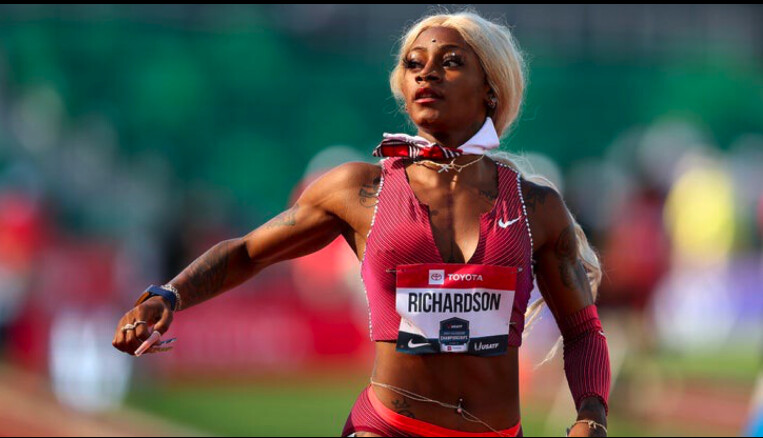
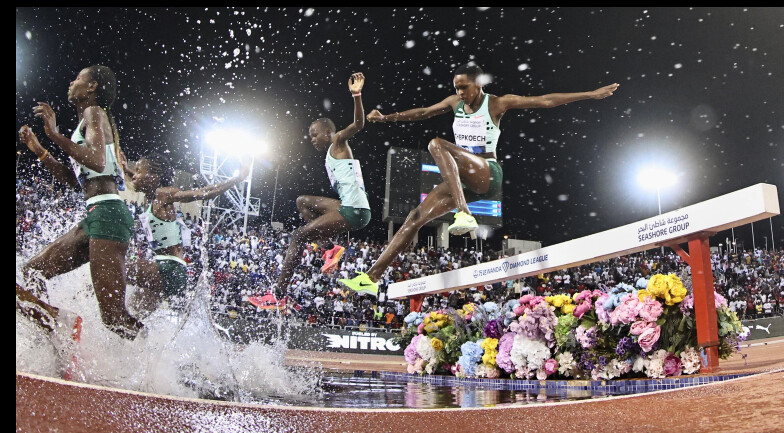
Why is track and field relevant to the average recreational runner?
Perhaps you’re running some of the same distances in your training and racing. Or maybe you have a connection to some of the events from your youth, days in gym class or on the playground. From a human performance perspective, no sport showcases the all-out speed, red-line endurance, max power, dynamic agility, and meticulous bodily control as track and field does.
Here’s a primer on the most awe-inspiring athletes and events of this summer’s track season. Because, come on: with a sport that includes events as multifaceted as the pole vault, as primal as the shot put, and as wild as the 3,000-meter steeplechase—a 1.8-mile race with 28 fixed barriers to hurdle and seven water pits to jump—what’s not to like?
One of the many things that makes track and field so special is that it’s one of the most diverse sports on the planet, both culturally and athletically.
Last summer, athletes from a record 29 different countries earned medals in the 25 different running, jumping, and throwing events at the World Athletics Championships in Eugene, Oregon.
At the highest level, there are athletes of all shapes and sizes from every culture and socioeconomic background. While there certainly are racial and cultural stereotypes that need dissolving and vast inequality among competing countries, from a performance point of view the sport is largely meritocratic, based on the time or distance achieved in a given competition.
Watching American Sydney McLaughlin-Levrone masterfully win the 400-meter hurdles in a world-record time last summer in front of a deafening crowd at Hayward Field in Eugene was a riveting experience. It was vastly different than watching Grenada’s Anderson Peters win the javelin world title with a career-best throw of 90.54 meters on his final attempt to beat India’s Neeraj Chopra, but both had edge-of-your-seat excitement, athletic excellence, and cultural significance.
One of the knocks against track and field in recent years is that it hasn’t done enough to attract casual fans the way professional football, basketball, hockey, and soccer have. Following the On Track Fest, the USATF Los Angeles Grand Prix on May 26-27 in Los Angeles is trying to up the ante by combining a mix of elite-level competition, an interactive fan festival, and top-tier musical performances.
Billed as the one of the deepest track meets ever held on U.S. soil, it will feature a star-studded 400-meter face-off featuring Americans Michael Norman, the reigning world champion, and Kirani James, a three-time Olympic medalist from Grenada, and a women’s 100-meter hurdles clash with world champion Tobi Amusan of Nigeria, Olympic silver medalist Keni Harrison of the U.S., and Olympic gold medalist Jasmine Camacho-Quinn of Puerto Rico.
Saturday’s action will be broadcast live on NBC Sports from 4:30 P.M. to 6 P.M. ET and be followed by a concert event called the Legends Jam, which will include appearances from some legendary athletes and be headlined by Grammy-winning singer Judith Hill.
American sprint sensation Sha’Carri Richardson will be racing the 100-meter dash at the USATF Los Angeles Grand Prix. You probably remember her for her perceived failures more than the astounding times she’s actually achieved on the track.
Two years ago, the sprinter from Dallas blew away the field in the 100-meter dash at the U.S. Olympic Trials with a 10.86 effort, but then she was famously suspended after testing positive for cannabis (which is on the World Anti-Doping Agency’s list of banned substances) and missed the Tokyo Olympics as a result. (She admitted using the drug to cope with the pressure of qualifying for the Olympics while also mourning the recent death of her biological mother.)
Then last year, despite strong early season performances, Richardson failed to make the finals of the 100-meter or 200-meter at the U.S. championships, so she missed out on running in the first world championships held on American soil.
This year, the 23-year-old sprinter appears to be locked in and better than ever, posting a world-leading 10.76 100-meter time on May 5 in Doha (she also ran an eye-popping 10.57 with an over-the-limit tailwind on April 9 in Florida) and posted the second-fastest time in the 200-meter (22.07) on May 13 at a meet in Kenya.
If she keeps it all together, expect Richardson to finally contend with elite Jamaican sprinters Shericka Jackson and Shelly-Ann Fraser-Pryce in the 100 and 4×100-meter relay in August at the World Athletics Championships in Budapest, Hungary.
A few years ago, American sprinter Fred Kerley was on his way to becoming one of the world’s best 400-meter runners. But he wanted more than that. What he really had his heart set on was becoming the world’s fastest man, a moniker that goes with the most dominant sprinter in the 100-meter dash.
Ignoring doubters, Kerley retooled his training and earned the silver medal in the 100-meter at the Tokyo Olympics (.04 seconds behind Italy’s Marcell Jacobs) and then continued his ascent last year by winning the U.S. championships (in 9.76, the sixth-fastest time in history) and world championships (9.86).
The 28-year-old from San Antonio, Texas, also became one of just two other runners (along with American Michael Norman and South African Wayde van Niekerk) to ever run sub-10 seconds in the 100-meter, sub-20 seconds in the 200-meter, and sub-44 seconds in the 400-meter. So far this year, Kerley has two of the four fastest 100-meter times of the season, including a speedy 9.88 on May 21 in Japan.
After trading barbs on social media this spring, Kerley and Jacobs are expected to face off in an epic 100-meter showdown on May 28 at a Diamond League meet in Rabat, Morocco, marking the first time the Olympic gold medalist and the world champion in the men’s 100m face off since the 2012 Olympic final, when Jamaican Usain Bolt beat countryman Yohan Blake. American Trayvon Bromell, the silver medalist at last year’s world championships, is also in the field, so it should be an extraordinary tilt.
If you’re a gambler, bet on Kerley to win that one and eventually get close to Bolt’s 9.58 world record. (To do so, he’ll be running faster than 26 miles per hour!) But don’t count out Kenya’s Ferdinand Omanyala, the early world leader (9.84), or fellow American sub-9.9 guys Bromell, Norman, Christian Coleman, and Noah Lyles at the 2023 World Athletics Championships on August 20, in Budapest. Depending on which three Americans join Kerley (who has an automatic qualifier) at the world championships, it’s actually quite likely the U.S. could sweep the top four spots in the 100 in Budapest.
If you’ve ever wanted to see the world’s top track and field stars competing live in the U.S., this is the year to do it. The May 26-27 USATF Los Angeles Grand Prix meet and June 3-4 Portland Track Festival are part of what might be the mosst compelling outdoor track season ever held on U.S. soil.
If you’re looking for an athlete to marvel at, start with Sydney McLaughlin-Levrone, the gold medalist in the 400-meter hurdles at the Olympics in 2021 and World Athletics Championships last summer. She’s been one of the sport’s rising stars since she was a teenager and yet she’s only 23. Her trajectory is still rising—especially since she moved to Los Angeles to train under coach Bob Kersee. Driven by her strong faith, McLaughlin-Levrone is the personification of hard work, grace and competitiveness.
This year she’ll temporarily step away from her primary event to show off her pure sprinting prowess when she opens her season in a “flat” 400-meter race at the Diamond League meet in Paris on June 9. Her personal best in the 400-meter is 50.07 seconds, set when she was a freshman at the University of Kentucky, but she clocked a speedy 50.68 while running over hurdles, en route to a world-record setting win at last summer’s world championships.
Her best 400-meter split as part of a 4×400-meter relay is 47.91, so it’s within reason to think she could be one of several runners to challenge the long-standing world record of 47.60 set in 1985 by East German Marita Koch. Because McLaughlin-Levrone has an automatic qualifier to the world championships in the 400-meter hurdles, she will likely run the open 400-meter at the U.S. championships and decide after the meet which one she’ll focus on.
American 800-meter ace Athing Mu has looked unbeatable for the past several years as she won Olympic gold in the event at the Tokyo Olympics and last year’s world championships. In fact, she has been unbeatable, having won 13 straight races since she dropped out of a mile race at the Millrose Games in January 2022. Going back to 2020 (when she was a senior in high school) and 2021 (during her one season at Texas A&M), she’s finished first in 51 of her past 53 races (relays included), with her only loss being a narrow runner-up finish to Kaelin Roberts in the 400-meter at the 2021 NCAA indoor championships.
Mu, who is also coached by Kersee and trains with McLaughlin-Levrone, seems to be the most likely athlete to challenge the women’s 800-meter world record of 1:53.28, set in 1983 by the Czech Republic’s Jarmila Kratochvílová. It’s the longest standing record in track and field, and only two runners have come within a second of it in the past 15 years. Her personal best of 1:55.04 is an American record and the eighth-fastest time in history. She’s still only 20 years old, so she has many years to keep improving and other historic opportunities ahead of her.
Mu said earlier this year she’d like to try a 400-800-meter double at an Olympics or world championships if the schedule permits—it’s only been done once successfully by Cuba’s Alberto Juantorena at the 1976 Games—but her coach has said she might attempt a 800-1,500-meter double next year at the Paris Olympics.
This year, Mu will run the 1,500 meters at the USATF Championships in July, but will likely defend her 800-meter title at the world championships in Budapest, as well as potentially running on the U.S. women’s 4×400-meter relay and the mixed-gender 4×400-meter relay (with McLaughlin-Levrone) for an opportunity to win three gold medals in a single championships.
With apologies to quarterback extraordinaire Patrick Mahomes, gymnastics all-arounder Simone Biles, and skiing superstar Mikela Shiffrin, pole vaulter Armand Duplantis just might be the most dynamically talented athlete in the world. That’s because he’s the world’s most dominant athlete (and has set six world records) in arguably the most demanding discipline, not only in track and field but quite possibly in any sport. No sport discipline involves such a dynamic combination of speed, power, precision and agility, and Duplantis, who is only 23, is already the greatest of all-time.
Prove me wrong or watch him set his latest world record (6.22 meters or 20 feet, 5 inches) at an indoor meet on February 25 in Clermont-Ferrand, France. That’s the equivalent of vaulting onto the roof of a two-story building, and in his case, often with room to spare.
Duplantis, who grew up in Lafayette, Louisiana, to athletic parents with Swedish and Finnish heritage, represents Sweden in international competitions. He started pole vaulting at age three, set his first of 11 age-group world-best marks at age seven, and won an NCAA title in 2019 as a freshman competing for LSU before turning pro.
All indications are that North Carolina State junior Katelyn Tuohy could become the next American running star. All she has done since she was young is win races and break records.
After winning the NCAA outdoor 5,000-meter a year ago, she won the NCAA cross country title in November. During the indoor track season this past winter, she set a new collegiate mile record (4:24.26) and won both the 3,000-meter and 5,000-meter title at the NCAA indoor championships in March. On May 7, the 21-year-old from Thiells, New York, broke the NCAA outdoor 5,000-meter record by 17 seconds, clocking 15:03.12 at the Sound Running On Track Fest.
Tuohy will be running both the 1,500-meter and 5,000-meter at the NCAA East Regional May 24-27 in Jacksonville, Florida, with the hopes of eventually advancing to the finals of both events at the June 7-10 NCAA Division I championship meet in Austin, Texas.
University of Arkansas junior Britton Wilson is a top collegiate star who is ready for prime time at the pro level. She won the 400-meter in a world-leading and collegiate record time of 49.13 in mid-May at the SEC Championships, where she also won the 400-meter hurdles (53.23) in a world-leading time. The 22-year-old from Richmond, Virginia, was the runner-up in the 400-meter hurdles at last year’s U.S. championships and fifth in the world championships, and could contend for a spot on Team USA in either event at the July 6-9 U.S. championships.
Kerley and Lyles are expected to square off in a 200-meter race at the USATF New York Grand Prix meet on June 24 at Icahn Stadium on Randall’s Island in New York City. There are also two high-level Puma American Track League meets in Tennessee—the Music City Track Carnival June 2 in Nashville and the Ed Murphey Classic August 4-5 in Memphis—and two Under Armour Sunset Tour meets organized by Sound Running on July 22 in Los Angeles and July 29 in Baltimore.
The best U.S. meet of the year, though, will be the USATF Outdoor Championships held July 6-9 in Eugene, Oregon, where American athletes will be vying for top-three finishes to earn a chance to compete for Team USA at the 2023 World Athletics Championships August 19-27 in Budapest.
The U.S. season will culminate with the September 16-17 Pre Classic in Eugene, Oregon, a two two-day meet that will double as the finals of the international Diamond League circuit and should include many of the top athletes who will be representing their countries in next summer’s Paris Olympics. (And if you want to see the country’s top high school athletes run unfathomable times for teenagers, check out the Brooks PR Invitational on June 14 in Seattle, Washington.)
At the June 2 Diamond League meet in Rome, Italy, the men’s field in the 5,000-meter run will have what might be the fastest field ever assembled, with 13 runners who have personal best times of 12:59 or faster.
The field will be headlined by Joshua Cheptegei of Uganda, who lowered the world record to 12:35.36 in Monaco three years ago. (That’s a pace of 4:03 per mile!). But it will also include Kenya’s Jacob Krop (12:45.71) and Nicholas Kipkorir (12:46.33), Ethiopia’s Yomif Kejelcha (12:46.79), American Grant Fisher (12:46.79), Canadian Mohammed Ahmed (12:47.20), and Guatemalan-American Luis Grijalva (13:02.94), among others. With a big prize purse at stake and pacesetters ramping up the speed from the start, it should be a race for the ages.
by Outside Online
Login to leave a comment
Sydney McLaughlin-Levrone to return to the track at Paris Diamond League
Sydney McLaughlin-Levrone, the current world-record holder in the women’s 400m hurdles, will return to the track at the Paris Diamond League meeting on June 9. On Monday, Paris Diamond League event organizers announced that McLaughlin-Levrone will race in the women’s 400m, an event she has not run in two years.
At 23, the American athlete achieved two remarkable feats at the last two major championships. At the 2020 Tokyo Olympics, McLaughlin-Levrone won gold in both the 400m hurdles and 4x400m relay, breaking her hurdles world record in 51.64 seconds. A year later, at the 2022 World Championships in Eugene, Ore., she smashed her record again in 50.68 seconds, becoming the first woman to go under the 51-second barrier.
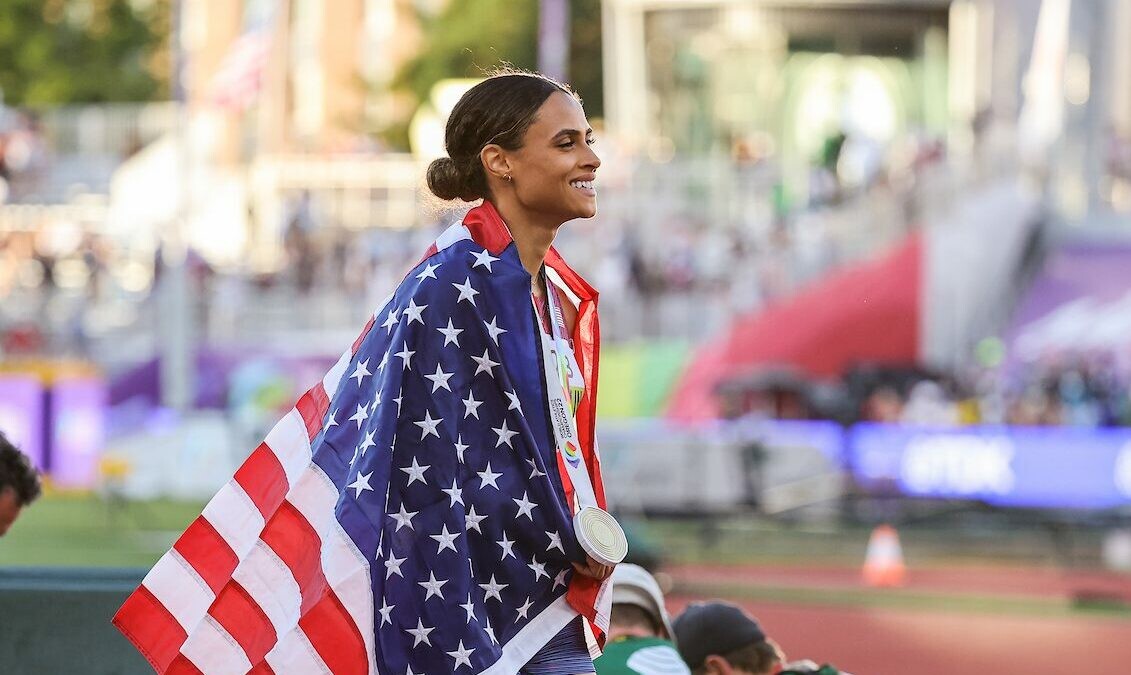
For two years, U.S. track fans have speculated if generational talent McLaughlin-Levrone could challenge the American 400m record of 48.70 seconds held by Sanya Richards-Ross. McLaughlin-Levrone’s last 400m came at the 2021 Bryan Clay Invitational, where she won the race in 51.16 seconds. She has a one-lap personal best of 50.07 seconds from 2018.
McLaughlin-Levrone has only raced once this season, an indoor 60m race at the 2023 Boston New Balance Grand Prix in February. She was initially scheduled to return at the USATF Los Angeles Invitational meet on May 27, but her coach Bobby Kersee withdrew her last week, citing hamstring soreness.
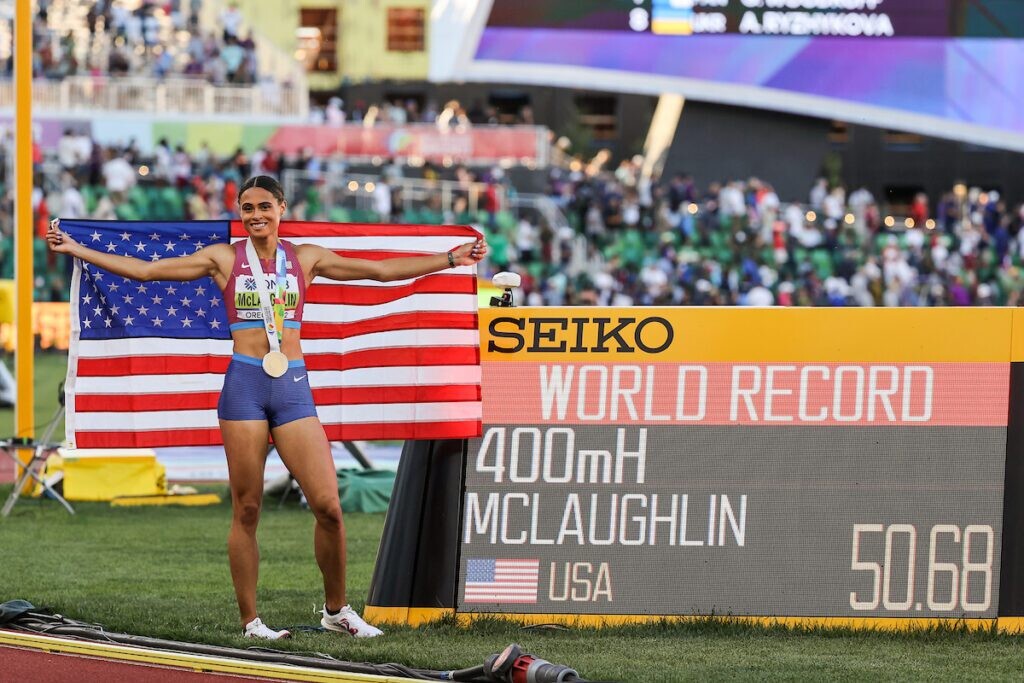
At the June 9 Paris Diamond League meeting, McLaughlin-Levrone will share the track with Marileidy Paulino of the Dominican Republic, the silver medallist in the 400m from the 2020 Tokyo Olympics. This will be the first time McLaughlin-Levrone has competed at a European Diamond League event since 2019.
Login to leave a comment
Shelly-Ann Fraser-Pryce is Laureus Sportswoman of the Year
Jamaican sprinter picks up prestigious award while Catherine Debrunner is Sportsperson of Year with Disability
Shelly-Ann Fraser-Pryce has added another accolade to her already glittering collection after becoming 2023 Laureus Sportswoman of the Year.
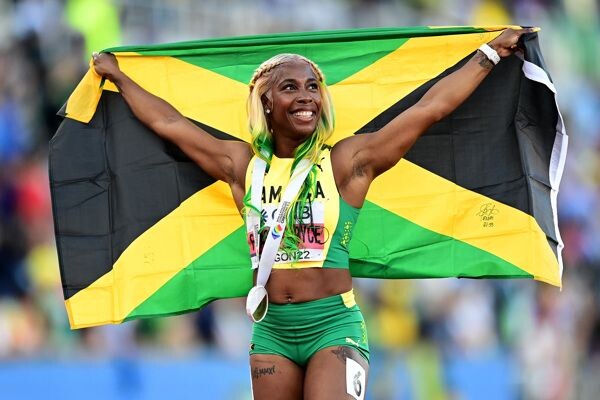
The 36-year-old Jamaican sprinter was rewarded at the Laureus Awards ceremony in Paris (May 8) for a remarkable 2022 that saw her win a record-breaking fifth world 100m title, world 200m and 4x100m silver medals and a fifth sprint Diamond League crown.
It was a truly historic season for Fraser-Pryce as she also became the first woman to run seven sub-10.7 times in one year, clocking wind legal marks of 10.67, 10.67, 10.67, 10.66, 10.67, 10.62 and 10.65.
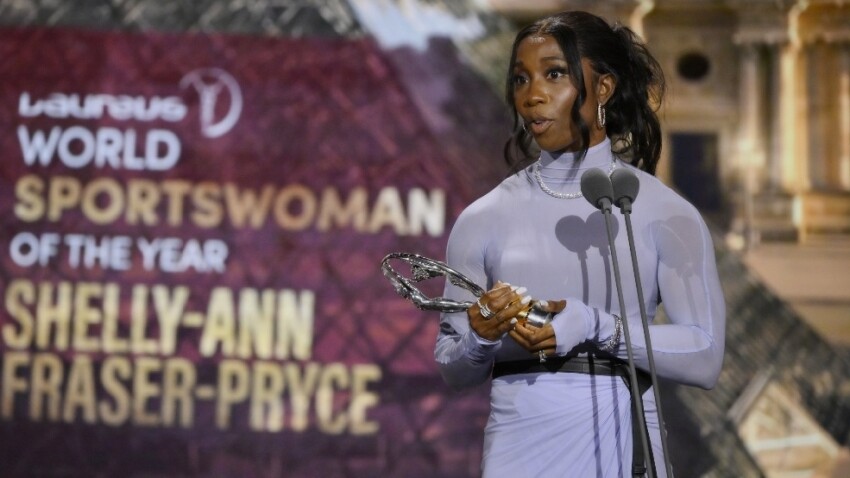
In being crowned Sportswoman of the Year, Fraser-Pryce beat fellow track and field star Sydney McLaughlin-Levrone, footballer Alexia Putellas, tennis star Iga Świątek, swimmer Katie Ledecky and alpine skier Mikaela Shiffrin.
“I was thrilled to be nominated alongside such inspiring female athletes,” Fraser-Pryce said. “To win this award, voted for by some of the greatest sportsmen and women of all time, is just amazing.
“This is the sixth time I’ve been nominated in this category, so to finally hold the Laureus statuette in my hands is one of the greatest honors of my career.
“When athletes have the spotlight, it’s important the example we set is the best it can be. We have a responsibility to influence the next generation in a positive way and that’s what the Laureus Awards are all about.”
This award will be extra special for the “Pocket Rocket” as Laureus acknowledges athletes from all sports and not just athletics.
Fraser-Pryce wasn’t the only athletics star to be recognized by Laureus in the French capital as Catherine Debrunner was named Sportsperson of Year with Disability.
The 28-year-old Swiss athlete had a spectacular 2022 and saw her set four world records in the T53 100m, 200m, 400m and 800m.
Debrunner then went on to win her debut marathon in Berlin and followed it up with victory in London seven days later.
The Laureus Awards were first established in 1999 to honor individuals and teams from the sporting world.
by Tim Adams
Login to leave a comment
Who Would Be the #1 Pick If Running Had a Draft?
Here are the runners you’d want to build a franchise around.
It's NFL draft weekend. A weekend of hope for fans whose favorite teams underperformed last year or lost some key players in trading wars. The Carolina Panthers have the first pick this year, and they desperately need a quarterback to build their team around for the foreseeable future.
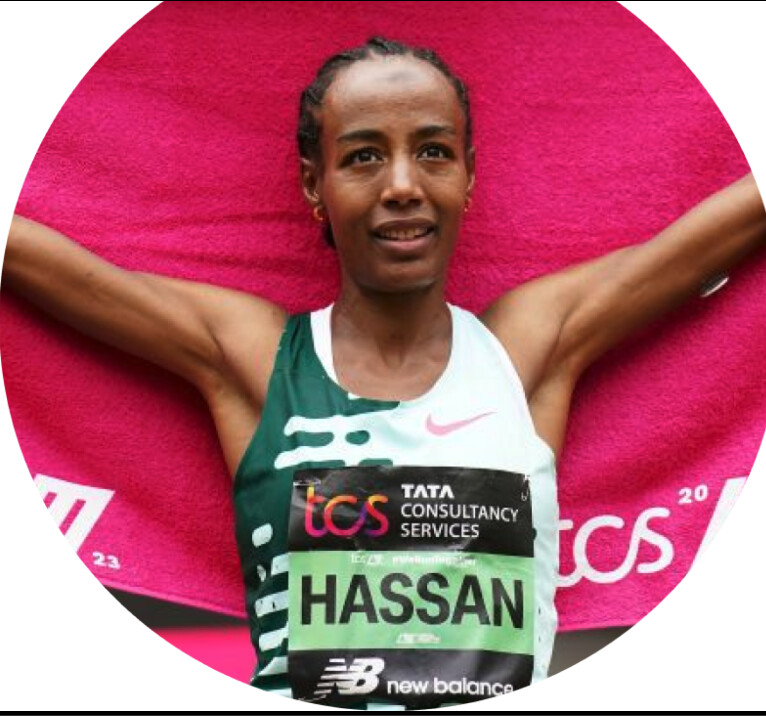
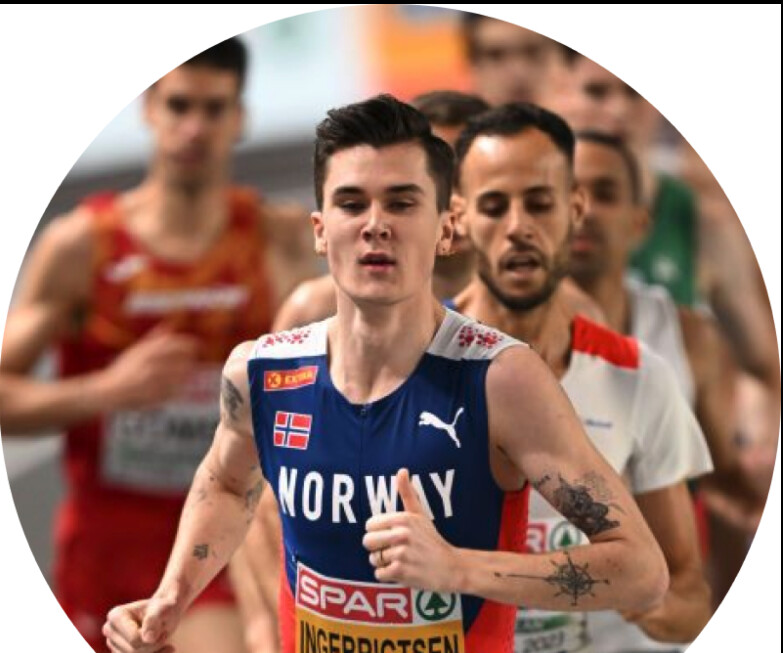
On Thursday, they selected former Heisman winner Bryce Young, of Alabama, to fill that role. That got the editors at Runner’s World thinking: who would go first overall in the sport of running? First, we need to set some parameters for our fantasy scenario. All running events contested at the Olympics—from the 100 meters to the marathon—are included. (Field events can have their own draft). And athletes must be currently competing, so no FloJo or Michael Johnson.
We conducted a quick office poll and consulted our track nerds to come up with a shortlist of three women and three men. Here’s who we’re picking.
Women
Sifan Hassan
Distance, The NetherlandsIf you watched her storm to a win at last week’s London Marathon, you probably already agree with me—Sifan Hassan has the best range in the world right now. Frankly, it’s not even close. At the 2020 Olympics, the Dutch runner pulled off an insane triple, winning the 5,000 meters, 10,000 meters, and capturing bronze in the 1,500 meters. She had a down year in 2022, missing the podium at the World Championships, but she reasserted herself as a force this year after her comeback win at London. Her only draft stock drawback? At 30 years old, she might not be the best investment for a team looking far down the line.
Sydney McLaughlin-Levrone
Hurdles, United StatesThe world record holder in the 400-meter hurdles is a sure-fire pick for a team looking for star power and incredible consistency. She’s a monster talent—making the Olympics at just 16 years old—and since then, now 23, she’s only gotten better. Last year, at the World Championships, she set the world record, beating a loaded field. But McLaughlin-Levrone’s upside is in her versatility: she’s world class in the 110-meter hurdles as well, and was a ringer on Team USA’s gold-medal winning 4x400-meter relay team at the 2020 Olympics. Syd the Kid is a no-brainer for a team that needs a recognizable, long-term talent in the sprints.
Letesenbet Gidey
Distance, Ethiopia The Ethiopian star’s range is not quite as expansive as Hassan’s, but at 25, she’s already an instant threat in whatever she’s entered in. She’s the current world record holder in the 5,000 meters, 10,000 meters, and half marathon—plus, she boasts a marathon PR of 2:16:49. Gidey is a perfect fit for a team looking to sacrifice a bit of experience for one of the top up-sides in distance running.
Men
Jakob Ingebrigtsen
Distance, NorwayThe mid-distance prodigy hasn’t raced much on the roads, but he’s almost a lock in anything from 1,500 meters to 5,000 meters. He’s starting to run out of accomplishments at only 22 years old: Olympic gold? Check. World record? Check. Ingebrigtsen will do well on a team that needs a vocal leader, and who can back up his talk with his speed. Plus, he’s got swagger, and the entire country of Norway behind him.
Grant Holloway
Hurdles, United StatesI have a soft spot for consistent hurdlers, I guess. Sure, Holloway finished a disappointing second at the 2020 Olympics, but he won world championships in the 60-meter hurdles and 110-meter hurdles last year. In fact, Holloway hasn’t lost a 60-meter hurdles race in nine years. And he’s only 25. In college, he also won national championships in the flat 60 meters, 4x100-meter relay, and split 43.7 on the 4x400-meter relay—talk about a utility player.
Jacob Kiplimo
Distance, Uganda Staying within the theme of impressive range and youth, Jacob Kiplimo is a solid pick for a team that wants to focus on the long distances. Sure, you can go with a proven legend like Kipchoge, or an accomplished marathoner like Evans Chebet, but Kiplimo owns the half marathon world record (57:31) and recently won gold at the World Cross Country Championships earlier this year. He’s less experienced than some of his counterparts (like fellow Ugandan Joshua Cheptegei), but the 22-year-old has an extremely high ceiling and has proven that he’s not afraid to take on the world’s best.
by Runner’s World
Login to leave a comment
2024 Olympic Track & Field Schedule Is Out
On Monday, World Athletics announced the schedule for the 2024 Olympic Games, to be held in Paris on August 1-11, 2024 (only 570 days to go!). There were a few key changes from three years earlier in Tokyo.
First, all track & field finals will be held during the evening sessions (some finals had been held in the morning during the 2016 and 2020 Olympics). The marathons will remain in the morning, though the men’s marathon will no longer be held on the final day of the Games, as had been tradition. That honor for the first time will go to the women’s marathon, which will be held on August 11. Giving women the honor makes sense given that, per Reuters, the “marathon route was modelled on the path of the October 1789 Women’s March on Versailles – when thousands, mainly female market traders furious over the price of bread, marched to the lavish palace of King Louis XVI.” In 2024, the men’s marathon will come on the penultimate day, August 10.
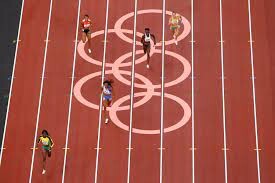
The other major change is the introduction of a repechage round, which will replace time qualifiers in five events: the 200, 400, 800, 1500, and 400 hurdles. Under the new format, any athlete who does not advance automatically from the first round will compete in an extra race –the repechage round — to earn their spot in the semifinals. Qualification from semifinals to the final will remain the same.
While every evening session has at least one final, you may want to circle August 8, 2024, on your calendar right now. That night is set to feature the finals of the women’s 400 hurdles (Sydney McLaughlin-Levrone), men’s 200 (Noah Lyles vs. Erriyon Knighton), and men’s 110 hurdles (Grant Holloway), plus the semis of the women’s 1500 meters.
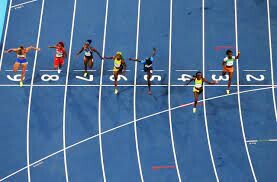
A number of doubles — 100/200, 800/1500, 1500/5,000, 5,000/10,000 — are very feasible under the current schedule. But what about the 400/400 hurdles, 400/800, and 1500/5,000/10,000 — the doubles (and triple) that would appeal to superstars Sydney McLaughlin-Levrone, Athing Mu, and Jakob Ingebrigtsen? None of them are impossible.
Possible doubles/triples
Men’s 1500/5,000/10,000 (Jakob Ingebrigtsen)
We’ve got great news for Jakob Ingebrgitsen fans. You’ll likely see him running in two — maybe three — events at Paris.
At the Tokyo Olympics, Ingebrigtsen would have liked to have done the 1500/5000 double like he did at the 2019 and 2022 Worlds but he only ran the 1500 as the two events overlapped a ton. In Tokyo, the 1500 was held on August 3 (a.m.), August 5 (p.m.), and August 7 (p.m.) and the 5000 was held on August 3 (p.m.) and August 6 (p.m). In Paris, 1500/5000 double is eminently more doable as the 1500 finishes before the 5000 even starts.
And there is even more good news. Last year, Ingebrigtsen made headlines by saying he wanted to do what Sifan Hassan did in 2021 and triple at the 2023 Worlds and 2024 Olympics: 1500, 5,000, and 10,000. The triple is basically impossible at the 2023 Worlds. At the 2024 Olympics, it’s tough but doable: it would require two races on August 2 (1500 first round in the morning, 10,000 final 10 hours later), and it would require running the 1500 final at 9:00 p.m. on August 6 and the 5,000 first round 14 hours later on the morning of August 7.
In Tokyo, Hassan had to run two races on the same day (1500 prelims in morning, 5,000 final in evening) and also had to run finals on consecutive days (1500 followed by 10,000). In Paris, Ingebrigtsen would get four days between the 10,000 and 1500 finals and another four days between the 1500 and 5,000 finals.
August 2, 11:05 a.m.: 1500 first round
August 2, 9:20 p.m.: 10,000 final
August 4, 9:10 p.m.: 1500 semis
August 6, 9:00 p.m.: 1500 final
August 7, 11:00 a.m.: 5,000 first round
August 10, 8:00 p.m.: 5,000 final
Women’s 1500/5,000/10,000 (Sifan Hassan)
Given Sifan Hassan already did the 1500/5,000/10,000 triple in Tokyo about as well as anyone could (bronze-gold-gold) and given it took her close to a year to return to racing in 2022, it would be a surprise to see her attempt the triple again in Paris. But if someone else — perhaps World Indoor 1500/World Outdoor 5,000 champ Gudaf Tsegay — is so inclined, it’s possible to triple. The toughest part would be running the 1500 first round the morning after the 5,000 final and running the 10,000 and 1500 final on back-to-back nights (the latter was also the case for Hassan in 2021, though the order of the 10,000 and 1500 finals were flipped). But unlike in 2021, all the races are on different days.
August 2, 6:10 p.m.: 5,000 first round
August 5, 9:20 p.m.: 5,000 final
August 6, 10:05 a.m.: 1500 first round
August 8, 8:05 p.m.: 1500 semis
August 9, 8:55 p.m.: 10,000 final
August 10, 8:25 p.m.: 1500 final
Women’s 400/400 hurdles (Sydney McLaughlin-Levrone, Femke Bol)
No woman has ever won the 400/400 hurdles double at the Olympics, but superstars Sydney McLaughlin-Levrone and Femke Bol could attempt it in Paris. It would require racing six days in a row (seven including the 4×400 relay final) but never more than once in a day. That’s about as good as you can ask for.
August 4, 12:35 p.m.: 400 hurdles first round
August 5, 11:55 a.m.: 400 first round
August 6, 7:45 p.m.: 400 hurdles semis
August 7, 8:45 p.m.: 400 semis
August 8, 9:05 p.m.: 400 hurdles final
August 9, 8:00 p.m.: 400 final
August 10, 9:20 p.m.: 4×400 relay final
Women’s 400/800 (Athing Mu)
Athing Mu won the women’s 800 at the 2020 Olympics and 2022 Worlds and is the NCAA record holder in the 400 meters at 49.57. After winning gold in Tokyo, she said one of her next goals is to double up in the 400/800. The double is possible in Paris but not perfect as it would require her to race three sessions in a row — the night of August 4 in the 800 semis, the morning of August 5 in the 400 first round, and the night of August 5 in the 800 final. The good news is Mu has will have some time to recover as there is a rest day between the 800 final and 400 semis and another rest day between the 400 semis and 400 final.
In a perfect world the 800 semis and 400 first round would both be shifted forward by a day but that’s not going to happen because it would require running the repechage and semifinal round of the 800 on the same day.
August 2, 7:45 p.m.: 800 first round
August 4, 8:35 p.m.: 800 semis
August 5, 11:55 a.m.: 400 first round
August 5, 9:50 p.m.: 800 final
August 7, 8:45 p.m.: 400 semis
August 9, 8:00 p.m.: 400 final
August 10, 9:20 p.m.: 4×400 relay final
Women’s 200/400 (Shaunae Miller-Uibo)
Two-time Olympic 400 champion Shaunae Miller-Uibo of the Bahamas attempted the 200/400 double in Tokyo and made the finals of each event. But she wound up going through the motions of the 200 final, finishing last in 24.00 (after running the first round of the 400 that morning), before running a personal best of 48.36 to win the 400 three days later. The 200/400 double is once again possible in 2024, but Miller-Uibo’s weaker event, the 200, would once again come first. It would also require running twice in one day, though neither of the races would be finals (400 first round on the morning of August 5, followed by the 200 semis that evening).
August 4, 10:55 a.m.: 200 first round
August 5, 11:55 a.m.: 400 first round
August 5, 8:55 p.m.: 200 semis
August 6, 9:50 p.m.: 200 final
August 7, 8:45 p.m.: 400 semis
August 9, 8:00 p.m.: 400 final
Men’s 200/400
In Tokyo, it was possible to attempt the men’s 200/400 double as all of the races were on different days (save for the 200 first round and semis — a necessary same-day double for all athletes). In Tokyo, it’s virtually impossible as the 200 semis will be held just 73 minutes before the 400 final on the night of August 7.
August 4, 7:05 p.m.: 400 first round
August 5, 8:05 p.m.: 200 first round
August 6, 8:30 p.m.: 400 semis
August 7, 8:07 p.m.: 200 semis
August 7, 9:20 p.m.: 400 final
August 8, 9:25 p.m.: 200 final
How will the repechage round work?
In almost every case, the repechage round will take place the day after the first round of each event. The only exception is the men’s 110 hurdles, where the first round is on August 4 and the repechage on August 6. And in almost every case, the repechage athletes won’t have to race twice in the same day. The only exception is the women’s 200, where the first round will be held on the morning of August 4, the repechage on the afternoon of August 5, and the semis on the evening of August 5.
Should any repechage athlete in the 800 advance to the final, they will have raced on four consecutive days. For any 1500 athlete to advance to the final, they will have had to have raced three straight days followed by a one-day break before the final. The repechage round is mostly a chance for lesser athletes to get a longer Olympic experience instead of running one race and going home, but it’s not impossible to suggest that a repechage athlete could be a factor in the final. At the 2020 Olympics, Great Britain’s Josh Kerr needed a time qualifier to advance from the first round of the men’s 1500 and wound up earning the bronze medal. Such a feat will be harder in 2024 since an athlete such as Kerr would now have to run an extra race.
Here’s how the schedule works for the men’s and women’s 800 and 1500:
Men’s 800
Prelims: August 7, 11:45 a.m.
Repechage: August 8, 12:00 p.m.
Semis: August 9, 11:30 a.m.
Final: August 10, 7:30 p.m.
Women’s 800
Prelims: August 2, 7:45 p.m.
Repechage: August 3, 11:10 a.m.
Semis: August 4, 8:35 p.m.
Final: August 5, 9:50 p.m.
Women’s 1500
Prelims: August 6, 10:05 a.m.
Repechage: August 7, 12:35 p.m.
Semis: August 8, 8:05 p.m.
Final: August 10, 8:25 p.m.
Men’s 1500
Prelims: August 2, 11:05 a.m.
Repechage: August 3, 8:25 p.m.
Semis: August 4, 9:10 p.m.
Final: August 6, 9:00 p.m.
by Letsrun
Login to leave a comment
Paris 2024 Olympic Games
For this historic event, the City of Light is thinking big! Visitors will be able to watch events at top sporting venues in Paris and the Paris region, as well as at emblematic monuments in the capital visited by several millions of tourists each year. The promise of exceptional moments to experience in an exceptional setting! A great way to...
more...Ten reasons to be excited for the 2023 Athletics season
There are many things to look forward to in the sport of athletics in the upcoming year.
There’ll be three global championships in 2023, with ever-expanding one-day meeting circuits spread throughout the year. Rivalries will be renewed, and record-breakers will continue to push boundaries in their respective disciplines.
Here are just ten of the many reasons to be excited by what’s to come over the next 12 months.
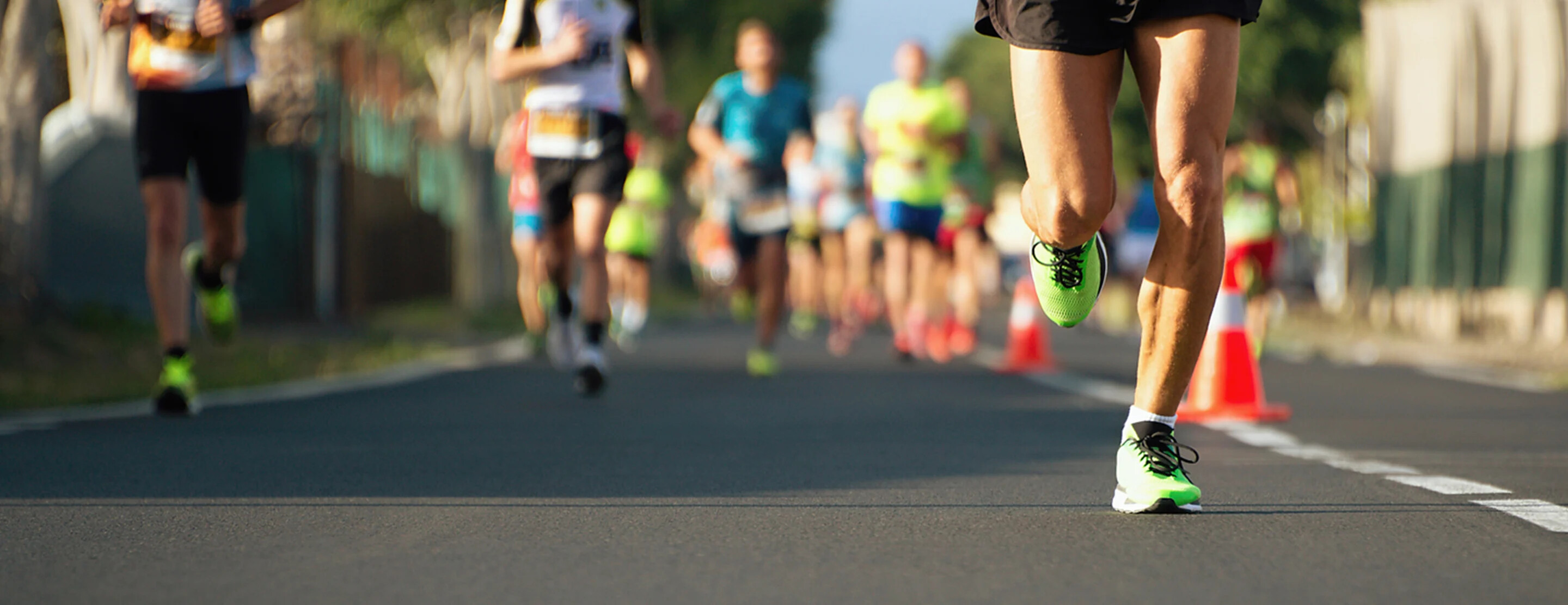
1. World Athletics Championships Budapest 23
More than 2000 athletes from about 200 countries will head to the Hungarian capital to compete in the world’s biggest track and field event of 2023. Taking place just 13 months after the last edition, it will be the shortest ever gap between two World Championships, so fans won’t have long to wait before seeing the best athletes on the planet re-engage in battle for global honours.

2. Pushing boundaries
World Athletes of the Year Mondo Duplantis and Sydney McLaughlin-Levrone have elevated their respective events to new heights in recent years.
Both aged just 23, their progression and record-breaking exploits will most likely continue in 2023. The same applies to other dominant forces within the sport, such as world and Olympic triple jump champion Yulimar Rojas and marathon legend Eliud Kipchoge.
3. New eras
The sport, as with everything in life, continues to evolve. Kenya, for example, dominated the steeplechase for years, but now the leading forces in that discipline are from Morocco, Ethiopia and Kazakhstan.
The women’s throws, meanwhile, are now the domain of North America. And Japan is a leading force in men’s race walking.
New faces and countries will likely emerge in 2023, changing the landscape of the sport.
4. Sprint showdowns
Gone are the days where the world’s leading sprinters avoid each other on the circuit. Multiple world champion Shelly-Ann Fraser-Pryce, for example, will often line up against fellow Jamaican stars Elaine Thompson-Herah and Shericka Jackson. And 200m specialists Noah Lyles and Erriyon Knighton have clashed frequently in recent years. No doubt there will be many more high-octane sprint duels in store in 2023.
5. World Athletics Road Running Championships Riga 23
The newest global event within the sport, the World Athletics Road Running Championships Riga 23 will unite elite and recreational runners in the Latvian capital on September 30 and October 1. The range of distances — mile, 5km and half marathon — means there’s something for all of the world’s best endurance athletes to sink their teeth into. The same applies to the thousands of runners who’ll take to the streets of Riga for the mass races as they race in the footsteps of legends.
6. Crouser vs Kovacs
They provided one of the greatest duels the sport has ever witnessed at the 2019 World Championships, and there’s no sign of the rivalry ending between Ryan Crouser and Joe Kovacs. The shot put giants have won numerous global titles between them. Crouser has been a dominant force in recent years, but Kovacs also hit an all-time career peak in 2022 with a lifetime best of 23.23m, taking him to No.2 on the world all-time list behind Crouser. No one would be surprised if either man broke the world record in 2023.
7. At the double
When the timetable for the 2023 World Championships was release a few months ago, it became clear that many popular doubles — such as the 100m and 200m, 800m and 1500m, 1500m and 5000m, 5000m and 10,000m, 20km and 35km race walk, women’s long jump & triple jump, and women’s 200m and 400m – would be doable in Budapest. The likes of Yulimar Rojas, Shaunae Miller-Uibo, Fred Kerley and Sydney McLaughlin have all hinted at attempting major championship doubles in recent years, so it will be fascinating to see who enters more than one discipline in the Hungarian capital.
8. Continental Tour Gold expands
The global one-day meeting circuit will have 14 Gold level meetings in 2023, taking in new stops in Botswana, Grenada and Melbourne.
It means there are now Gold meetings in five different continental areas. The wider series has also expanded with 165 Continental Tour meetings currently on the calendar for 2023, 13 more than in 2022.
9. Distance duels
Endurance athletes are extra fortunate in 2023 because they will be able to compete at all three global championships, covering a range of surfaces. Letesenbet Gidey and Hellen Obiri provided one of the most thrilling clashes at the World Championships in Oregon, and there’s a good chance they’ll race one another again, either in Bathurst, Budapest or Riga.
World 5000m champion Jakob Ingebrigtsen, meanwhile, could potentially line up against two-time world 10,000m champion Joshua Cheptegei in Budapest — or even on the circuit throughout the season.
There are four women active in the marathon — Brigid Kosgei, Ruth Chepngetich, Amane Beriso and Tigist Assefa — with sub-2:16 PBs, all of whom could push one another to a world record. And in the race walks, the likes of Toshikazu Yamanishi and Massimo Stano could clash at either 20km or 35km — or both.
10. World Athletics Cross Country Championships Bathurst 23
One of the first big highlights of the year will take place Down Under when Bathurst hosts the World Cross Country Championships.
Recent editions have been highly competitive and engaging, and that will no doubt be the case once more as hundreds of the world’s best distance athletes take to Mount Panorama. And, as is the case with Riga and Budapest, there are opportunities for recreational runners to be a part of the event too.
by World Athletics
Login to leave a comment
Mu to prepare for Paris 2024 with McLaughlin-Levrone's coach Kersee
Athing Mu will prepare for the defence of her 800 meters title at the Paris 2024 Olympics under the direction of a new coach, Bobby Kersee, who already guides the career of the Olympic 400m hurdles champion Sydney McLaughlin-Levrone.
Mu, 20, will move from Texas to Los Angeles to be part of the new coaching set-up.
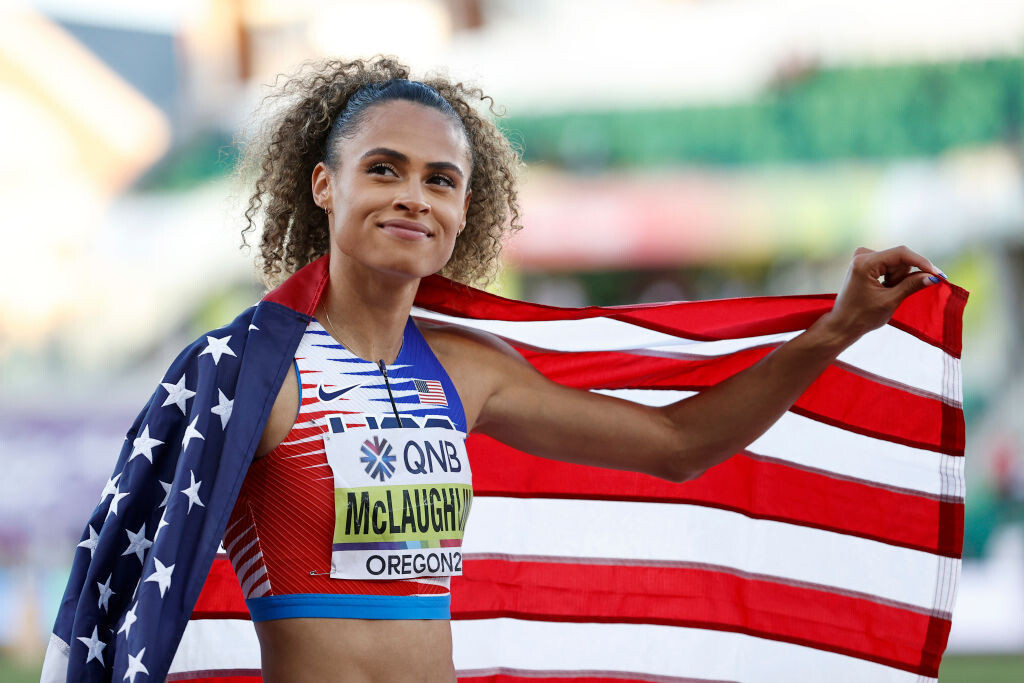
"I'm excited for this opportunity to train with the track and field legend Bob Kersee", Mu posted on social media.
"Coach Kersee has the ability to further enhance my running skills and implement the tools needed to reach my potential."
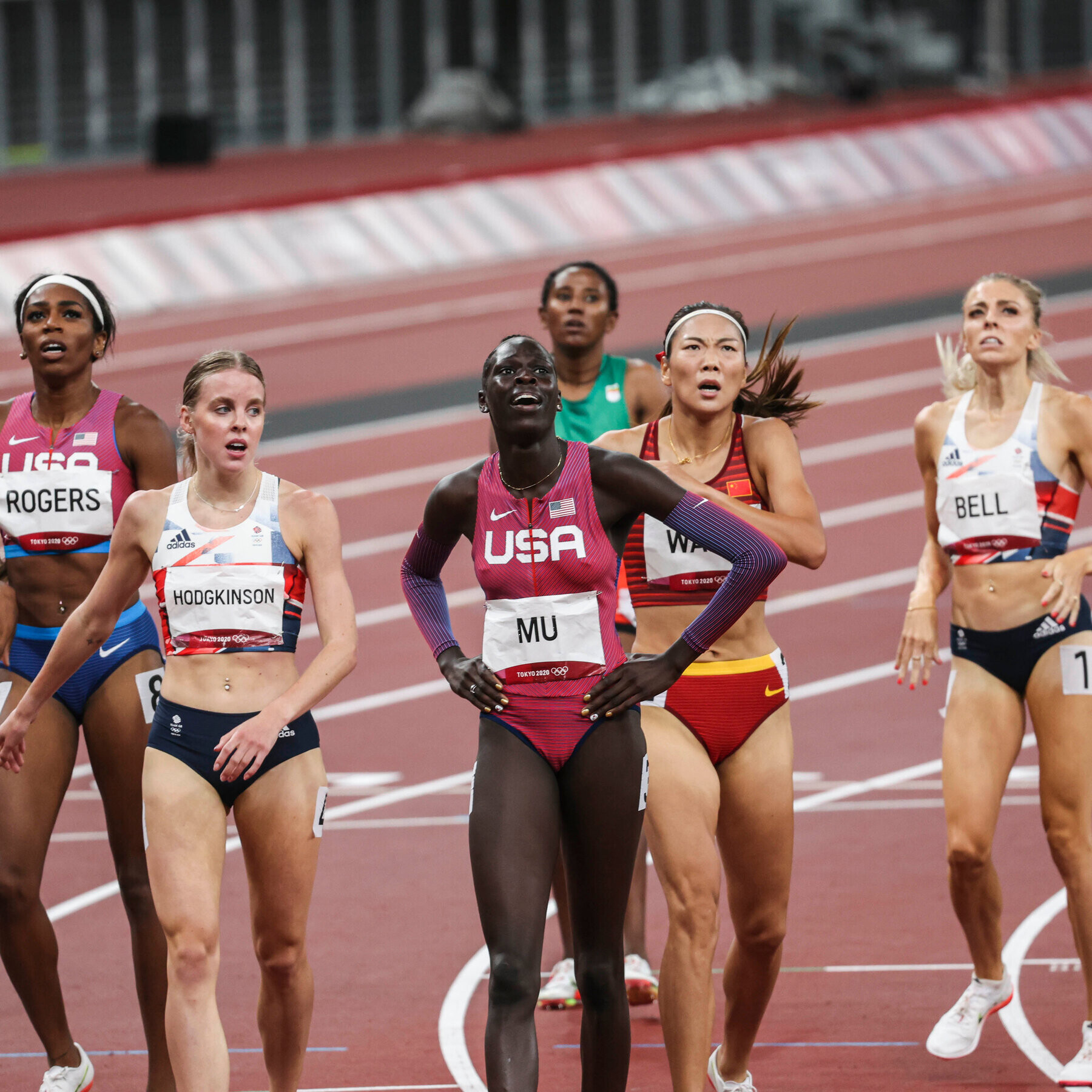
Mu finished ahead of Briton Keely Hodgkinson to win the Olympic title in a United States record of 1min 55.21sec last year, becoming the youngest American woman to win an individual track gold at the Olympics since Wyomia Tyus earned the 100m title in 1964.
This year she beat her British rival to the world title in Eugene to become the youngest woman to hold Olympic and world titles in an individual track and field event.
Kersee has coached Olympic gold medalists in the women's 100m, 200m, 400m, 100m hurdles and 400m hurdles events, and also coached his wife Jackie Joyner-Kersee, a two-time Olympic gold medalist who still holds the heptathlon world record.
McLaughlin-Levrone has said she wants to add the flat 400m to her programme after winning successive Olympic and world titles in the 400m hurdles, during which time she set four world records.
Mu also has huge potential over 400m although she has not raced over that distance in a major championship.
Both McLaughlin-Levrone and Mu have wildcard entry as champions to their established events at next year's World Athletics Championships in Budapest.
This could allow either of them to run the 400m at the main US Championships if they so wished, with the possibility of qualifying in two events.
Mu's partner, 800m runner Brandon Miller, has also announced he is moving to train under Kersee.
by Mike Rowbottom
Login to leave a comment
Paris 2024 Olympic Games
For this historic event, the City of Light is thinking big! Visitors will be able to watch events at top sporting venues in Paris and the Paris region, as well as at emblematic monuments in the capital visited by several millions of tourists each year. The promise of exceptional moments to experience in an exceptional setting! A great way to...
more...

